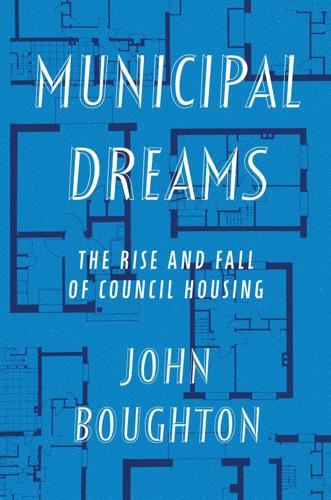
Municipal Dreams: The Rise and Fall of Council Housing
by
John Boughton
Published 14 May 2018
While they were not enforced on private developers, Labour’s Housing Minister Anthony Greenwood made it clear he saw this mandate as a significant contribution to a universal and ongoing improvement in housing quality: I think most people would agree that the Parker Morris house is a very good house indeed; and – although we can look for even higher standards in the future, since standards are always rising – there is no doubt that the objectives which we have now set represent by far the most significant improvement in housing standards at least since the war, and probably since local authorities began building houses to rent.30 Despite this, home ownership was increasingly adjudged the significant metric of progress; in fact, Labour’s own 1959 general election manifesto proposed a Right to Buy for sitting council tenants. Overall, the proportion of owner-occupied households rose from 32 per cent in 1953 to 43 per cent in 1961. That trend had its own longer-term implications for the status of council housing, but the most immediate and pressing issue was the vast numbers of British people still living in slum conditions – by some estimates 4.7 million households still lived in unfit or substandard homes.
…
By this time it was reckoned that 1.88 million council homes had been lost through Right to Buy since 1980 – around 37 per cent of the total – with just 345,000 new council homes built to replace them in the period.12 Scotland’s devolved government has halted Right to Buy in that country; similar proposals were promulgated in Wales in March 2017. As council housing households declined, the numbers renting from housing associations rose – to about 2.5 million in total. Going into the 2015 general election, the Conservatives promised Right to Buy 2; legislation which would give housing association tenants the same right to purchase their property as council tenants. Conservative strategists hoped to tap into the same reservoir of ‘aspirational’ voters which had supposedly backed Thatcher so strongly.
…
By 1989, only 12 per cent gave council housing as their preferred form of tenure.7 A survey in the mid-1980s showed that, while 74 per cent of the population thought the National Health Service was good value for money, only 42 per cent felt the same of council housing. Council housing, then, was an easy target and served as ‘the perfect symbol of the failings of the public sector’ for its ideological opponents. More broadly, it was ‘unpopular, socially stigmatising, incompetently managed and oblivious to consumer preferences’.8 Critically, of course, Right to Buy was a very popular policy among council tenants. To many, it offered independence and a step up the housing ladder – though this would be chimerical to those who lost jobs and couldn’t meet mortgage repayments as the economy deteriorated.

The People: The Rise and Fall of the Working Class, 1910-2010
by
Selina Todd
Published 9 Apr 2014
The Act also took control for council rent levels out of the hands of local authorities by demanding that they set rents at market rates, meaning that much council accommodation was immediately made far more expensive that privately rented property. At the same time, council tenants were given the right to buy their home, although it was possible for local authorities to delay or veto the implementation of this right.6 In the 1960s the housing expert J.B. Cullingworth had warned policymakers that ‘the dissatisfaction at rising rents may eventually develop into something more significant.’7 In the 1970s his prophecy came true. Council tenants experienced 23 per cent rent rises between 1971 and 1974.8 Campaigns and rent strikes erupted, many of them instigated by married women living on council estates.
…
In fact they had only briefly been unable to buy their home. The Conservatives had enshrined the ‘right to buy’ in the 1936 Housing Act. This was revoked by Bevan’s 1948 Housing Act, but Harold Macmillan reinstated the right to buy just six years later. That said, this remained a theoretical right for most tenants until the 1970s. Prior to 1972, local authorities had great autonomy over whether or not to sell council houses. Heath’s government changed this by demanding that councils give a robust justification of why they could not sell off their council housing stock to tenants. They also provided an incentive, by allowing councils to use some of the profits to build new houses for their poorest residents.
…
In 1972 Edward Heath had made it easier for council tenants to buy their homes, by insisting that local authorities considered tenants’ requests to do so. But Margaret Thatcher’s 1981 Housing Act sought to persuade council tenants to buy their homes, by offering them low mortgages which local councils were obliged to subsidize. At a time when the government was forcing councils to make huge public spending cuts, this was a highly political act. People took advantage of the Act in large numbers, primarily because it seemed to make economic sense. Ron and Edna Jones of Liverpool were among the first to buy their council house. As Edna explained, they did so because the new, subsidized mortgage available to them was ‘cheaper than rent’.

Chavs: The Demonization of the Working Class
by
Owen Jones
Published 14 Jul 2011
We've only just very recently moved to a situation where we're building more social homes per year than we're losing under the right-to-buy.' Rising demand for housing pushed prices up, encouraging disastrous house-price bubbles. Housing became increasingly unaffordable for huge swathes of the population. Millions of people were condemned to languish for years on council housing waiting lists. Little wonder that the number of homeless Britons soared by 38 per cent between 1984 and 1989 alone. The policy also drove a wedge through working-class Britain, creating a divide between homeowners and council tenants. Right-to-buy meant that the best housing stock was sold off; and it was the relatively better-off council tenants who were becoming homeowners.
…
'New tenants coming in, almost exclusively in order to meet stringent criteria, will either be single parents with dependent children, [or] people out of institutions including prisons,' explained the late Alan Walter, a lifelong council tenant and chairman of the pressure group Defend Council Housing. 'And therefore they are, almost by definition, those without work.' Many-but not all--of those who remained in council housing were tOO poor to take advantage of the right-to-buy scheme. 'A growing number of people who can afford to get out of social housing have done so, and it's then sold off to someone else not necessarily in a respectable family,' Polly Toynbee argues.
…
But she had fuelled the now widespread political sentiments that council tenants were freeloaders. Flint expressed surprise at how social mixing in council housing had declined and levels of unemployment had shot up on estates over the last thirty years. Unless she was grossly incompetent at her job, she would have known that this was the legacy of right-to-buy. The least disadvantaged tenants had bought their homes, while the Tories-followed by New Labour-had refused to build any more. That meant that the remaining, ever-diminishing most in need. According to the late Alan Walter, a lifelong council tenant and former chairman of Defend Council Housing, this demonization also has political purposes.
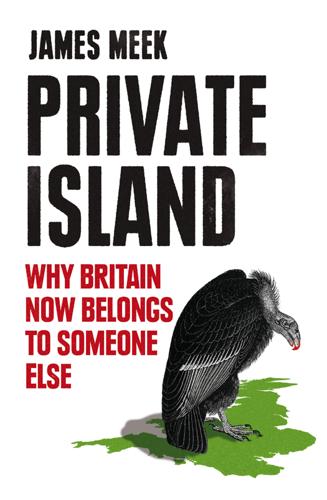
Private Island: Why Britain Now Belongs to Someone Else
by
James Meek
Published 18 Aug 2014
To understand how it came to this, you have to go back to 1979, when Margaret Thatcher began forcing local authorities to sell council houses to any sitting tenant able and eager to buy, at discounts of up to 50 per cent. It was one of those rare policies that still seems to contain in its very name the entire explanation of what it means: ‘Right to Buy’. Cherished by Tories and New Labour alike as an electoral masterstroke, it offered a life-changing fortune to a relatively small group of people, a group that, not by coincidence, contained a large number of swing voters. Right to Buy differed from the period’s other privatisations in many ways.
…
Whether councils, given the chance, could have carried out the vast renovation programme that the housing associations are successfully pursuing (few who have lived in British cities for a generation, even if they don’t live on a council estate, can fail to have noticed how much less grotty the estates look) is a question that can’t be answered. The successful renovation of 70,000 council houses carried out in Birmingham after its council tenants voted against stock transfer in 2002 suggests that they could. But housing associations are dominant now in the place council housing used to be, and as the effects of Right to Buy, increasing population and the failure of the market to build enough houses to cope with it have become apparent, successive governments have turned to housing associations to fill the gap.
…
One of the curious things about Quinn’s situation is that the government would love to give her £100,000, but she’s not prosperous enough to qualify for it. That figure is the maximum discount on the market price a council tenant who exercises Right to Buy can now claim in London. Given that her flat would be worth at least £300,000, Quinn could, in theory, buy it, sell it on and pocket the difference. But then she’d have nowhere to live; and she can’t raise the missing £200,000, because she has no money for a deposit and no way of getting a mortgage. She and her husband didn’t have a principled objection to Right to Buy. They just never got rich enough to get richer. In most people’s understanding of the world I’d be considered a homeowner, although since I have a mortgage I am, for the time being, renting it from the bank.

Home: Why Public Housing Is the Answer
by
Eoin Ó Broin
Published 5 May 2019
There was also a new £3,300 mortgage allowance for Council tenants who surrendered their tenancy in order to purchase a private house. Though similar to the discredited 1984 Surrender Grant the plan suggested that as it was not ‘a direct cash grant, the new allowance should not result in the large scale surrender’ and that it would be ‘monitored to ensure that it does not adversely affect the social stability of local authority estates’.30 There were also modest measures providing loans for house purchase and refurbishment and funds to allow Local Authorities to sell land for the building of affordable homes.
…
While the authors of the report suggest replacing the differential rent system with a form of HAP payments for Council tenants, a better mechanism would be to fund the ongoing maintenance of Local Authority properties in the same way as Government funds Approved Housing Bodies, i.e. with a monthly availability agreement payment that covers the shortfall between the differential rent level and the full economic cost of the management and maintenance of the units, including provision of a sinking fund for cyclical upgrades. While this would increase current expenditure allocations to Local Authorities, it would be cheaper than ongoing subsidised private rental tenancies such as HAP and RAS and would greatly reduce the long-term capital costs of stock maintenance.
…
This is despite important evidence to the contrary from leading social housing policy experts, most notably in Tony Fahey’s Social Housing in Ireland published in 1997 and more recently by Byrne, Norris and Carnegie in 2018.19 The arguments underpinning the dogma of mixed tenure serve to misrepresent the vast majority of Local Authority estates, which are good places to live, with vibrant communities and sustainable economic bases. It is deeply patronising to working-class communities. Fahey rightly points out that Council tenants ‘would probably resent the implication that they required an infusion of middle-class households and middle-class values in order to bring their neighbourhoods up to satisfactory standards’.20 The findings of this landmark study on social housing rightly challenged the assumptions underlying A Plan for Social Housing, and indeed all subsequent Government housing policy documents, when it concluded that There is no justification for assuming that large-scale housing provision by local authorities (or by other social housing providers such as voluntary housing agencies) is misguided or doomed to widespread failure or should be drastically scaled back or abandoned by present or future housing policy.21 Indeed, the study, which was based on extensive field research on seven social housing estates across the State, including hundreds of interviews with Council tenants, strongly recommended to Government that ‘new social housing provision should be increased to the level required to meet present need’.22 The problem with the dogma of mixed tenure, as articulated in current housing policy discourse, is that it conflates high concentrations of poverty with mono-tenure.
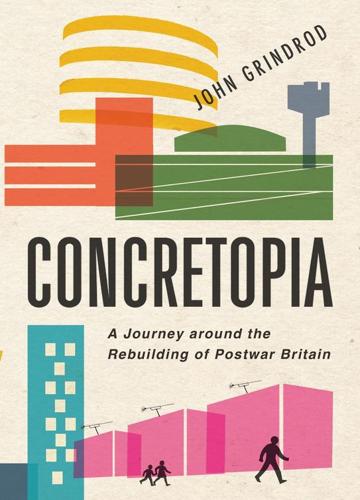
Concretopia: A Journey Around the Rebuilding of Postwar Britain
by
John Grindrod
Published 2 Nov 2013
I think the trouble will be if they sell them all off and they get sold to buy-to-let people and it’s less well-off people living in them but still really transient, so you don’t have the benefit of it being council tenants where at least they’re permanent, at least they’ve got a stake.’ Had the gentrification already begun? ‘The thing is you can’t really tell that easily because there’s a whole lot of artists wandering around who almost by definition sort of are middle class. I know there’s at least one guy on this corridor who bought his flat because it was stylish rather than because it was cheap. So I guess he’s a gentrifier. And there’s a couple of others that are renting flats – I assume they’re renting them from people who used right-to-buy to buy them – but they’re trendier than your average.
…
In Coed Eva, the neighbourhood Jo and her husband Jim had lived on in the new town of Cwmbran near Cardiff, the social mix had been encouraged by the development corporation, who’d built houses for both council tenants and private buyers. ‘Below the school field it was development corporation,’ remembered Jo, ‘and above that it was private.’ ‘In the end you want your social mix,’ explained Jim. Before the development of Coed Eva in the late sixties, the new town had embodied a much more traditional postwar socialist model of building, with little or no private ownership. ‘There was an awful lot of public housing. It’s mixed now, but it wasn’t then. It was all housing for rent.’ But then among the thousands of council houses landed smaller estates of private housing: by 1978 over a fifth of all Cwmbran’s houses were privately owned.
…
He gave permission for the scheme to go ahead, while at the same time listing hundreds of buildings in the area, which rendered the redevelopment impossible. Instead, the area was regenerated, as Edinburgh’s New Town had been. Soot and grime were scrubbed from buildings and cobbles, and the twee stalls of the re-opened market hall played host to street theatre performances while the ghosts of the long-gone market porters looked on. When the right-to-buy policy came along in the eighties those former council residents who’d fought to save the area sold up and moved on. Perhaps the most drastic piece of replanning that never came to pass in London was the inner ring roads. Abercrombie had proposed four arterial ring roads: radiating outwards from an inner ring feeding the centre of the city to a distant orbital road circling the outer suburban sprawl.

The City on the Thames
by
Simon Jenkins
Published 31 Aug 2020
Public subsidy to council-house building under Thatcher virtually dried up. Such money as was available was redirected to not-for-profit housing associations, mostly working on smaller and rehabilitated sites. For the poorest Londoners, help with housing switched to means-tested housing benefit, often paid direct to private landlords. One result was that overall state support for public housing actually rose in real terms under Thatcher, switched from house building to rent subsidizing. Money went more directly to those in urgent need. Thatcher’s granting council tenants the right to buy their homes had a number of consequences.
…
Thatcher in 1985 capped the rates of those she thought spendthrift, mostly Labour ones. This led to battles reminiscent of pre-war Poplar, between compliant and militant councillors. Some, such as Hackney and Lambeth, descended into factional chaos, with considerable help from a freelancing Livingstone and friends. Thatcher’s granting of the ‘right-to-buy’ to council tenants was furiously contested. The arguments for the policy – that the tenants were anyway de facto holders of an asset for life – was plausible, but undermined by the houses being sold at discounts of 30–70 per cent, with half the revenue going not to the councils that built them but to the Treasury.
…
B. 231 Primrose Hill 142, 157, 242, 272, 339 Prince, John 102 printing trade 26, 40, 41, 93, 206, 291–2, 306–7; see also newspapers and journalism Privy Council 53, 57, 61, 83, 92, 99 Projector, The (play) 262 prostitution 37, 62, 127, 184, 185, 188, 207, 338 Protestantism 38, 44, 47, 48, 61, 66, 88, 90, 105; see also Church of England; Reformation Proud City, The (film) 243 Prudential (finance company) 249 public transport see buses; Docklands Light Railway; railways; trams; Underground pubs, taverns and alehouses 28, 111, 180, 181, 261, 277; Black Friar 27; Elephant and Castle 3, 208; licensing hours 216 Puccini, Giacomo, La bohème 180 Pückler-Muskau, Prince Hermann von 138 Pudding Lane 75 Pugin, Augustus 137, 153–4 Pulteney, William 84 Punch (magazine) 159, 181 Putney 164, 210 Putney Bridge 113 Qatari wealth funds 294, 312 Quakers 66, 136 Quant, Dame Mary 261 ‘Queen Anne’ churches 95, 108, 136, 137, 263 Queen Anne revival architecture 170, 178, 198, 202 Queen Anne Street 123 Queen Anne’s Gate 94 Queen Street (City) 79 Queen Victoria Street 13, 14, 167, 338 Queen’s Gate 284 Rachman, Peter 271, 278 railways, development of 156–8, 165–7, 176, 194–5, 307; electrification 193, 228, 230; financing 157–8; slum clearance 167–8, 173; workmen’s trains 169, 209–10 Rainham 324 Ranelagh Gardens 108, 127 Ranters (dissenting group) 66 Rasmussen, Steen Eiler 71, 222, 231 rate equalization (of boroughs’ support grants) 191–2, 201, 202, 218–19, 225 rates (taxes) 151, 202, 289–90; see also council tax rating (of properties) 121, 159, 211, 321 rationing 238–9 Rayne, Max, Baron 245, 250 RBS (Royal Bank of Scotland) 315 Reading 251, 300 Red Lion Square 85 Redwald, King of East Anglia 17 Rees, Peter 310 referendums: mayoralty (1998) 308; EU membership (2016) 330–31 Reform Act (1832) 149–50, 155, 175 Reform Act (1867) 175–6 Reformation 2, 38, 40, 44, 50 refuse collection 162, 264, 276 Regent Street 83, 132, 133–5, 144, 147, 180, 199, 221–2, 261, 339 Regent’s Canal 134 Regent’s Park 46, 103, 132, 133, 134, 135; lake 134, 145, 225; London Zoo 135, 147; Nash terraces 134, 135–6 Reichmann brothers 293, 294 Reigate 300 Renaissance 40, 49, 51, 52 Rennie, John 145, 227 Rent Act (1957) 271, 272 Repton, Humphry 132, 133, 134, 139 restaurants 180, 200, 207, 261 Restitutus (Romano-British bishop) 12 Restoration (1660–88) 63, 67–87 Restriction of Ribbon Development Act (1935) 233 Reynolds, Sir Joshua 128 rhyming slang 161 Richard, Sir Cliff 248 Richard I ‘the Lionheart’, King 29, 30 Richard II, King 35–6, 38, 39 Richard III, King 39 Richardson (south London criminal family) 277 Richardson, Samuel 109–10 Richborough 9 Richmond 210, 230, 270; Maids of Honour Row 125 Richmond Palace 51 Richmond Park 253, 329 ‘right-to-buy’ council housing 289, 298–9 ring roads 174, 228, 242–3, 278, 279, 285; see also M25 motorway; North Circular; South Circular Riot Act (1714) 96, 98 riots: 17th century 56, 64, 68; 18th century 95–6, 116–18, 119, 128; 19th century 149, 175, 192, 193; 20th century 219, 290, 292; 21st century 317, 318–19; Middle Ages 31, 35; see also ‘mob, the’ Rippon, Geoffrey, Baron Rippon of Hexham 282 Ritz, Cesar 200 Ritz Hotel 198, 200, 220 Robert of Jumièges, Archbishop of Canterbury 22 Robson, Edward Robert 178 rock-and-roll music 248, 261 Roehampton 276; Alton estate 253 Roet, Philippa 36 Rogers, Richard, Baron Rogers of Riverside 256 Rollo, Duke of Normandy 24 Roman era 9–14, 16 Rome: foundation myth 8; sack of (410) 13, 16; planning and redevelopment 51, 77, 95, 134; Villa Farnesina 220 Romford 210 Ronan Point (tower block), collapse (1968) 267, 273, 323 Rose Theatre 52, 258 Rosebery, Archibald Primrose, 5th Earl of 191 Rosehaugh (property development company) 296 Rotherhithe 208, 242 Rothschild family 284, 310 rough sleeping see homelessness and rough sleeping Rousseau, Jean-Jacques 103, 106 Royal Academy of Arts 105, 123, 146 Royal Albert Hall 171, 199, 323 Royal Bank of Scotland (RBS) 315 Royal College of Art 284 Royal Exchange 49, 60, 74, 77 Royal Festival Hall 247 Royal Fine Art Commission 136, 314 Royal Mint 42 Royal National Theatre 247 Royal Society 49, 70, 78, 107, 116 Rubens, Sir Peter Paul 62 Ruislip Gardens 231 Runnymede, sealing of Magna Carta 29 Ruskin, John 178, 186 Russell, Bertrand, 3rd Earl 235 Russell, Lord John (later 1st Earl) 149, 175 Russell, Rachel, Lady (née Wriothesley) 100 Russell, William, Lord 100 Russell Square 139, 179 Russell Street (Covent Garden) 61 Russian immigrants 172, 207, 311 Sacheverell, Henry 96 Saddle Room (club) 261 Sadler’s Wells Theatre 181; ballet company 329 Saebert, King of Essex 17 Saffron Hill 207 Saint, Andrew 198 St Alban’s Church, Wood Street 18 St Albans 9, 10, 300 St Albans, Henry Jermyn, 1st Earl of 72, 83 St Andrew Undershaft Church 55 St Bartholomew’s Day massacre (1572) 48, 88 St Bartholomew’s (Bart’s) priory and hospital 27, 46, 176 St Brice’s Day massacre (1002) 20 St Clement Danes Church 21, 101 St Dunstan-in-the-East Church 338 St George’s Church, Bloomsbury 111 St George’s Church, Hanover Square 102, 110, 189 St George’s Circus 120 St George’s Fields massacre (1768) 116 St George’s Wharf 311, 314 St George’s-in-the-East Church 95, 189 St Giles 108, 111–12, 177; Centre Point 255–6, 257, 258, 265, 325 St Helier housing estate 223, 252 St James’s 72, 99, 108, 133, 147, 196–7, 280; clubs 137–8, 192 St James’s Church, Piccadilly 110 St James’s leper hospital 72, 85, 100 St James’s Palace 91, 97, 99, 147, 197 St James’s Park 46, 72, 85, 90, 120, 128, 144–5, 194 St James’s Square 72–3, 123, 196, 249, 333; Norfolk House 127, 227 St James’s Street 72, 137; Economist Buildings 280 St John, Knights of 27 St John’s Church, Smith Square 95 St John’s Wood 142, 172, 199, 268 St Katharine’s by the Tower (Royal Hospital and Collegiate Church of St Katharine by the Tower) 42, 82 St Katharine’s Dock 131, 140 St Magnus the Martyr Church 21 St Martin-in-the-Fields Church 61, 108, 146, 216 St Martin-le-Grand (monastery) 22 St Martin’s Lane 60, 61, 181; Coliseum 200 St Mary Abbots Church, Kensington 201 St Mary Bethlehem (priory) 28 St Mary Spital (priory) 28 St Mary Woolnoth Church 95 St Mary-at-Hill Church 80–81, 338 St Mary-le-Bow Church 39, 161 St Mary-le-Strand Church 95, 108 St Marylebone parish church 137 St Michael’s Church, Chester Square 153 St Pancras 143, 264; New Church 137; station 176, 179, 250, 283, 284 St Paul’s Cathedral: 16th and early-17th century 81; 18th century 82, 99; 19th century 165; 20th century 217, 235, 236, 241, 251, 262, 265; 21st century 310–11, 329; destruction in Great Fire 75–6, 81; Norman and medieval 27, 76; Saxon foundation 17; site 8, 11, 17; Wren’s construction 80, 81–2 St Paul’s Church, Covent Garden 61 St Paul’s Church, Wilton Place 153 St Paul’s Deanery 86, 338 St Paul’s School 46 St Paul’s station 194 St Peter’s Church, Eaton Square 137, 153 St Peter’s Church, Vere Street 102 St Petersburg 3 St Stephen Walbrook Church 80 St Thomas’ Hospital 39, 46, 176 Salisbury, Robert Cecil, 1st Earl of 54, 60, 61, 83 Salisbury, Robert Gascoyne-Cecil, 3rd Marquess of 190, 191, 192, 201, 264 Salisbury, James Gascoyne-Cecil, 4th Marquess of 220 Salmond, Alex 307 Samuel, Harold, Baron Samuel of Wych Cross 245, 249, 256, 258 San Francisco 211, 320 Sancho, Ignatius 117–18 Sandringham House 148 Sandys, Duncan (later Baron Duncan-Sandys) 270–71 SAVE Britain’s Heritage (conservation group) 284 Savile Row 106 Savills (estate agents) 320 Savoy Hotel 177, 200, 232 Savoy Palace 35 Saxons 12, 15–23, 25, 83 Scarbrough, Richard Lumley, 1st Earl of 102 Schomberg House (Pall Mall) 94 schools and schooling 46, 176–7, 178, 201–2, 216, 288; Inner London Education Authority 264–5, 288; London School Board 177, 178, 191, 192, 201 Scot, Adam 42 Scotland Yard 42; New Scotland Yard 198, 283 Scott, Baillie 210 Scott, Sir Gilbert 176, 283 seafaring and maritime exploration 48, 74, 92–3, 131, 258 Sealion, Operation (planned German invasion) 234 Second World War (1939–45) 232, 234–8, 240; Blitz 3, 77, 227, 234–8, 239, 245, 262 Seifert, Richard 258, 263, 265, 309 Selfridge, Harry 200 Selfridge’s (department store) 187, 198, 200 Sellar, Irvine 311 Senate House (London University) 227, 234 Seven Dials 283, 338 Seven Years War (1756–63) 115 Sevenoaks 300 Severn (river) 324 sewers and sewerage 10, 39, 60, 73, 79, 115, 126, 154–5, 162–5, 176, 303; night-soil collection 33, 58 Seymour family 45, 124 Shadwell 42, 82, 121 Shaftesbury, Anthony Ashley-Cooper, 7th Earl of 166–7 Shaftesbury Avenue 134, 177 Shakespeare, William 52, 57, 108, 110, 159, 182 Shard (32 London Bridge Street; skyscraper) 310, 311–12, 314, 332 Shaw, George Bernard 191, 200 Shaw, Norman 199; Bedford Park 179; Lowther Lodge 199; New Scotland Yard 198, 283; Piccadilly Hotel 199, 221–2 Sheffield 149, 318 Shell Building (South Bank) 257 Shelley, Percy Bysshe 183 Shellmex House (Strand) 221 Shepherd’s Bush 170, 194, 280 Sheppard, Dick 216 Shillibeer, George 144, 205 ship money (tax) 61 shipbuilding 42, 175, 206 shops and shopping 60, 101, 128, 180–81, 200, 222, 245, 261, 283, 330 Shore, Peter, Baron Shore of Stepney 292 Shoreditch 39, 52, 82, 165, 166, 300, 306, 307, 339 Siege of Rhodes, The (opera) 67 Sikhs 275 Silkin, Lewis, 1st Baron 244, 251 Simon, Sir John 162 Sinclair, Iain 301, 307–8 Singapore 313, 320 Sixtus V, Pope 77, 134 Skylon 247 skyscrapers see tall buildings slaughterhouses 42, 162–3 slavery and slave trade 94, 118, 130; anti-slavery and abolition 124, 136, 151 Sloane, Sir Hans 104 Sloane Square station 168 Sloane Street, Holy Trinity Church 198 slum clearance: London 115, 166–7, 173, 177, 197, 202, 223, 266, 271; Paris 173 Smirke, Sir Robert 137, 145; British Museum 145, 250 Smith, Henry 171 Smith, Seth 140 Smith, Sydney 163 Smith, Zadie, White Teeth 301 Smith Square 94; St John’s Church 95 Smithfield 27, 86, 189; market 60, 162–3, 255; plague pits 33; St Bartholomew’s priory and hospital 27, 46, 176 Smiths of Surbiton, The (serialized novel) 211 Smithson, Alison and Peter 267, 279, 280 Smithsonian Institute 329 smog 259 Smythson, Robert 52 Snow, John 163, 164 Soane, Sir John 137, 145–6; Bank of England 146, 221, 290 social housing 186–8, 288, 298, 299, 321–3, 328; see also ‘affordable’ housing; council housing Society for Improving the Condition of the Labouring Classes 187 Soho: 17th century 84, 88; 18th century 107, 110, 134; 19th century 147, 163, 172; 20th century 206, 207, 256; 21st century 306, 338; topography 8 Soho Square 71; Carlisle House 108 Somers, Charles Cocks, 1st Baron 143 Somers Town 143 Somerset, Edward Seymour, 1st Duke of 45 Somerset House 45, 122, 123, 177, 197, 221, 284 South Circular (road) 228, 242, 285 South Kensington 170, 171, 179, 253; museums 170–71, 199 South Sea Company 92, 131; ‘bubble’ (1720) 98, 102, 158 Southall 275 Southampton 32, 157 Southampton, Thomas Wriothesley, 4th Earl of 72, 83, 100 Southend-on-Sea 251 Southwark: 16th century 51, 52–3; 17th century 63, 75, 80; 18th century 116, 120, 121; 19th century 120, 185, 187, 194, 336; 20th century 210, 242, 253, 258, 269; 21st century 185, 306, 311, 332, 336; Middle Ages 24, 28, 41, 42, 332; prehistory 8; Roman era 9, 11; see also Borough High Street; Borough Market; Shard Southwark, Borough of 299, 300, 311, 322 Southwark Bridge 145 Southwark Cathedral (formerly Southwark priory church) 28, 63, 332 Southwark station 294 Spanish Armada (1588) 48, 89 Spectator (magazine) 105 Speer, Albert 240 Spencer, Elizabeth (later Countess of Northampton) 143 Spencer, Sir John 143 Spencer House 147 Spenser, Edmund 52 Spire London (formerly Hertsmere House, 2 Hertsmere Road; skyscraper) 313–14, 324 Spitalfields 82, 88, 95, 333; Christ Church 95; Folgate Street 107–8; Fournier Street 275; market 163; St Mary Spital priory 28 squares, design and development of 70–73, 86, 102–4, 120, 123–5, 139, 230, 259 Stafford House see Lancaster House Staines 8 Stalin, Joseph 218, 240 Stamford Hill 207 stamp duty (property tax) 321 Stansted airport 291 Staple Inn (Holborn) 76, 86 Star Chamber 62, 83, 99, 288, 333 Steele, Sir Richard 105 Steelyard 32 Stephen, John 261 Stephen, King 28 Stephenson, George 156, 157 Stepney 95, 121, 143, 185, 207, 208, 218, 219, 243, 251 Sterne, Laurence 117 Stevenage 251 Stevens, John, Baron Stevens of Kirkwhelpington 308 Stirling Ackroyd (estate agents) 324 Stjernstedt, Rosemary 253 Stockholm 320 Stockwell 194 Stoke Newington 125, 307 Stoll-Moss empire (theatre company) 200 Storey, David 261 storm see Great Storm of 1987 Stow, John 54–5, 94; Survey of London 54, 56 Strafford, Thomas Wentworth, 1st Earl of 63 Strand 8, 23, 41–2, 60, 127, 146, 155, 281–2; Cecil Hotel 177, 221; Essex House 84; St Clement Danes Church 21, 101; St Mary-le-Strand Church 95, 108; Savoy Hotel 177, 200, 232; Shellmex House 221; Strand Palace Hotel 232; theatres 181, 182; see also Adelphi buildings; Somerset House Stratford 216; Olympic Park 316, 319, 327, 328–9, 330 Stratford East Theatre Royal 262 Strawberry Hill House 152 Streatham 17, 317 street lighting 120, 126, 147, 176, 184, 201 strikes see industrial unrest Stuart, James ‘Athenian’ 124 suburban sprawl 3, 205, 208–12, 229–30, 231–3 Suetonius, Roman governor 10 Sullivan, Sir Arthur 182, 200 Summerson, Sir John 81–2, 121–2, 135, 137, 143–4, 158 Surrey Docks 131 Sutherland, George Sutherland-Leveson-Gower, 5th Duke of 220 Sutton 223, 230 Swallow Street 133 Swan & Edgar (department store) 180 Swears & Wells (shop) 180 Swein Forkbeard, King of Denmark 20 Swift, Jonathan 72, 98, 107 swimming pools 201, 213, 225 Sydenham 170, 171, 182, 230 synagogues 229, 275 Syon House 112, 123 Tacitus 9 tailors and clothes manufacturing 82, 206, 245, 261 tall buildings: 1950s 252–5, 257–8; 1960s and 1970s 255–6, 257–8, 265–8, 280, 310, 322–3; 1980s and 1990s 293; 21st century 290, 310–14, 316, 324, 325–6, 327–8, 332 Tallis, John, London Street Views 156, 199 Tamworth 18 tanneries 42, 206 Tate Gallery 202 Tate Modern 303 taxis and hackney carriages 67, 167, 205 Taylor, A.
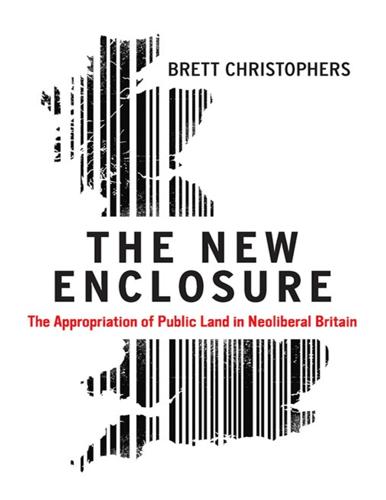
The New Enclosure: The Appropriation of Public Land in Neoliberal Britain
by
Brett Christophers
Published 6 Nov 2018
Watt, ‘How the MoD’s Plan to Privatise Military Housing Ended in Disaster’, Guardian, 25 April 2017. 3 Ibid. 1 Council tenants receiving Housing Benefit are not prohibited from exercising their Right to Buy; indeed, a study carried out in 2016 found that 16 per cent of 4,538 Right to Buy sales by ten local authorities had been to tenants in receipt of this benefit. See P. Apps, ‘16% of RTB Purchasers “On Housing Benefit”’, Inside Housing, 21 June 2016. 2 Communities and Local Government Committee (10 February 2016, HC 370: para 11), ‘Housing Associations and the Right to Buy’. 3 Meek, Private Island,, p. 193. 4 P. Apps, ‘Revealed: 40% of Ex-Council Flats Now Rented Privately’, Inside Housing, 14 August 2015. 5 N.
…
For one thing, certain public-sector bodies have been stripped of various powers and responsibilities that were formerly within their purview, and which by their nature are land-use-intensive. The most prominent and important example is of course local authorities’ responsibilities in relation to housing.1 Until the early 1980s, Britain’s local authorities were empowered and expected to build and manage council housing, and they did so on a vast scale (see Chapter 2). But that all changed when Thatcher came to power. Because housing was no longer considered part of the local state’s remit, council housing and the land it occupied became, in principle, ‘surplus’, and thus eligible for disposal under the famous Right to Buy program. This was not an instance of the state relinquishing property through efficiency gains, but through being throttled – by itself (a dynamic that Jamie Peck has memorably described in another context as ‘self-discipline descending into auto-evisceration or incapacitation’).1 And as Sir Michael Lyons observed in his influential 2014 Housing Review, it was not just the Thatcher administration that did the throttling.
…
From the early 1980s until 2012, council house finance was strictly controlled by central government, and this period represented one long, painful squeeze as a combined result of restraints on borrowing by local authorities, limits on their ability to retain the proceeds of asset sales (see Chapter 4), restrictions on rent increases, and ‘negative subsidy’ payment obligations.4 All of this, as Meek observes, ‘encouraged’ local authorities lacking the funding required to maintain their existing stock – let alone to build new social housing – not only to sell to tenants under Right to Buy, but also to transfer stock to newly created housing associations, which, financially, are much more favourably positioned, but whose ability to build at social rents is very limited.5 While 2012 saw the introduction across local government of a new self-financing system for social housing that theoretically enables local authorities to borrow against rental income – within ring-fenced Housing Revenue Accounts – to finance investment in existing stock and/or in new construction, the reality has been, at best, underwhelming.

Tenants: The People on the Frontline of Britain's Housing Emergency
by
Vicky Spratt
Published 18 May 2022
From the Second World War until 1980, this country built an average of 126,000 social homes every year. In 2020, we only managed to build 6,463 social homes; but in the same period, more homes were lost through Right to Buy. Right to Buy allowed council tenants to buy their home from the state with a discount of 60 or 70 per cent on its full market value (depending on the length of their tenancy). This was politically useful for the right. However, it is often, perhaps wilfully, forgotten that the enthusiasm for Right to Buy was shared by politicians on both the right and the left. A less heavily discounted version of this policy appeared in the Labour Party’s manifesto in 1959.
…
But social housing’s gone to pot, they sold it all with Right to Buy, all the council houses have gone. I grew up in one and now our kids live in one but it’s a mess and owned by a guy who doesn’t care.’ Clear-sighted, Dan had cut through the emotion of his family’s situation. If the British dream is achieving homeownership, this is a nightmare. Once again, Right to Buy, a policy intended to help people achieve the holy grail of housing stability, owning a piece of the world for themselves, has backfired. ‘Effectively, I’m a victim of a policy that helped my mum because she bought our house in Salford using Right to Buy,’ Dan added. ‘If all the council houses were still there, there wouldn’t be this three-and-a-half-year wait, or whatever we’re looking at, while we have to keep paying extortionate private rent.’
…
They write that voluntary (not as a right and unsubsidised) sales grew in the 1950s: 5,825 in May 1956 alone. Labour’s manifesto, then, merely crystallised the idea. By 1972 the Conservative environment secretary, Peter Walker, declared at his party’s conference that the ability of council tenants to buy their homes was a ‘very basic right’, and that they should be offered a 20 per cent discount on the market price. ‘for most people, owning one’s house …’: Aled Davies, ‘“Right to Buy”: The Development of a Conservative Housing Policy, 1945–1980’, Contemporary British History 27:4 (2013), 421–44. ‘We shall also ensure that 100 per cent …’: Conservative Party, Conservative General Election Manifesto 1979.

The Fields Beneath: The History of One London Village
by
Gillian Tindall
Published 1 Oct 2002
East Kentish Town has, by good luck, avoided such obvious ghettoisation. Here a whole grid-pattern of streets was initially bought by the local authority for demolition, but a belated change of heart meant the terrace houses were then rehabilitated as flats and maisonettes for Council tenants (see pages 231–2). These proved very popular, with the inevitable result that since the right-to-buy legislation of 1980, many of the properties have passed out of the Council’s stock of homes and into private ownership. They have often been sold on subsequently (something that the advocates of Council house sales apparently failed to envisage) and so the social mix is changing again, with the arrival in these streets of prosperous middle class youngsters starting out in life, or of older single people with some equity.
…
Many estates, indeed, are as much unknown territory to people living in the adjacent streets as if they were in another neighbourhood altogether. But another important divisive factor is the constraints placed upon council tenants, the petty regulations about door-painting and petkeeping, the general lack of real privacy despite the much vaunted ‘selfcontainment’. Few people would be council tenants, at least not in a flat, if they had any financially feasible alternative, and it is significant that vandalism is far worse on estates than it is in the more mixed social communities of the streets. If you live in a house in a street then you are of the community of that street and, by extension, the whole area, whether you occupy a whole house or a self-contained basement flat or two rooms and a shared bath on the landing.
…
It is a moot point whether, had public authorities not attempted to control the situation so heavily since 1945, but had allowed the traditional laissez faire system of private landlordism to continue, the result today would on balance be better or worse. It would certainly be different. One change of council policy in the last few years in Camden is, however, doing much to bridge the widening gulf between council tenant and owner-occupier. Many of the houses originally acquired in the early 1960s with a view to demolition are now being done up and re-let to council tenants, which pleases both the prospective tenants and the middle-class conservationists. It may be that time will expose certain follies in this policy too, and certainly it has its critics (‘Throwing good money after old bricks’).
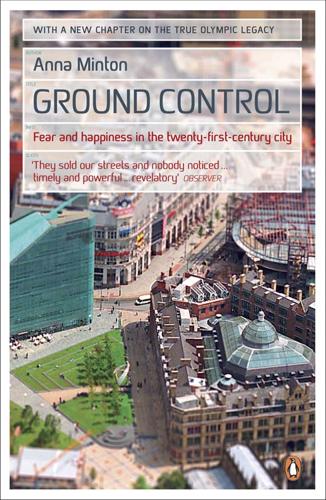
Ground Control: Fear and Happiness in the Twenty First Century City
by
Anna Minton
Published 24 Jun 2009
But the amount of social housing built has plummeted, and is even less than when New Labour came to power, averaging 11 per cent of all new homes since 2002, compared to 46 per cent in 1980 and 15 per cent in 1989, when Thatcherism was at its height.22 Right to buy killed off councils’ ability to build more public housing and from this point on, first under the Conservatives and then more aggressively under successive Labour governments, the market began to enter every aspect of housing policy, each policy change bringing with it its own impenetrable jargon. First off was the introduction in 1986 of ‘stock transfer’, which oversaw the ‘transfer’ of millions of council homes from local authorities to voluntary-sector housing associations, also known as ‘Registered Social Landlords’, or RSLs. This is when council housing underwent its first major linguistic change and confusingly started to be called ‘social housing’.
…
Communities & Local Government Housing Research & Statistics, Live Tables, Table 241: ‘Permanent Dwellings Completed By Tenure, United Kingdom, Historical Calendar Year Series’ 18. The United Nations Convention on Human Rights 1948 enshrines the right to adequate housing. 19. ‘Council tenants will have “right to buy”’, BBC, On This Day, 20/12/79 20. Holmans, A., Monk, S. & Whitehead, C., Homes for the Future, Cambridge Centre for Housing and Planning Research, University of Cambridge, Shelter, 2008 21. Ibid. 22. Housing Completions in Great Britain, Communities & Local Government Housing Research & Statistics, dated 30/5/08.
…
From the end of the First World War until Mrs Thatcher came to power, public housing, which was once simply called council housing, provided housing for a wide range of people, more than a third of whom were on above-average incomes. That’s in sharp contrast to today where, like the public housing ‘projects’ of the US, public housing is seen as housing of last resort, places where two thirds of tenants are unemployed and on benefit. When the Conservatives came to power, they not only stopped building, they also famously introduced new legislation giving council-house tenants the ‘right to buy’ their homes, with the help of discounts on the market value of the property of up to 50 per cent.
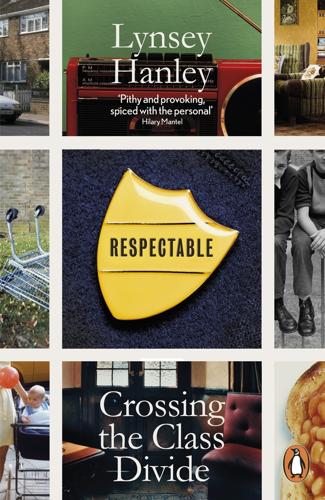
Respectable: The Experience of Class
by
Lynsey Hanley
Published 20 Apr 2016
Second, through negative propaganda, in tacit collusion between government and newspaper owners, which sought to isolate the badly off and the bolshy from an upwardly mobile, consumerist working class. Third, through populist policy-making: the Right to Buy, which divided local authority tenants into the ‘aspirational’ and the ‘non-aspirational’ depending on whether or not they bought their council house, being a prime example. The idea that working-class respectability no longer exists appeals to people who believe that the social and political changes of the last thirty-five years have sorted the wheat from the chaff.
…
The outer wards of Nottingham, containing estates built to house workers at local pits and textile factories, are among those in the country sending the fewest young people to university. Most estates are no longer half-empty but still suffer from geographical isolation and, increasingly, the effects of Right to Buy combined with those of Buy to Let, where former council homes are bought by private landlords who are unconcerned with maintenance or neighbourhood stability. Most council tenants may be in work, but receive such low wages that they cannot survive without housing benefit. The geographer Danny Dorling notes that across England as a whole there are plenty of houses with many spare bedrooms, but because they tend to be owned privately and inhabited by the well-off, the government doesn’t consider them ‘spare’ in the way that they feel free to regard bedrooms in the social sector as ‘spare’ and therefore liable to be sanctioned.5 In London, against an opposing trend elsewhere in the country for once-grand family homes to become nurseries and care homes, mini-mansions which were converted into flats mid-century are being turned back into single family homes, with multiple en-suites, live-in nanny quarters and two-storey basements to house the gym, wine cellar and cinema.
…
The majority culture in Britain favours owning your own home, even though it has become less, not more common to do so. Many who favour renting, because of the flexibility it offers, eventually make the decision to buy a home if they can afford it simply because private renting in Britain is expensive, inconvenient and legally biased towards landlords as opposed to tenants. Some council tenants who believe that, in an ideal world, the Right to Buy should not exist have nevertheless bought their homes because they recognize the stability and the possibility of economic advancement it brings. In my experience, ‘getting on’ has meant a constant assessment of what is important and what isn’t, in order to avoid having to swallow a lot of bullshit related to notions of consumption and distinction.
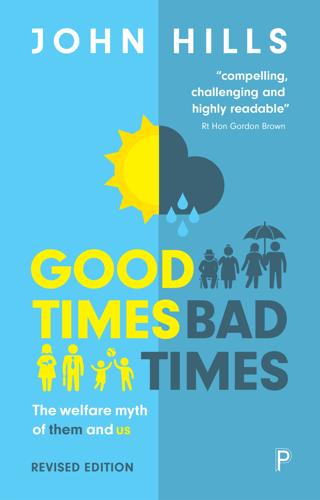
Good Times, Bad Times: The Welfare Myth of Them and Us
by
John Hills
Published 6 Nov 2014
As this chapter discusses, however, these rules had been set to change from 2016, but this has now been delayed to 2020. But it could have been different for them. With a bit more capital or ability to borrow at the right moment, they might have been able to buy their council house at a very substantial discount. A 50 per cent Right to Buy discount in the 1990s on a property now worth, say, £120,000 would effectively have represented being given equity of £60,000 today. And capital tied up in housing would not affect means-tested benefits or assistance with care (if the other partner is still at home).
…
In a surprise move in the 2016 Budget, though, the new Conservative government said that a new ‘Help to Save’ scheme with a very similar structure would be introduced by 2018. Rather than these short-lived schemes, however, by far the most important example of public policy boosting wealth, beyond the tax advantages described above, is the Right to Buy council (or former council) housing at a discount. These accumulated discounts now represent perhaps £150–200 billion, or about 3–4 per cent of all non-pension wealth.66 In the other direction, recent and future students face escalating debt from student loans, albeit debt of a particular kind that they only have to repay when earnings are above a certain level, and which many will never repay in full.
…
By contrast, the £6,000 of cash savings that Jim and Tracy had managed to accumulate had not been so favourably treated by the tax system, and if this sum had been a little higher, they would have been penalised at times when they claimed benefits. There is some luck in this – if they had been in a position to exercise the Right to Buy their council house in the 1990s, they would have been considerably helped by the system. The sums involved when one looks at wealth are far greater than those we normally think about in terms of annual incomes. However, the way policy relates to it is also far less coherent, treating what are inherently similar things (ways of saving or kinds of asset) in very different ways, and often benefiting the already advantaged most and reinforcing inequalities.
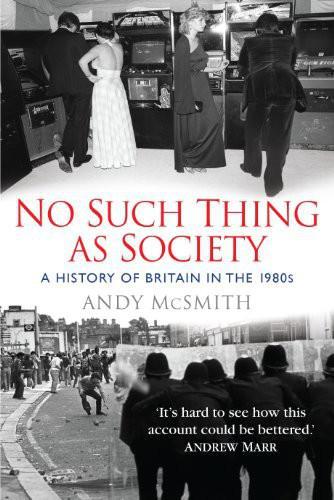
No Such Thing as Society
by
Andy McSmith
Published 19 Nov 2010
For years, there had been tension between council tenants who aspired to be property owners, and councillors – not necessarily Labour councillors – who argued that their duty to house the homeless required them not to deplete their stock of council housing. The Thatcher government cut through this argument by forcing councils to sell, at discounts of up to 60 per cent, and banning them from using the proceeds to build new council properties. They had to use it to repay debt. Norwich Council already ran a scheme that gave tenants the right to buy newly built homes, which preserved the stock of council houses, but the council’s attempt to fight the legislation in the high court brought them up against the wholly unsympathetic Lord Denning, Master of the Rolls.
…
In Conservative-run Westminster, the council leader Lady Porter, who was one of Britain’s richest women (as the daughter of the founder of Tesco), was illicitly arranging for council tenants to be shipped out of marginal wards to be replaced by owner-occupiers, who were assumed to be more likely to vote Conservative. Some of the council tenants were decanted into a tower block infested with asbestos. When the scandal came to light in 1991, Lady Porter and others were ordered to pay surcharges originally set at £21m. The government’s first assault on the authority of local councillors was the legislation compelling them to sell council houses to any tenant who wished to buy. For years, there had been tension between council tenants who aspired to be property owners, and councillors – not necessarily Labour councillors – who argued that their duty to house the homeless required them not to deplete their stock of council housing.
…
Child benefit and pensions would also be substantially increased. Unnecessary car journeys were to be discouraged by abolishing the tax disc and making up the lost tax through higher petrol duty. The number of prisoners was to be reduced through lower sentences for non-violent offences. There was to be a huge programme of council-house building and repairs. Local authorities were to be given more powers than ever before, including in some cases the power to convert private schools into state schools. The charitable status enjoyed by Eton and other public schools was to be abolished, along with everything that the upper classes seemed to enjoy most, including corporal punishment (then still practised in schools), the House of Lords and fox-hunting.

Show Me the Bodies: How We Let Grenfell Happen
by
Peter Apps
Published 10 Nov 2022
Thatcher believed housing should be provided by the market, not the state. Her reforms choked the power of councils to invest in the maintenance of the hundreds of thousands of council homes built by Tory and Labour governments in prior decades. Their condition started to deteriorate. At the same time, the Right to Buy was introduced – allowing council tenants to buy their homes at a discount. Homes were sold to the tenants and sold again at a profit. Many became the property of private landlords, let out at far higher rents than the council would have charged. This happened across the country, but it was particularly noticeable in North Kensington, where residents of the council estates, which were being allowed to fall into disrepair, lived just streets away from some of the wealthiest, most exclusive addresses in the country.
…
Amid the concerns that the building was not being properly maintained, fears mounted that the tower was no longer a safe place to live. These came to a head in 2010, when a fire started in one of the communal areas. ‘LET’S HOPE OUR LUCK HOLDS AND THERE ARE NO FIRES IN THE MEANTIME’ Shah Ahmed and his wife Sayeda moved into a flat on the fifteenth floor of Grenfell Tower as council tenants in 1992. In 1999, they used the Right to Buy scheme to purchase their flat and become leaseholders. Shah had long been concerned about the standard of service he and the other residents were receiving and had lodged multiple complaints about windows, emergency lighting and the spiralling cost of the ancient communal heating system.
…
She was flamboyant and outgoing and she loved to dance. Nick thought she was out of his league. After the discos, they would go back to her flat in Grenfell Tower with a group of friends and play cards and listen to music. Slowly they fell in love, and Nick moved himself in ‘sock by sock’. They bought the flat through the Right to Buy scheme in 1994. In 2000, they finally married, having been a couple for sixteen years. Popular among the Lancaster West community and known throughout west London’s Spanish community, Nick and Pily’s flat was open to everyone. It was always full of Galician music which Pily and her parents would sing as well as reggae which they all loved.

Big Capital: Who Is London For?
by
Anna Minton
Published 31 May 2017
Since the 1980s, it has been steadily removed from the system, through the combination of Right to Buy, which saw the sell-off of 2 million council homes, and Buy to Let, which has resulted in 40 per cent of those former council homes now being owned by private landlords who rent them out for three and four times the money. During the 1980s a decision was taken to cease building housing for those on lower incomes and to create instead a system whereby housing benefit ‘would take the strain’. The combination of the decision to stop building council housing and Right to Buy shifted social tenants into private rented housing. It is one of the reasons why we have such a shortage of affordable homes.
…
‘There are particularly large concentrations of council-owned land in inner London and this is some of the highest-priced land in the world … [The] local authority planning regime has got to adapt properly to the potential for [market-priced rent] developments.’24 A key point Adonis makes is that although people have bought their own homes that does not affect the council’s right to demolish. ‘It is important to understand that local authority development rights are unaffected by thirty years of “Right to Buy”, which has transferred leaseholds but not freeholds. They do not therefore undermine the power of local authorities – or housing associations … – to redevelop estates,’ the report states.
…
MIPIM UK 2015: Conference & Event Programme, Wednesday 21 October 2015. Quoted in Minton, Anna, ‘Developers at London’s property fair are plotting how to demolish our homes’, Guardian, 21 October 2015 30. Moore, Slow Burn City 2. THE FINANCIALIZATION OF HOUSING AND PLANNING 1. BBC, ‘On this Day – 20 December 1979: Council tenants will have “right to buy” ’ 2. House of Commons Library Welfare Expenditure and Savings Tool (WEST), selecting ‘Housing Benefit’, ‘Updated’ and ‘BE & C tables’ options 3. Graham, Stephen, Vertical, Verso, 2016 4. Carlyon, Tristan, ‘Food for thought: applying house price inflation to grocery prices’, Shelter, February 2013 5.
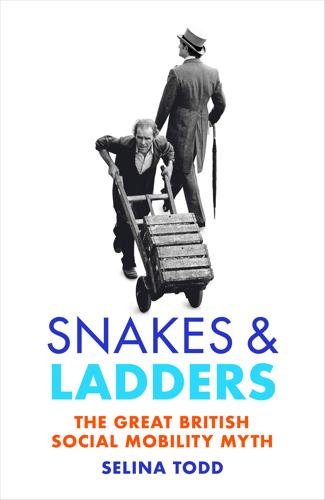
Snakes and Ladders: The Great British Social Mobility Myth
by
Selina Todd
Published 11 Feb 2021
Those who did buy shares in the newly privatised utilities could not afford to buy enough to make any significant difference to their living standards.29 Far more people became home owners than shareholders. The 1982 Housing Act ushered in ‘Right to Buy’, obliging local authorities to allow tenants to buy their homes and to offer subsidised mortgages to help them do so. ‘It will give more of our people that freedom and mobility and that prospect of handing something on to their children and grandchildren’, the prime minister said of her scheme.30 The popularity of Right to Buy suggested many agreed. In 1981, 58 per cent of housing in England and Wales was owner-occupied and 29 per cent was council housing. By 1996, 67 per cent of the housing stock in England and Wales was owner-occupied, and just 18 per cent was council housing.31 But a major study of new homeowners revealed that most did not become wealthier by doing so.
…
During her childhood her father, whose trade was becoming obsolete, was able to move to a well-paid desk job ‘due to the advent of computers’.38 This was just the start of the Young family’s rise up the social ladder. Like thousands of other council tenants, they took advantage of Thatcher’s hugely popular right-to-buy initiative. Lucy Young’s parents were among those who contributed to this change. She grew up knowing how proud they were of becoming ‘homeowners due to being able to buy their council house’. The Youngs’ home was in an increasingly desirable part of the capital and its value soared. Lucy was aware that her family ‘moved very much to the middle-class strata [sic] from a working-class start.’39 Men who had got into management in the financial services, or the more lucrative and prestigious professions, also did well.
…
Concerned that ‘“the rents were going up”’, the Browns bought their home in the early 1980s. A couple of years later they moved away from the estate where they’d lived, because the tenants of the council houses that remained were changing – ‘“problem families”’ were being moved in as unemployment rose and the council (faced with a housing shortage as more affluent tenants bought their homes) could only accommodate those with very serious needs.33 The Browns appeared to be one of Right to Buy’s success stories. By the end of the 1980s they lived in an affluent suburb of Birmingham. They’d been able to move there thanks to Mr Brown’s ‘promotion to a manager’.
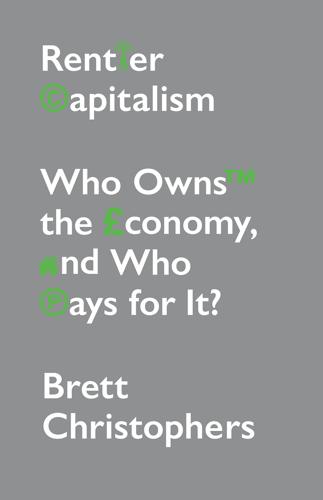
Rentier Capitalism: Who Owns the Economy, and Who Pays for It?
by
Brett Christophers
Published 17 Nov 2020
The London Metropolitan Police force is just one of many public bodies to have made significant sales of ‘surplus’ land and property in the post-crisis austerity period – in its case, almost £1 billion worth, including twenty-four police stations, between 2011 and 2017 – specifically in order to soften the blow of budget cuts.44 Local authorities and NHS trusts have been doing likewise.45 Perhaps the most significant category of public land sold at less than market value under conditions of compulsion is housing land, under the Right to Buy. In 1980, the Housing Act summarily removed local-authority discretion over whether council housing should be sold.46 In this case, though, it is not such compulsion – councils’ obligation to respect tenants’ right to buy – that explains the low prices paid; rather, discount is written into the very fabric of the policy.
…
An important 2003 report on Right to Buy explains: There is considerable evidence that the Right to Buy is being abused for profit in some areas. This includes the letting of newly purchased dwellings for profit, often with the involvement of an ‘incentive company’. Such companies often lease the property for the first three years, after which point the property passes over from the former council tenant to the company. This is done in order to circumvent the requirement to pay back the rebate granted by the Council if a property is re-sold within three years of the Right to Buy having been exercised.
…
Since 1979, around 1.9 million properties have been sold under the Right to Buy scheme in England.47 Let us assume an average discount against market value of 40 per cent, which is fairly conservative; other than during the period 2003–12, average discounts have consistently been above that level.48 If, for these 1.9 million properties, we assume an average market value at the time of sale, in today’s prices, of £100,000 (again, this is conservative: the halfway point of Right to Buy in terms of dwellings sold was reached in 1989– 90, and the average UK house price in today’s prices had already passed £100,000 by 1986), then the cumulative absolute discount on these property sales, in today’s terms, is in the region of £75 billion.49 It is true that not all of this value has accrued to rentiers: many Right to Buy homes have remained in owner-occupancy, and many of those now in the private rental sector will no doubt have got there through sale by former council tenants after a seemly period of time. Nevertheless, the evidence suggests that much of the government giveaway has indeed gone into the pockets of rentiers. Large numbers of Right to Buy homes have been let more or less immediately at market rates.50 The rentier in such cases might be the former council tenant herself; it might be a company standing behind that individual;51 or it might be a landlord to whom the ex-tenant has ‘flipped’ the property at a profit: selling, of course, is the more immediate way for rentier-minded ex-tenants to monetize the discounts they have been granted.
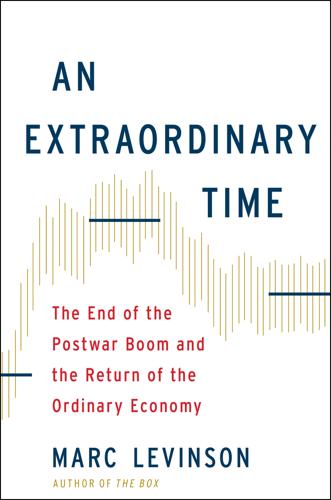
An Extraordinary Time: The End of the Postwar Boom and the Return of the Ordinary Economy
by
Marc Levinson
Published 31 Jul 2016
In 1979, her government introduced a bill granting tenants in housing owned by local authorities, known as “council housing,” the right to buy their units at prices far below market value. This was privatization for the masses: three in ten British households lived in publicly owned housing. Those who had been council tenants for over twenty years could buy their house or apartment at a 50 percent discount; if they were uncertain, they could pay a hundred-pound deposit and preserve their right to buy at a fixed price for two years. The local authority that was selling the property was obliged to offer a mortgage.18 Right to Buy, as it was known, targeted a core Labour constituency.
…
Most of the council estates had been built under Labour governments, and their residents were reliable Labour voters. By the spring of 1983, two-and-a-half years after Parliament enacted Right to Buy into law, 274,650 council tenants in England alone had acquired their homes. A poll showed that 59 percent of people who had voted for Labour in 1979 and subsequently bought their own homes would not vote for Labour again. Right to Buy was privatization conducted at a level that made sense to average people. As it went forward, gathering public support, the political obstacles to privatizing state-owned companies fell away.19 Privatization of state-owned enterprises was not a new idea in 1979.
…
Several years of strong growth in the second half of the 1980s followed several years of poor economic performance, but the notion that the Conservative turn restored the British economy to rude health is simply not right.29 Some people in Great Britain fared well thanks to Thatcher’s policies. Over a million working-class families had the opportunity to become homeowners thanks to Right to Buy, although large numbers of them had to sell after discovering that homeownership required more than their incomes would permit. Those with capital prospered in the friendlier investment climate, and those seeking to start businesses found their paths eased by the state’s new interest in entrepreneurship.
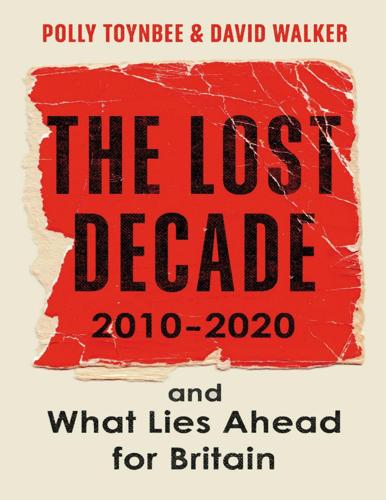
The Lost Decade: 2010–2020, and What Lies Ahead for Britain
by
Polly Toynbee
and
David Walker
Published 3 Mar 2020
To secure more genuinely affordable dwellings for rent would have meant abandoning the flagship Thatcher policy of selling off council homes at a high discount. Instead, right to buy was strengthened. In 2012 discounts were increased, and in 2016 powers were taken to force housing associations to sell cheaply to their tenants. Once council tenants bought their homes, many resold for a high profit; the new buyers filled them with students or transients at higher rents, upsetting previously stable communities of long-term residents. In London, 40 per cent of dwellings sold under right to buy had found their way back into the rental market, under private landlords this time, so councils were paying far higher rents to house homeless people.
…
None of this laid a single brick, pointed out Simon Bowkett of the charity CoLab Exeter, ruefully. The stock of affordable dwellings was falling. Homes available for social renting dropped by 166,000 from 2012 to 2016, the Chartered Institute of Housing reported, as dwellings were sold under the right to buy and not replaced; a further 370,000 dwellings were predicted to go by 2020. Social renting from councils and non-profit housing groups had fallen from 30 per cent of tenures to 17 per cent. The government gave up on anything resembling coherent policy. Entire town centres were given over to students in places such as Durham, affecting locals, their children and the commercial ecology.
…
Leicester’s stock of 38,000 council dwellings had fallen to 21,000 through the enforced sales; now there were 6,000 people on the city’s waiting list for a council tenancy. The only homes the council could afford to build were for private sale. Sir Peter Soulsby, the city’s Labour leader, said, ‘At the very least right to buy ought to be suspended in cities like Leicester until we have dealt with the housing crisis.’ Councils showed enterprise by creating arm’s-length companies that were able to borrow outside the usual restrictions. Eventually, the meagre numbers – only 1,900 new council dwellings completed in 2015–16 – proved unacceptable even to ministers.

The Corruption of Capitalism: Why Rentiers Thrive and Work Does Not Pay
by
Guy Standing
Published 13 Jul 2016
The share of social housing continued to decline, spurred by the coalition government’s decision to increase the ‘right-to-buy’ discount. The number of households renting from private landlords more than doubled between 2001 and 2015 to 5.4 million, a fifth of all households. By 2025, a quarter will be renting privately, according to predictions by PwC, the accountancy firm.31 For those aged twenty to thirty-nine, ‘Generation Rent’, a majority will be doing so. The number of landlords has also increased, from 1.5 million just before the financial crash to over 2 million. They own 5 million properties, including more than a third of all former council houses sold under the ‘right-to-buy’ programme.
…
It has stoked demand for homes to buy, raising prices further, while the supply of affordable properties is dwindling, worsened by extending the ‘right to buy’ to housing associations and forcing local councils to sell their most valuable properties. The subsidies help the better-off with the wherewithal to start on the housing ladder, magnifying inequality. The ‘help-to-buy’ scheme, introduced by the coalition and expanded in 2015, has been billed as the biggest home ownership programme since Thatcher introduced the ‘right to buy’ for council houses. The £22 billion scheme, which runs to 2020, comprises interest-free loans and a subsidised savings account (Help-to-Buy ISA) for a deposit to buy new-build homes up to £250,000 (£450,000 in London) and mortgage guarantees to buy homes up to £600,000.
…
In Britain and elsewhere, low interest rates and tax breaks have propelled property prices to levels that have put home ownership out of reach for many and, coupled with the abolition or erosion of rent controls, generated an increasingly expensive private rental market. Landlordism has become a feature of global rentier capitalism. It has not been resurrected by chance or by free markets. The UK’s present housing crisis has its origins in Thatcher’s decision in the 1980s to give council tenants the ‘right to buy’ their homes at a substantial discount, a subsidy scheme that decimated the stock of social housing. Nearly 2 million tenants have since taken advantage of the scheme. Financial liberalisation also meant mortgages became easier to obtain. Home ownership peaked in 2003, when 71 per cent of homes in England were owned outright or with a mortgage.
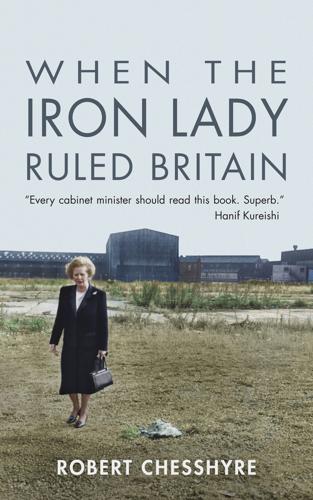
When the Iron Lady Ruled Britain
by
Robert Chesshyre
Published 15 Jan 2012
The estate was built in the mid-seventies, home to six thousand people, its flats linked by mile upon mile of asphalt walkway, and connected by bridges to other estates of equally formidable reputation. From one office, staff administer eleven thousand of the least desirable homes in the country. Seven years after Mrs Thatcher had boosted the ideal of a property-owning democracy by compelling local authorities to offer council houses for sale, not a single one of those eleven thousand tenants had bought the roof over his head. Between them the residents owed the borough five million pounds in rent arrears. Well over three-quarters of them fervently wanted to go elsewhere, a wish that will be fulfilled for only a tiny minority.
…
It was not what we have been accustomed to in Britain. Thatcher was already assaulting the last redoubts from which effective opposition could be deployed – education authorities and turbulent councils; now her acolytes were turning on the freedom to think differently. Although celebrated as the advocate of such liberties as the right to buy shares (and to drink in pubs all day), Thatcher was proving reluctant to tolerate the bedrock freedom – the right to oppose. She did manage to unite the media by her obsessive pursuit of the former MI5 man Peter Wright’s memoir Spycatcher. Two or three separate issues were cynically rolled into one in order to suppress both public knowledge and discussion of the power and accountability of the security services and of specific allegations, such as whether Roger Hollis, the former head of MI5, had been a spy and whether elements within MI5 had tried to destabilize Harold Wilson’s government.
…
Skelmersdale is not a natural community with social and occupational gradations. Its inhabitants are totally removed from the experience of most of Britain. The professionals who service the town, with very few exceptions – some of those are ‘missionaries’ like clergymen – live elsewhere. Eighty per cent of council tenants – the vast majority of the town – receive some form of housing benefit. Some unmarried mothers are so socially incompetent that the idea of going to a community centre for a cup of tea – in the words of a social worker – ‘freaks them out, they can’t handle it’. Even the Scouser accent sets them apart.
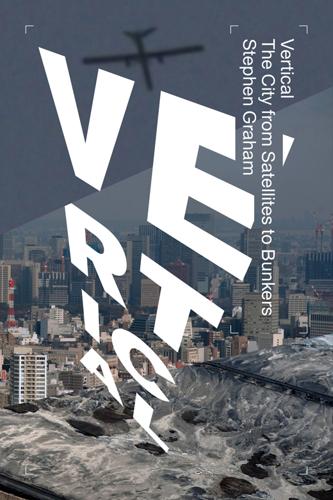
Vertical: The City From Satellites to Bunkers
by
Stephen Graham
Published 8 Nov 2016
‘Developers getting … land at a fraction of its true value, on the promise of future profits that mysteriously never arrive; a revolving door between local authorities and regeneration consultancy and PR firms.’79 The impact of speculation on central land values, and the huge profits to be made from replacing the neglected remnants of social and municipal housing with elite housing towers, radically undermines the chances that large-scale social housing will survive in London’s core. Instead, as in New York, the super-elite is taking to the skies. Sometimes, London’s better-quality modernist towers – such as Ernö Goldfinger’s Trellick Tower – have escaped the wrecking ball. Instead, exploiting Thatcher’s ‘right to buy’ for council tenants, their apartments are now privatised and sold at high prices to design-conscious elites (often professional architects).
…
Worse still, the only way London’s boroughs can now generate even tiny amounts of capital for ‘affordable’ housing – which still remains very expensive and out of reach of the genuinely poor – is through contributions from the developers of elite luxury towers in the form of ‘planning gain’.77 (Even this fig leaf now faces abolition from the Tory government.) London’s remaining estates of social and council housing – and the inherited legacies of modernist mass social housing such as the Heygate Estate in Southwark on the South Bank – meanwhile, are being ‘regenerated’ in ways that displace residents, re-engineer the areas as upper-middle-class or elite housing, and offer token units of affordable housing by way of camouflage.
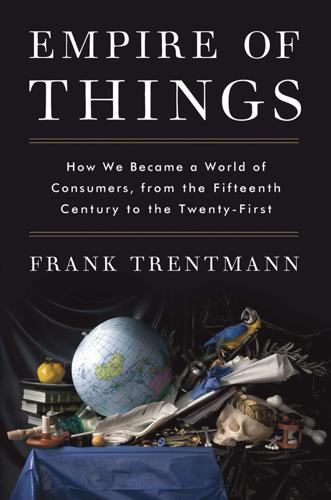
Empire of Things: How We Became a World of Consumers, From the Fifteenth Century to the Twenty-First
by
Frank Trentmann
Published 1 Dec 2015
Tenants expected fair treatment and to have the right to complain.99 It left the thorny issue of redress unanswered. After all, council tenants, unlike private ones, did not have the option to move house if they were dissatisfied. For Conservatives, this distinction remained axiomatic. ‘In a free country,’ the 1963 Conservative housing policy stressed, ‘the householder must be prepared to meet the cost of his house where he is able to do so. Otherwise he will have little freedom of choice.’100 This was unlikely to appease council tenants asked to pay rising rents while waiting for repairs. As the decade progressed, some took councils to court.
…
Not only would the economy ‘literally collapse overnight’ if critics had it their way and consumption was scaled back to ‘immediate and necessary needs’. It would weaken the American psyche. ‘The real defenders of a positive outlook on life, the real salesmen of prosperity, and therefore of democracy, are the individuals who defend the right to buy a new car, a new home, a new radio.’137 Feminists pointed out how MR recycled gender inequality by glorifying housework.138 Dichter, however, was no simple defender of the social order. Like Crosland, he believed that the spread of affluence would slow down competitive status-seeking. Instead of ‘keeping up with the Joneses’, individuals would spend more energy developing their ‘inner Joneses’, retire earlier, bake their own bread and design their own distinct outfits and home interiors.
…
Others joined protest marches and tenant associations. Poor people might be dependent on the state. Nonetheless, one association said, they should have the ‘indisputable right’ to take decisions that concerned their everyday lives, their homes and their community.101 In her dual plan in 1979 for a ‘right to buy’ and a Tenants’ Charter for those who chose not to, Thatcher capitalized on that earlier wave of anger. She did not create it.102 The movement for patient rights was the second major arena in which users were asserting greater voice vis-à-vis professional experts and authorities. Although healthcare was provided by a mix of public, private and charitable bodies, the issues of choice and voice were similar to those in the public sector.

Scotland’s Jesus: The Only Officially Non-Racist Comedian
by
Frankie Boyle
Published 23 Oct 2013
Scottish Gas has put heating prices out of reach for so many pensioners they’re thinking of rebranding themselves as ‘DigniGas’. The government won’t act, as the projected springtime surge in the number of estate agents after the hypothermia cull is its only current plan to cut unemployment figures. David Cameron says he wants to restart the Right to Buy scheme so council tenants can share the same dreams as home-owners. I wonder if he means the one where you’re eating shredded newspaper so you can pay the mortgage or the one where you’re trapped in a loveless marriage by negative equity. The UK has the smallest new homes in Europe. Many new homes are only as big as a London tube carriage.
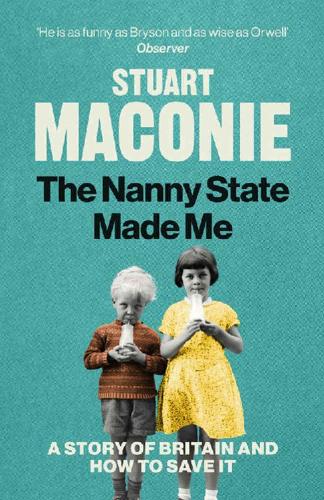
The Nanny State Made Me: A Story of Britain and How to Save It
by
Stuart Maconie
Published 5 Mar 2020
OK, both the Labour and Tory 2017 election manifestos promised that large numbers of council housing must and would be built. But they still said the priority is to build affordable housing to buy. They both think they have to keep alive that distant dream for people.’ In Scotland, until the Right to Buy was forced on them, over 70 per cent of people lived in council housing. More than half of Wales did. But in spite of the best efforts of Bevan, and despite it becoming a large part of the housing sector, Bevan never succeeded with the popular image and perception of social housing as he did with the NHS. ‘Council housing always remained the “wobbly pillar” of the welfare state,’ says Lynsey.
…
The paradigm shift, the seismic break with the certainties and securities of the past, came with the Right to Buy legislation, forced through by Thatcher and her generals with a zeal that far outweighed and outstripped any public desire for it. Like rail privatisation, like the NHS free-market ‘advances’, there was no great appetite among British people for these hacks and slashes to the social and economic fabric. Just long-nurtured grudges and obsessions masquerading as essential reforms, simmering hatreds that were purely partisan and bred in a kind of curtain-twitching fear and suspicion of one’s fellow Britons. Why did Mrs Thatcher and her allies hate the idea of council housing so much?
…
A flat in the Boundary Estate now (‘perfect for a professional looking to be close to the City’ says one estate agent’s blurb) will set you back about two and a half grand a month. As John Boughton says, ‘It remains a small working-class redoubt but around 40 per cent of its homes were purchased under Right to Buy and most of these later sold on. The defences of this little island of social housing have been breached, firstly by gentrification and more recently by corporate money.’ Graphic designers outnumber market traders now and the only cutpurses here these days work in the Square Mile and wear Hugo Boss.

Who Owns England?: How We Lost Our Green and Pleasant Land, and How to Take It Back
by
Guy Shrubsole
Published 1 May 2019
But in championing a ‘property-owning democracy’, not only rhetorically but through practical policy, she oversaw a transformation in the ownership of housing during the last quarter of the twentieth century. The year before her conference speech, Thatcher’s government had introduced Right to Buy, giving council house tenants the chance to purchase their home from the local authority. Introducing the legislation to Parliament, Environment Secretary Michael Heseltine claimed that ‘no single piece of legislation has enabled the transfer of so much capital wealth from the State to the people.’ Over the ensuing decade, a million council homes were sold to their tenants.
…
county farms estate For more on county farms, see ‘How the extent of County Farms has halved in 40 years’, 8 June 2018, https://whoownsengland.org/2018/06/08/how-the-extent-of-county-farms-has-halved-in-40-years/ See House of Commons Library briefing, ‘Assets of community value’, 28 April 2017, http://researchbriefings.parliament.uk/ResearchBriefing/Summary/SN06366#fullreport Community right to buy see https://www.gov.scot/Topics/farmingrural/Rural/rural-land/right-to-buy/Community The isle of Eigg See Alastair McIntosh, Soil and Soul: People versus Corporate Power (Aurum, 2001). APPENDIX Land area ONS, ‘The Countries of the UK’ [archived content from Jan 2016], http://webarchive.nationalarchives.gov.uk/20160108051201/ http://www.ons.gov.uk/ons/guide-method/geography/beginner-s-guide/administrative/the-countries-of-the-uk/index.html.
…
In 2017, his company won a landmark court case against the freehold owner of number 41 – the aristocratic Grosvenor Estate – allowing him to buy out the freehold, despite having never lived in the property. As one legal firm observed: ‘Just because this property looked internally like a derelict office, did not mean that it was not, in fact, a house. The tenant of this derelict building was therefore entitled to exercise its right to buy.’ Kulibayev’s victory seems emblematic of how old landed estates are being steadily eroded and displaced by new money – and how homes are increasingly treated as mere assets by this new elite. And 41 Upper Grosvenor Street is far from a unique case. London is littered with similar ‘ghost houses’.

Rethinking the Economics of Land and Housing
by
Josh Ryan-Collins
,
Toby Lloyd
and
Laurie Macfarlane
Published 28 Feb 2017
In the years following the policy’s introduction there were proportionately fewer purchases of less popular types of housing such as high-rise flats, and as a result local authorities were generally left with homes of lower quality (Forrest and Murie, 1986). Moreover, as wealthier tenants were better placed to take up the Right to Buy, the social rented sector saw a greater concentration of the poorest and most disadvantaged households. While in 1979 20% of households in the top decile of the income distribution lived in social housing, by 2004‒–05 this had fallen to close to zero (Hills, 2007). This phenomenon has been described as the ‘residualisation’ of the social rented sector (Stephens et al., 2005). Right to Buy has also been criticised for representing poor value for money for taxpayers who funded the initial building of the council houses, subsidised the substantial discounts offered to tenants and then – once the homes were sold – missed out on the rental income that would otherwise have been received.
…
Inspired by the party’s strategy in the 1950s, the newly elected government sought to dramatically increase homeownership and achieve the long-held Conservative goal of transforming the country into a ‘property owning democracy’. The first step towards this came in October 1980 when the government passed its first Housing Act, launching its flagship ‘Right to Buy’ policy, compelling councils to sell social homes to their occupiers (see Box 4.5). Further reforms completed the transformation of the housing sector. Much remaining council housing was transferred to the housing association sector, largely driven by the political desire to keep official public sector borrowing down. The stage was set for the revival of the private rented sector by the Housing Act of 1988’s removal of rent regulation and introduction of the Assured Shorthold Tenancy.
…
Under this new, liberal settlement the problem of rent would not be tackled directly at all, but the ability to be on the winning side of the equation would be offered to a greater proportion of society than ever before. Box 4.5 The Right to Buy The Right to Buy allowed public housing tenants to purchase their homes at a heavily discounted price. During Margaret Thatcher’s time in office 1.5 million publicly owned houses were privatised in what she described as ‘one of the most important revolutions of the century’ (Linklater, 2013). This led to a significant rise in owner-occupancy throughout the 1980s and 1990s and a marked decline in the number of people living in the social rented sector. The Right to Buy was controversial from the start and the effects of the policy are still debated today.

Hostile Environment: How Immigrants Became Scapegoats
by
Maya Goodfellow
Published 5 Nov 2019
But armed with their Third Way politics, Labour kept Thatcher’s financial approach intact. Housing is a good example of what that meant in practice. As Thatcher sold off council housing through her Right to Buy policy, there was a steady decline in the number of council houses that were built – never fewer than 17,710 a year – and that continued to plummet, dropping to 7,870 under New Labour’s entire thirteen years in office.16 Between 1997 and 2010, for instance, only 0.3 per cent of all the homes that were built were owned by local authorities. Housing became a commodity, not a right, as the crisis of where to live exploded in the UK. When I ask Mark Serwotka, general secretary of Public and Commercial Services Union (PCS), about New Labour’s economic approach, he is visibly unimpressed.
…
Alex Balch, Managing Labour Migration in Europe: Ideas, Knowledge and Policy Change, Manchester: Manchester University Press, 2010, p. 111; ‘Who Built More Council Houses – Margaret Thatcher or New Labour?’, fullfact.org, 12 November 2013. 17. Danny Dorling, ‘New Labour and Inequality: Thatcherism Continued?’, Local Economy, vol. 25, issues 5–6, 2010, pp. 397–413. 18. Carys Afoko, Framing the Economy: The Austerity Story, London: New Economics Foundation, 2013; Sally Gainsbury and Sarah Neville, ‘Austerity’s £18bn Impact on Local Services’, Financial Times, 19 July 2015. Between 2010 and 2015, a quarter of the Home Office budget was cut by around 24.9 per cent and there were £18 billion cuts to local authority budgets, amounting to authorities having to get rid of key services for 150,000 pensioners and cutting child protection spending by 8 per cent. 19.
…
But a coroner’s report that had been written three years after Jimmy’s death said the texts were ‘not evidence of a couple of “rotten apples”’ but seemed to ‘evidence a more pervasive racism within G4S’.18 By the time the report was released, G4S had already been given the asylum housing contract. Before the switch went ahead, a mix of local authorities, housing associations and private contractors had been responsible for the accommodation of asylum seekers. Cross says the shift away from local authorities was ‘very obvious’ and the private sector offered much lower cost contracts, but that came with ‘absolute pairing down in the contracts’. Support for people was ‘pretty much annihilated’, putting more pressure on organisations like WERS.

There Is Nothing for You Here: Finding Opportunity in the Twenty-First Century
by
Fiona Hill
Published 4 Oct 2021
most women in Russia: Mary Buckley, “Women in the Soviet Union,” Feminist Review, no. 8 (1981): 80. drove people to drink: Oliver Bullough, The Last Man in Russia: The Struggle to Save a Dying Nation (New York: Basic, 2013). council house tenants: Andy Beckett, “The right to buy: the housing crisis that Thatcher built,” Guardian, August 26, 2015, https://www.theguardian.com/society/2015/aug/26/right-to-buy-margaret-thatcher-david-cameron-housing-crisis. allocated by the Communist Party: Nadezhda Kosareva and Raymond Struyk, “Housing Privatization in the Russian Federation,” Housing Policy Debate4, no. 1 (1993): 82, https://www.innovations.harvard.edu/sites/default/files/hpd_0401_kosareva.pdf.
…
An undesirable house was a drag on mobility. Speculators and investors bought up council houses in the UK from tenants who could not afford their mortgages and from similarly disadvantaged new homeowners in Russia. In Moscow and St. Petersburg, where many grand prerevolutionary buildings had been carved up into communal flats in the Soviet period, there were several instances when elderly residents were swindled and even murdered to consolidate and renovate now-lucrative properties. In the UK, few new council houses were built after the Housing Act, pushing those with particularly low incomes, who could not afford to buy under any circumstances, into soaring rental markets and homelessness.
…
In addition to providing a source of security as a permanent place to live, it put more opportunity within our grasp. In the United Kingdom, just as in the United States, homeownership was directly connected to the prospect of building up generational wealth. Both Mam and Dad had grown up or lived in rented workers’ housing and council houses. No one in their direct lines of descent had ever owned a house. They knew from experience—given the fact that Dad had been homeless, lived in a condemned building, and frequently had to miss school—that living in your own house improved children’s life chances. In this sense, my parents’ purchase of a home was a critical factor in putting me on a different path from theirs.

A History of Modern Britain
by
Andrew Marr
Published 2 Jul 2009
An attentive reader of the Conservative manifesto for the 1979 election would have missed it. After four years of her leadership the Tories were still talking about a wages policy and the importance of consulting with the trade unions, perhaps on the German model. There was talk too of the need to control the money supply and offer council house tenants the right to buy their homes. But other privatization barely featured. Only the comparatively insignificant National Freight Corporation was to be sold. As to unemployment, Mrs Thatcher herself had been vigorously attacking the Labour government for its failure there. In 1977, when it stood at 1.3 million, she had told the country it was absolutely wrong to associate the Tories with people losing their jobs: ‘We would have been drummed out of office if we’d had this level of unemployment.’
…
The cost of renationalizing the industries made Labour pledges about it increasingly hollow. Twenty years later the idea of reversing privatization is something discussed only on the very margins of politics. The proportion of adults holding shares rose from 7 per cent when Labour left office, to 25 per cent when Thatcher did. Thanks to the ‘right to buy’ policy, more than a million families purchased their council houses, repainting and refurbishing them and watching their value shoot up, particularly since they had been sold them at a discount of between 33 and 50 per cent. The proportion of owner-occupied homes rose from 55 per cent of the total in 1979 to 67 per cent a decade later.
…
The future Labour leader Neil Kinnock lived in one, an Arcon V, from 1947 until 1961, and remembered the fitted fridge and bathroom causing much jealousy: ‘Friends and family came to view the wonders. It seemed like living in a spaceship.’ As they spread around the country, in almost all the big cities and many smaller ones too, they came to be regarded as better than bog-standard council housing. Communities developed in prefab estates which survived cheerfully well into the seventies. Dirty Stubs to Rich Spikes The great grey stubs of the tower-block boom which ran from the fifties to the late sixties litter most of urban Britain. Never has newness turned dark so quickly. Rarely has revolutionary optimism been so quickly and abjectly confounded.
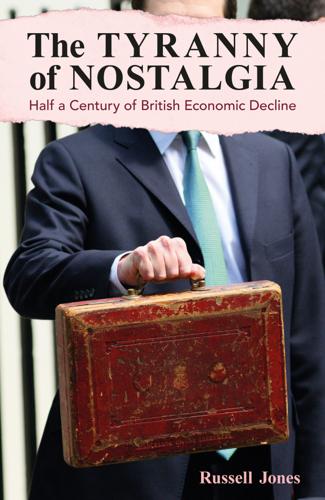
The Tyranny of Nostalgia: Half a Century of British Economic Decline
by
Russell Jones
Published 15 Jan 2023
Lawson later expressed regret at not having implemented the change with effect from the time of the budget because a rush to beat the deadline poured fuel on to the fire of an already rambunctious housing boom. Millions of homes were sold off under the extremely popular Right to Buy scheme, and by the end of the Thatcher period owner-occupied housing had risen by a fifth, from 55% in 1979 to some 66% of the total. The problem was that little or no thought was given to replacing the social housing sold. In the thirty years from 1948 council house building never fell below 100,000 a year, and in some years it exceeded 250,000. By the end of the 1980s less than 20,000 council houses were being built each year. For all the hype and the hopes of the government, whether or not privatization led to higher productivity is hard to discern.
…
By the end of 1987 the government had raised around £25 billion in total through privatization, and the sum of some £9 billion collected that year exceeded the budget deficit. By 1991 the cumulative proceeds had nearly doubled again. Privatization also extended to the housing market. The Housing Act of 1980 allowed tenants to purchase council houses at a significantly discounted price under the ‘Right to Buy’ programme. Again, the intention was to encourage aspiration and entrepreneurship, while also fostering labour mobility in an effort to reduce the ‘natural rate’ of unemployment described by Friedman. This was further underpinned by ‘mortgage interest relief at source’, or MIRAS.
…
And in the UK’s case, such rigidities were on the rise in the post-war era. In addition to the increased strength of the trade unions in terms of membership numbers and legal position, there were, for example, important changes in the level, breadth and duration of unemployment pay; declines in the size of the private rented housing sector; and greater provision of council housing.6 Friedman’s writings went beyond monetary primacy and long-term policy consistency and restraint. They also went beyond the formalization of the limitations and inevitable inflationary consequences of repeated efforts to secure full employment, such as the policies employed in the UK in the 1950s, 1960s and early 1970s.

Them And Us: Politics, Greed And Inequality - Why We Need A Fair Society
by
Will Hutton
Published 30 Sep 2010
And when the two coincide the result is doubly deadly.31 The symbols are no longer court shoes, pocket watches and received pronunciation but much more subtle: reading broadsheet newspapers, eating fresh vegetables, knowing what is on in the theatre, and the post-code in which you live. The clustering of advantage and disadvantage is huge.32 There are neighbourhood effects: increasingly, the poor live in the same wards and housing estates so they are less dispersed throughout the whole community. Thatcher’s introduction of the right to buy council houses may have extended owner occupation, but it had the disastrous social consequence of dividing the working class into the employed mortgage-paying haves and the non-mortgage-paying have-nots. In 1979, 40 per cent of the adult population lived in the social rented sector; today, that figure is just 12 per cent.
…
An equivalent complaint today would be that a local authority had sent poor children on a week’s holiday to Blackpool.21 The Mayhew/Daily Mail view of the poor still has its pitch-perfect followers today, but now they are arguably even more callous. For all his pigeon-holing of the poor, at least Mayhew was so concerned by the phenomenon that he documented their plight and daily lives with accuracy and enormous depth. Today the poor are simply written off as caricatures and mocked as a tribal underclass. The outburst of malicious jokes about chavs – council housed and vile – in the mid-2000s was a classic example.
…
Even worse, the electorate tends to vote for councillors on national rather than local issues, not least because they have so little local power. Thus, after a long period of Conservative government, by 1997 there were very few Tory councillors because of anti-(national) Tory voting. Labour found itself in a mirror-image position by 2010. There has already been a shift of power to local authorities, but the trend should be accelerated.32 Local authorities should be able to raise between a third and a half of their revenue from local sales, property and income taxes, and they should be able to design their own spending plans. There should be genuine experimentation in a plethora of social, educational, health and policing policies.

The Cost of Inequality: Why Economic Equality Is Essential for Recovery
by
Stewart Lansley
Published 19 Jan 2012
By the mid-1990s, what one commentator has described as an ‘almost unassailable mantra’ had become almost universal in British boardrooms.175 To encourage managers to take this direction, a new form of remuneration package was introduced, one in which executives were paid increasingly in stock options. This was, at least initially, seen by the American management gurus who promoted the idea as a way of linking executive pay to company success as measured by changes in the share price. Stock options—which operate by giving an executive the right to buy a given amount of stock at a certain price at a later date—provided a very strong incentive to top executives to maximise the share price as that was the mechanism by which they would be paid. By 2001, more than half of America’s top 200 chief executives had ‘mega-options’, which by now had grown to an average value of more than $50 million.
…
Challenge, September, 2002. 256 Guardian, 19.11.03. 257 Time, 26 February, 2011. 258 H Williams, Britain’s Power Elites, Constable, 2006, p 164. 259 N Matthiason & Y Bessaoud, Growth in City Donations to the Conservative Party, Bureau for Investigative Journalism, February 2011. 260 CRESC, 2009, op. cit. p 23. 261 G Soros, ‘The Crisis and What to do About It’, New York Review of Books, 4 December, 2008. 7 LIVING ON BORROWED TIME One evening in late 2004, a couple who had been living in a small council house in Bradford for ten years got an unexpected knock on the door from a mortgage salesman. The broker, working on commission, was cold calling people on the estate to see if they could be persuaded to buy their council house. The couple, aged 53 and 58, were both unemployed and living on benefits. One suffered from chronic arthritis while the other had only one lung. Although they were hardly strong candidates to take out a mortgage, they were given the hard sell and signed the papers that evening.
…
The repayments rose sharply, the couple fell into arrears and the lender tried to repossess their home. They were only saved from eviction with the help of their family and a new payment plan which still absorbed a very large chunk of the couple’s benefits. The same year, a 55-year old lady living in a council house in Cheshire was approached in a similar way by another ‘door-to-door’ mortgage broker working for Home and County Mortgages Ltd, a Cheshire-based company specializing in right-tobuy-sales. The lady was a part-time cook working for the local council, with both very modest earnings and a history of credit problems.

Crack-Up Capitalism: Market Radicals and the Dream of a World Without Democracy
by
Quinn Slobodian
Published 4 Apr 2023
The enterprise zone and development corporation showed themselves not as features of an experimental free-for-all but as a one-way conveyor belt delivering British land to the balance sheets of the world’s wealthiest oligarchs and sovereign wealth funds. One of Thatcher’s greatest policy victories was her Right to Buy program, which sold council housing to tenants at a deep discount. When she came into office, about one-third of dwellings in Britain were publicly owned council housing. A few years into the twenty-first century, roughly half of that public housing stock—around 2.7 million homes—had been sold.130 The goal of this massive transformation of public into private property was to expand a homeownership society.
…
For a pioneering analysis, see Neil Smith, The New Urban Frontier: Gentrification and the Revanchist City (New York: Routledge, 1996). 128. Wiig, “Incentivized Urbanization in Philadelphia,” 112. 129. Jack Brown, “If You Build It, They Will Come: The Role of Individuals in the Emergence of Canary Wharf, 1985–1987,” London Journal 42, no. 1 (2017): 71. 130. Richard Disney and Guannan Luo, “The Right to Buy Public Housing in Britain: A Welfare Analysis,” Journal of Housing Economics, no. 35 (2017): 51–53. 131. Stuart Hodkinson, “The New Urban Enclosures,” City 16, no. 5 (2012): 510–14; and Christian Hilber and Olivier Schöni, “In the United Kingdom, Homeownership Has Fallen While Renting Is on the Rise,” Brookings Institution, April 20, 2021, https://www.brookings.edu/essay/uk-rental-housing-markets/. 132.
…
See also under specific locations elimination of flat tax in Hong Kong inheritance tax tax avoidance tax breaks tax havens tax pirates tax rates as theft Taylor, Jared Tebbit, Norman tech criticism tech libertarianism tech sector “techxodus” telecommunications terrorism Texas Texas Instruments Thailand Thatcher, Margaret Big Bang and as patron saint of Euroskeptics Right to Buy program Singapore and Thatcherism Theranos Thiel, Peter “three withouts” Thyssen Tiananmen Square, protest at tin Tlon Tories Total trade foreign trade zones free trade free trade zones international trade law supercharged maritime transition transitology Transkei, South Africa transnational capitalism Transparency Commission Transport and General Workers Union treaties Treaty of Nanking treaty ports Trucial States trucking Trump, Donald Trump Tower, New York Trump Tower Dubai Truss, Liz trusts Tullock, Gordon Turkey Twain, Mark T-zones Uber Ugland House UK Independence Party (UKIP) Ukraine, Russian invasion of Umbrella Movement underclass underthrow unemployment Unicorn Island unions absence of breaking of prohibition of in South Africa union breakers union laws United Arab Emirates United Kingdom.
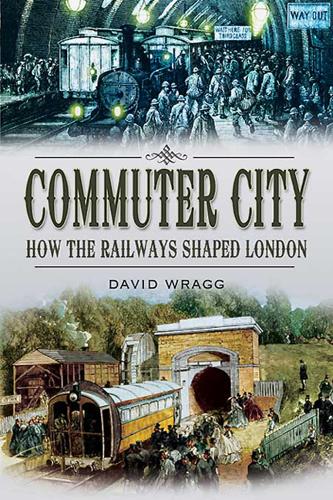
Commuter City: How the Railways Shaped London
by
David Wragg
Published 14 Apr 2010
Schoolboys used to take a delight in swinging their satchels through the air and against seats to send a cloud of soot and dust into the air of an already murky compartment. The allure of the suburbs Wartime had not only interrupted railway modernisation, and especially electrification, it had also stopped housing development, whether it was the private estates built by developers or the slum clearance public or council housing planned by local authorities. While the London County Council had built new estates at places such as Streatham, the supply of building land within its area was already scarce during the 1930s and so it had started to build ‘out-county’ estates, with those at Becontree, St Helier and Downham becoming three of the largest public housing estates in the world by the outbreak of war in 1939.
…
Unlike the railways, there was no goods traffic to augment revenues, and unlike the railways, their responsibilities did not end with the track and the vehicles. Not every tram company saw matters in this way. When the Provincial concern was forced off Portsea Island after Portsmouth Corporation exercised its right to buy, the company immediately crossed to the other side of the harbour and set up an operation running between Gosport and Fareham, happily in not one but two adjoining council areas which made municipal ownership more difficult. It was also the case that not every council realised that its ambition to own its own trams was a blessing.
…
All of this was achieved without the intervention of central government or the application of taxpayers’ money. Indeed, in some places, such as Carlisle, the city imposed its ancient right to charge a duty on everything entering its boundaries, and then again on everything leaving. Local authority rates were another matter, and the railways were rated very heavily for the amount of land that they occupied, as local authorities saw the railway as a cash cow to be milked. One of the best examples of this was at Huyton, near Liverpool, where in 1849 the London & North Western Railway provided 35 per cent of the rates paid to the parish council, despite occupying less than 1 per cent of the land.

Hard Times: The Divisive Toll of the Economic Slump
by
Tom Clark
and
Anthony Heath
Published 23 Jun 2014
Already by the time of the census in 2011, home ownership was down 5 percentage points on the last nationwide count in 2001, the first such decline in a century.15 Looking ahead, the National Housing Federation projects that the 73% of the English population that lived in owner-occupied housing in 2001 will fall to just 64% in 2021, returning the statistic to where it stood in the first days of Margaret Thatcher's ‘right to buy’.16 When John Prescott, the seaman turned deputy prime minister, made headlines in the 1990s by revealing that (surprise, surprise!) with his MP's salary he no longer lived a working-class life, he was widely misquoted as having said ‘We're all middle class now’. In fact, he remained far too mindful of Britain's social divisions to have made such a claim; but the misattribution stuck because it seemed somehow to capture the spirit of the times and – so he told me – the message that parts of the Labour high command were trying to put across.17 The promise that the great bulk of society could be on its way up at the same time was always questionable (and indeed questioned); but half a generation ago it had sufficient credibility to be regarded as winning political rhetoric.
…
On the suicide note story, see Keir Mudie and Nigel Nelson, ‘Bedroom Tax victim commits suicide: Grandmother Stephanie Bottrill blames government in tragic note’, Daily Mirror, 12 May 2013, at: www.mirror.co.uk/news/uk-news/suicide-bedroom-tax-victim-stephanie–1883600#ixzz2efG7r8A0 On the UN representative's intervention, see Amelia Gentleman, ‘“Shocking” bedroom tax should be axed, says UN investigator’, Guardian, 11 September 2013, at: www.theguardian.com/society/2013/sep/11/bedroom-tax-should-be-axed-says-un-investigator 58. The exact number is 1.85 million. Department for Communities/Office for National Statistics, ‘Local authority housing statistics: 2011–12’, 2012, at: www.gov.uk/government/uploads/system/uploads/attachment_data/file/39457/Local_authority_housing_statistics_2011_12_v4.pdf 59. Zedlewski et al., Families Coping Without Earnings, pp. viii, 8–13. Chapter 9: The veil of complacency 1. Jahoda et al., Marienthal, pp. 19, 43–4. 2. Orwell, The Road to Wigan Pier, p. 70. 3.
…
‘Winston’ is – proudly and remarkably – free of debt, though only, he says, because he was brought up to save for a buffer against rainy days. But ‘since I suffered the sanction’, he explains, ‘I had to use what little money I had saved’. His past thrift no longer offers any protection; he is facing hard times entirely exposed. With the council's housing office and the revenue's child tax credit office in similarly mean-spirited mood to the job centre, he tells Kafkaesque tales of letters going missing between bureaucracies and of the arrival of missives summoning him to appointments on dates that have already passed. He sums up the last six months as time spent ‘lost in the department of work and pensions’.

The Liberal Moment
by
Nick Clegg
and
Demos (organization : London, England)
Published 12 Nov 2009
As for the house price bubble: it was heavily influenced by the failure to regulate mortgage provision properly, with Labour refusing to intervene to disperse power away from the debt-providers and towards home buyers. Liberal Democrats would approach housing differently, dispersing power away from the big mortgage providers and central government to provide a more stable market and more diverse safety net. Local authorities would be able to borrow on their own assets to build new social housing, we would ensure homes sold under Right to Buy are replaced locally, and would use the planning system to give power back to local communities so that they can shape local development to build the homes they need. We would regulate mortgages more closely and make the social crisis the Bank of England take house prices into account when setting interest rates to reduce the likelihood of another house price bubble.
…
Labour has let down low income families – the very people who hoped Labour would protect them. Both the housing bubble and the social housing crisis developed because of Labour’s reluctance to disperse economic and political power. Social housing is disappearing because of the nationally-imposed Right to Buy and Whitehall restrictions on councils’ ability to invest in building new homes to replace those sold off. Both were introduced by the Conservatives but Labour did almost nothing to reverse the trends, even imposing extra constraints on councils in relation to the Decent Homes investment. As for the house price bubble: it was heavily influenced by the failure to regulate mortgage provision properly, with Labour refusing to intervene to disperse power away from the debt-providers and towards home buyers.
…
Only a country that is home to fewer people than the 47 London Borough of Croydon hoards as much power at the centre as this Labour Government. Even the Parliaments and Assemblies in Scotland, Wales, Northern Ireland and London have limited roles, while elsewhere in England local authorities have become agents for central government.31 Every major policy being delivered by councils today has ‘Made in Whitehall’ stamped on it, while 75 per cent of local authorities’ income comes from central coffers.32 As ever, power follows money; devoid of the freedom to raise the second, Councils are unable to exercise the first. There was a time when Labour was the champion of change to this system, the great hope that politics could be reinvigorated, with power devolved so people had a real say in what happened to their communities.
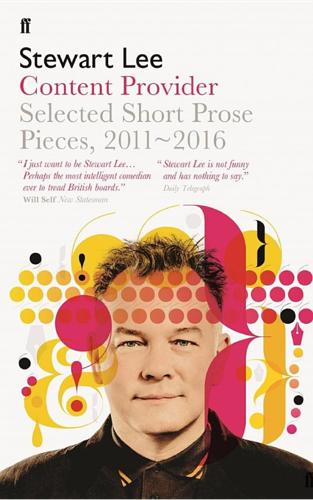
Content Provider: Selected Short Prose Pieces, 2011–2016
by
Stewart Lee
Published 1 Aug 2016
I could only imagine what hard work looked like, though I had seen an arts cinema screening of Alexander Dovzhenko’s 1930 Soviet propaganda film Earth, about the hardships of Russian agricultural labourers, which gave me a fair idea. Back then, I knew nothing about anything, admittedly. Maybe Margaret Thatcher was right to hasten the demise of an outdated mining industry, to sell off nationalised concerns to private investors, to enfranchise council-house occupants with the right to buy, to neutralise the National Front by appropriating some of its rhetoric, and to leave apartheid unopposed. I was a teenager. I don’t know. At some point in the middle of the decade I discovered alcohol and I wasn’t paying attention. I experienced and understood the world exclusively through the passive assimilation of culture.
…
In Oxford the lady on the stage door talked about her son going to college in Coventry, and I said how few of the people I knew would have studied if it had cost what it costs today, and how the circumstances, and attitudes to education as an end in itself, that saw generations of people from different backgrounds into and through university no longer exist. And she countered my abstract worthy meditation on social privilege by telling me she had grown up on Oxford’s Cutteslowe estate. In 1934, after clearances had moved former slum-dwellers into new council housing appended to a prosperous suburb, the prestigious Urban Housing Company unilaterally erected a succession of two-metre-high spiked walls across the public roads to keep the working classes out of their betters’ sights. And these stayed in place until 1959. The Beatles were coming, and punk rock, and contraception, and the Open University, and student grants.

Rule Britannia: Brexit and the End of Empire
by
Danny Dorling
and
Sally Tomlinson
Published 15 Jan 2019
At the very same time, private landlords in London were raising rents to new peaks. The average rent for a London home increased from £1,250 a month in 2007 to £1,600 a month by 2017 (higher than UK median income after tax). This was not because they had to, or needed to, but just because they could. The availability of social housing continued to fall, with the right-to-buy policy on council housing continuing uninterrupted and occurring fastest where there was most need for housing. In contrast to London, rents in the north-east, Yorkshire and Humberside and the north-west of England were now three times less a month as compared to those in the capital, actually falling over the course of the decade in the north-east of England.
…
He admits to an obsession with Ayn Rand, the poster girl of a particularly hardcore brand of free-market fundamentalism – the advocate of a philosophy she called ‘the virtue of selfishness’.36 It is widely reported that Javid earnt up to £3 million a year as a banker, owning property in London worth in excess of £6 million, though he has never confirmed these claims.37 He regularly attends secretive neocon conferences in the USA.38 Natalie Evans [10], life peer and currently Lord Privy Seal and Leader of the House of Lords, became the director of the charity New Schools Network in 2013.39 The organisation encouraged the establishment of free schools outside the normal local authority provision, using state funds. In 2010, the Charity Commission had to remind the trustees of their responsibility to remain politically impartial. This might now be tricky considering Evans is a government appointee in the Lords, and her husband a Conservative special advisor.40 In 2015, amid much criticism of free schools, Labour Party policy-makers agreed not to fund any new free schools. It doesn’t take a genius to work out what mayhem is caused by funding a small group of parents or a religious group to establish their own school, unplanned by the local authority and without regard for neighbouring schools.
…
It was not people who were poorer who voted Leave in high numbers, but people who found the propaganda that immigrants created problems believable. They tended to live in areas of low immigration. In poorer areas of high immigration, everyone was more likely to vote Remain. FIGURE 8.3: VOTE LEAVE AND DEPRIVATION BY LOCAL AUTHORITY IN ENGLAND, 2016 Each area is a local authority drawn in proportion to its population and positioned according to how deprived it is and the proportion voting Leave.60 It is well worth asking again: why might levels of overall deprivation have had so little effect on the vote to leave? It is true that the south-east of England and London depend much more on labour from the European mainland, but less on trade with the EU.
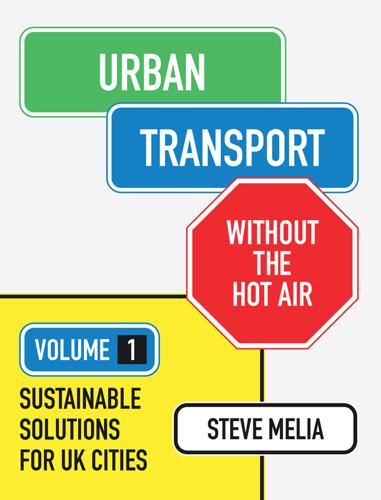
Urban Transport Without the Hot Air, Volume 1
by
Steve Melia
The ‘right to buy’ legislation introduced in the 1980s, that gave social housing tenants the right to buy their homes, has been compared to “filling the bath with the plug pulled out”.242 While the Scottish government has put the plug back in, and the Welsh government has given local authorities the power to suspend the right to buy in areas of housing shortage, English legislation has extended those rights several times despite ever-lengthening waiting lists. Council houses have proved a more attractive buy than council flats. Larger families on low incomes are always more likely to need housing assistance, whereas most single people are not even allowed on to the waiting lists in the first place.243 While there are shortages of social housing for larger families in many areas, these factors have distorted the perceptions of planners responsible for all housing, most of which is privately built and occupied.
…
Across England and Wales there are just 150 local authority wards, mainly in inner urban areas, where more than 75 per cent of the dwellings are flats. By comparison, there are 4,021 wards where over 90 per cent of the dwellings are houses (nearly half of the 8,570 wards in England and Wales).240 Many local planning documents refer to shortages of family housing.241 Why is this? Apart from the media and distorted perceptions of household size, local authorities are also influenced by their responsibility for social housing. The ‘right to buy’ legislation introduced in the 1980s, that gave social housing tenants the right to buy their homes, has been compared to “filling the bath with the plug pulled out”.242 While the Scottish government has put the plug back in, and the Welsh government has given local authorities the power to suspend the right to buy in areas of housing shortage, English legislation has extended those rights several times despite ever-lengthening waiting lists.
…
This has prompted Company B to a complete re think … They decided they need to concentrate on two seemingly opposite things: core corridors where they can see organic growth, but also they need to eliminate other operators who are generally on concessionary contracts from local authorities [for unprofitable routes, late evenings and weekends]. The 1986 Act says local authorities cannot compete with commercial operators. If you look at the VOSA [government agency] website, you will see the registrations Company B have put through. Some of those are almost identical to the routes run by Company A for the local authority, which will in due course withdraw them … Once they have eliminated the competition, you could ask: ‘Is it realistic that they can operate a service commercially with twice the frequency and twice the costs that a local authority was operating at a loss?’”
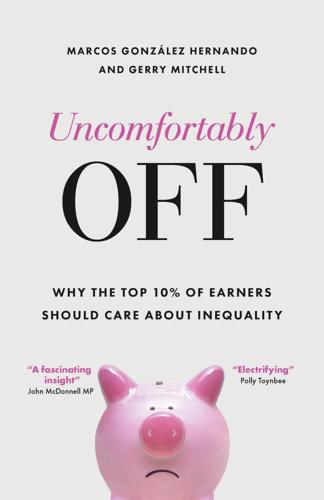
Uncomfortably Off: Why the Top 10% of Earners Should Care About Inequality
by
Marcos González Hernando
and
Gerry Mitchell
Published 23 May 2023
Increasingly, no area of social and political life can avoid ‘the gaze of a blanket financial audit’.44 Finance is placed above legal mechanisms and determines which policy pledges will be kept, to the point where it is no longer clear that contemporary capitalism requires a norm-based legal model of the state. Only one respondent, a barrister and expert in housing law, reflected on the history of our state infrastructure in his lifetime: “You’ve got to start with Thatcher. Demunicipalisation of gas, water, electricity, railway, […] housing […] with the right to buy […]. A mass transfer of stocks. A mass depletion of what the state, what public services, provide.” Conflicted views on the role of the state Many respondents working in the private sector distance themselves from the welfare state, for at least two reasons. First, there is a certain status in thinking that they are not dependent on public services.
…
Michael, for example, a 49-year-old engineer earning just above the 10% threshold, is not alone in thinking that the emphasis should be taken away from universal benefits and instead make them means-tested. In his view, policy should focus on investing in the “infrastructure [that is currently] missing for better education, council housing, childcare”. Support for universal services as they are organised now (for example, the NHS) was weaker from those respondents working in the private sector, with little reference to the social solidarity function a universal system provides. Even the few who refer to the tradition of universalism, often end up arguing in favour of means-testing.
…
Nevertheless, many in the public sector also had apprehensions about the pressures they were under and conflicting views on their management. Jonathan, for example, a semi-retired barrister, but still in the top 1% income bracket, looked back at an extensive career, originally built on legal aid, but local authorities “bled out” with consequences for his practice. What both Brahmins and Merchants had in common was that being busy tacitly provided status. Lack of time was cited as a key barrier to not doing more outside work. Stephen, a law professor, pithily told us: “Work is life, that’s it.” Meritocracy, corporate culture and organisational hierarchy loom large.

I.O.U.: Why Everyone Owes Everyone and No One Can Pay
by
John Lanchester
Published 14 Dec 2009
Chance, and risk, began to be things which could be managed. An essential tool in doing so would be the category of financial instruments called derivatives. Derivatives themselves are a long-standing feature of financial markets. At their simplest, a farmer will agree to a price for his next harvest a few months in advance; and the right to buy this harvest is a derivative, which can itself be sold. The name comes from the fact that a derivative’s value derives from the underlying products. Today, the simplest forms of derivatives are options and futures. An option gives you the right, but not the obligation, to either buy or sell something at a specified future date for a specified price.
…
This isn’t exclusively, or even primarily, a preoccupation of the political left. In Britain, it was Margaret Thatcher who spoke of a vision of a “property-owning democracy” and who, more energetically than any other modern politician, pursued policies designed to increase the level of home ownership, extending mortgage tax relief and introducing a new right for council-house tenants to buy their own homes. There was a strong political tinge to these ideas, involving the belief that home owners were—to put it bluntly—more likely to be both small c and big C conservative. In America, it was the unlikely figure of Herbert Hoover who began the drive to create government policies favoring home ownership.1 Hoover would later be a model of complacent conservatism at its sleepiest, which is why it’s all the odder that he saw home ownership as such a crusade.
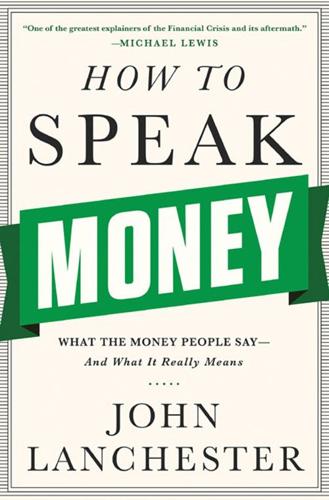
How to Speak Money: What the Money People Say--And What It Really Means
by
John Lanchester
Published 5 Oct 2014
That is a vivid practical way of thinking about opportunity costs. options A type of financial derivative that gives the holder the right, but not the obligation, to buy or sell something at a specific price on a specific date. Apple shares today are $420. Say you think that Apple’s share price is going up. You buy the right to buy Apple shares for $500 in six months’ time. If Apple shares have risen to $550, then when the time comes you buy them for $500 and sell them for $550 and have made an immediate profit; if the share price is less than $500, you don’t exercise your option and instead just walk away, and all you’ve lost is the cost of the option.
…
There will need to be a sharp increase in levels of social housing. The role model here is Singapore, which as well as consistently being voted the most open economy in the world—a beacon to free marketers everywhere—has the highest level of state and social housing in the world. The world capital of the free market is also the world capital of council houses. Not all the lessons of Singapore are about free markets. More generally, there will need to be a focus on material well-being in the round, and broader measures of quality of life than the mere narrow focus on GDP. In Denmark, a judge earns more than a cleaner: two and a half times more.89 How does that work out for them?
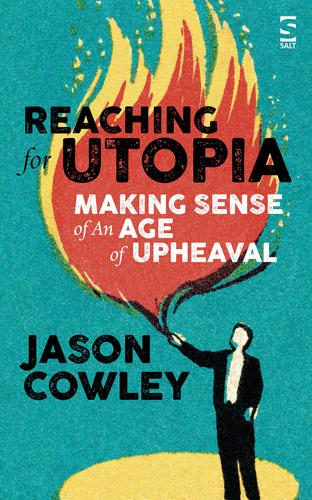
Reaching for Utopia: Making Sense of an Age of Upheaval
by
Jason Cowley
Published 15 Nov 2018
My classmates’ parents had, for the most part, come from the East End or the poorer parts of north London, such as Edmonton or Walthamstow, and many worked in the town’s factories and manufacturing plants – the International Telephone and Telegraph Corporation (which by the end of the 1970s employed eight thousand people), the Cossor Group, Revertex Chemicals, Johnson Matthey Metals, Schreiber, Pitney Bowes, United Glass. These companies had their own social clubs and sports teams, even boys’ football teams, which I played against in the recreational league for Newtown Spartak, a name more redolent of the Soviet Union. Before the introduction of Margaret Thatcher’s Right to Buy scheme, which enabled tenants to buy their council house at a large discount, most of the houses in the town were owned by the town corporation. (Even today, a third of the housing stock is council-owned.) Yet from 1972 we owned our house, and lived on one of the few private developments, or executive estates as they were known.
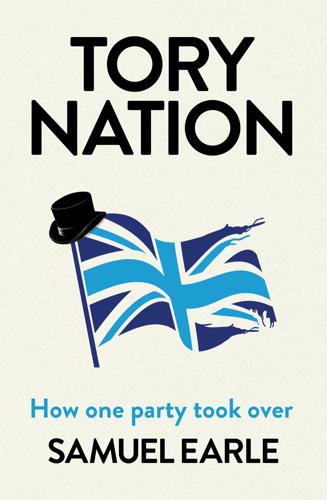
Tory Nation: The Dark Legacy of the World's Most Successful Political Party
by
Samuel Earle
Published 3 May 2023
Whereas only a fifth of owner-occupiers and a third of mortgage-holders backed Labour, the Conservatives claimed 57 per cent and 43 per cent respectively.24 But the underlying idea, that the mere act of owning property cultivates a Conservative worldview – making owners more risk-averse, protective and invested in the status quo – has long been assumed. As the social reformer Francis Place declared in 1831, with the whiff of a workers’ revolution in the air: ‘Every man who has property to lose is bound to do all he can to avert it.’ This notion provided the intellectual motivation for Margaret Thatcher’s infamous ‘right to buy’ scheme, wherein council houses – built in their hundreds of thousands after the Second World War – were sold off to tenants at bargain prices, with the hope of creating a new class of homeowning Tory voters. It was part of Thatcher’s plan for ‘popular capitalism’: ‘a crusade to enfranchise the many in the economic life of the nation’.
…
Today’s housing crisis – extortionate rents, unaffordable homes and a chronic shortage of social housing, where landlords have all the rights and rewards and renters are almost powerless – is the result, along with local government’s chronic absence of funding: like Cameron’s programme of austerity, right to buy cut off councils from one of their main sources of income. Right-wing politicians and movements around the world are loyal to private property and homeownership. But in Britain, the Conservatives’ defence of private property takes on a particularly patriotic hue: owning a home is seen as a peculiarly national obsession, a symptom of a very British need for privacy.
…
See also Northern Ireland Ishiguro, Kazuo: The Remains of the Day 99, 118 Islam 148, 174; Islamophobia 129, 144–5 Javid, Sajid 142, 144 Johnson, Boris 47, 60, 68, 142, 215, 235; ‘advisory board’ 251–2; background 6, 73, 87, 225, 226, 229–30; Brexit and 13–14, 23, 109, 146–9, 219, 220–1, 226–9, 230, 231, 237, 238; common sense and 54, 55; Covid-19 pandemic and 3, 238–40; elections and see general elections; far right and 123, 142, 146–9; gambling tendency 38; leadership contests and 74, 247–8; ‘levelling up’ agenda 241; lies 12, 88; ‘Partygate’ and 169, 240; performative unseriousness 225; press and 93, 169, 170, 174, 180, 229–30; racism 147–8; resigns as PM 240–1; Truss and 4, 243 Johnson, Carrie 169 Joseph, Keith 35, 45, 140; Reversing the Trend 62 Junor, John 170 Keynes, John Maynard 61 Kindertransport 9, 137 Kinnock, Neil 174 Kristallnacht (1938) 135, 137 Kwarteng, Kwasi 87, 246, 247 Labour Party 182–214; anti-Semitism and 138, 232–5; austerity policies and 213; Beveridge Report (1942) 200–1, 202; Brexit and 217–18, 220, 230–1, 232; Clause IV 184, 193, 210; coalition government (2010–15) and 212–13, 253; election record 2, 5–6, 194–8, 205–6 see also general elections; ethnic minority MPs 142–3; first-past-the-post (FPTP) voting system and 26–8; governments, first 194–9; immigration and 187, 209–10, 232; Iraq War and 188–9; leadership contest (2015) 216–17; national security state briefs against 223–4, 236; New Labour 15–18, 140, 168, 182, 183–6, 188, 189, 211–13, 216, 230, 234, 235, 253–4, 265, 266; NHS creation and 202–3; 1945 government 201–5; origins of 2, 7–8, 25, 191–4; patriotism and 206–9, 265; press and 167–8, 172–3, 180–1, 183–4, 188–9, 201, 234–5; ‘red wall’ and 1, 229, 264; Second World War and 199–201; ‘tragedy of the first proletariat’ and 190–1; Wilson government 210–11 Labour Representation Committee 191 landlords 111, 113, 114, 256 landowners 17, 22, 87–9 Leadsom, Andrea 221 Lebedev, Lord 155, 179 left-wing bias 156, 260 levelling up 241 Liberal Democratic Party, Japan 26 Liberal Democratic Party, UK 18, 212–13, 228 liberalism 25, 58, 117, 133, 147, 185–6, 208 Liberal Party 8, 22, 24–6, 28, 32, 34, 37, 80, 82, 117, 121, 130, 161, 163, 193, 194, 195–6, 197, 198, 200, 201, 206, 207 Liberal Unionist Party 117 local government 28–9, 35, 59, 114, 175, 254, 258–9, 263–4 London Evening News 163 Loughborough University 223, 235 MacDonald, Ramsay 194–9, 205, 208, 211 Macmillan, Harold 37, 55, 64, 68, 69, 70, 71, 72–3 Mail on Sunday 156 Major, John 6, 73, 107, 187 Mandelson, Peter 168, 188 Marlborough, John Winston Spencer-Churchill, 7th Duke of 71 Marxism 11, 44, 73 Marx, Karl 129–30, 138, 190–1; The Eighteenth Brumaire of Louis Bonaparte 69 Master, Sir Streynsham 74 Matthews, Victor 170–1 May, Theresa 4, 141, 143, 146–7, 221–3, 224–5, 227, 228, 230, 244, 251 McKenzie, Robert 15; Angels in Marble: Working Class Conservatives in Urban England 1958–60 116 Miliband, Ed 174, 209, 213, 220, 253 monarchy 9, 20, 69, 75, 78–81, 86, 94, 97–8, 103, 104, 106, 149, 190, 192, 204, 207, 259, 261 Moore, Charles 31–2, 91, 92–4 Mountbatten, Lord 80 Mount, Ferdinand Mount, 3rd Baronet 73 multiculturalism 19, 141, 185, 209 Murdoch, Rupert 155, 167, 168, 171, 178, 179, 183–4, 186, 188–9, 210, 219 Murty, Akshata 177 Muslims 142, 144–5, 147, 148, 187 Nairn, Tom 103–4, 268 National Front 139, 146 National Government (1931–9) 198–9 National Health Service (NHS) 2, 9, 28, 39, 189, 202, 210, 250–1, 258, 263 negative solidarity 118–19 New Statesman 234 New York Times 199, 241 News Corporation 178 News International 151, 171 News UK 178 Newton Dunn, Tom 53, 174, 177, 243 Northcliffe, Alfred Harmsworth, Lord 154–5, 162, 163–5, 170 Northern Ireland 8–9, 13, 188; Belfast Agreement (1998) 188 North Sea oil 37–8 Oakeshott, Michael 3, 29, 51; ‘On Being a Conservative’ 43 Observer, The 163–4, 187, 188 One Nation Tories 8, 45, 96, 149, 245 Orwell, George 102, 206, 207; ‘The Freedom of the Press’ 165–6; The Lion and the Unicorn 85 Osborne, George 18, 29, 118, 171, 218–19, 221, 248, 251, 253, 260 Oxford, University of 10, 44, 46, 55, 80, 86, 93, 171, 179, 185, 217, 225, 257 Panama Papers 176–7, 178 Parris, Matthew 16, 228 ‘Partygate’ 169, 240 Patel, Priti 142, 144 patriotism 3, 7, 67, 105–6, 107, 110, 114, 115, 117, 120–2, 126–7, 130, 139, 150, 172, 174–5, 178, 182, 187, 203, 206–9, 211–12, 218, 237, 258, 262–3, 265 Pedersen, Susan 101, 268 Peel, Robert 3, 23, 24, 32, 33, 39, 47, 57, 70–1, 154, 187, 228 personal responsibility 66–7, 117 Peterson, Jordan 54, 119; 12 Rules for Life 112 Pinochet, Augusto 58–9, 60 Political Register 159 Poll Tax 59 populism 5, 55, 56, 97, 157, 179, 228, 241, 251 poverty 4, 17, 40, 50, 66–7, 128, 167, 188, 193, 202, 212, 245, 254 Powell, Enoch 15, 45, 46, 64, 131–2, 139, 145–6, 187, 209–10; ‘Rivers of Blood’ speech 123–9, 131, 134, 145–6, 147, 149 press, Tory 36, 109, 132, 150, 151–82, 219–20, 222, 223, 234, 236, 244, 246, 252, 262 Primrose League 32–3 property, private 17, 22, 25, 31, 39, 72, 76, 87–9, 96–7, 111–15, 204, 256 proportional representation (PR) 26, 204, 259 public opinion 76, 99, 157, 164, 181, 194, 206, 246, 264–5 public schools 6, 10, 16, 21, 30, 39, 46, 55, 56–7, 64, 69, 72–4, 75, 78–9, 84, 85–7, 88, 89, 92, 93–4, 100, 101, 104, 105, 121, 146, 172, 185, 186, 202, 203–4, 225, 229, 257 public services 2, 4, 14, 16, 17, 117, 128, 178, 202, 219, 252, 253, 254, 260, 263, 264 public spending 18, 53, 67, 212, 266 racism 53–4, 123–5, 128, 129, 131, 133, 141, 145, 146, 147, 148, 232–3, 235, 261–2 radical press 158–9, 161 ‘red wall’ 1, 229, 264 Rees-Mogg, Jacob 66, 87, 109, 169 Rees-Mogg, William 169, 171 Reeves, Rachel 213 refugees 9, 130, 136, 137, 141, 175, 189 Representation of the People Act (1918) 194 Rothermere Continuation Limited (RCL) 178 Rothermere, Lord 138, 155, 164–5, 166, 168, 172, 173, 178, 179 Salisbury, Lord 17, 31, 33, 55–6, 57, 58, 66, 71, 77–8, 83, 85, 113, 164, 248 scapegoats 121, 129, 130, 138, 150, 175–6, 216, 252–3, 254, 262 Scotland 8, 9, 188, 192, 232; independence referendum (2014) 81, 107 Scruton, Roger 44, 54, 60; How to Be a Conservative 112; The Meaning of Conservatism 79 Second World War (1939–45) 9, 12–13, 60, 107–8, 113, 125, 126, 127, 134, 136, 138, 139, 167, 199, 209, 265–6 Shapps, Grant 242 slavery 9, 50 Smith, Adam 125; The Wealth of Nations 50–1 Social Democratic Party, Germany 191 Social Democratic Party, Sweden 26, 191 socialism 8, 25, 28–9, 34, 68, 133, 139, 146, 173–4, 185, 191, 195, 202, 207, 208–9, 216–17, 223, 240, 258, 269 social media 35–6, 255 Special Restriction Order (1925) 135 Spectator 16, 31, 73, 93, 144, 145–6, 147, 169, 216, 226, 227, 229 stamp duty 158–9, 161 Starmer, Sir Keir 8, 231, 265 ‘stiff upper lip’ 119–20, 126 Stratton, Allegra 169 Suez Crisis (1956) 125 suffrage reforms 6, 20–1, 30–1, 38, 48, 57, 72, 75, 78, 80, 85, 94, 104, 105, 255, 256, 257 suffragette movement 192, 210, 263 Sun 53, 152–4, 155, 167, 168, 169, 170, 174, 177, 180, 184, 188, 210–11, 219, 223, 227 Sunak, Rishi 4, 6, 14, 44, 54, 55, 67, 141, 142, 143–4, 169, 177, 241, 242, 243, 247, 248–9, 251, 252 Sunday Telegraph 93, 156 Sunday Times 34, 36, 88, 90, 155, 156, 171, 173, 220, 227, 251–2; Rich List 34, 88, 90 Tamworth Manifesto (1834) 3, 21, 33, 154 tax 22, 37–8, 39, 53, 58, 59, 61, 62, 67, 88, 90, 113, 118, 130, 158, 159, 175, 176–8, 189, 199, 219, 223, 242, 243, 246–7, 259, 265–6 Taylor, John 142 Thackeray, William Makepeace: Pendennis 164; The Book of Snobs 84 Thatcher, Sir Denis 41, 89–90, 91 Thatcher, Margaret 6, 34, 35, 37, 40, 47, 50, 104, 125, 127, 228, 263; elections and see general elections; elites and 69, 73, 82, 85, 89–92, 93; Falklands War and 108–9; immigration and 131–2, 143–4; local government and 28–9, 258; National Front and 139, 146; New Labour and 183, 184, 185, 187–8, 211, 212, 213; North Sea oil, discovery of and 37; political philosophy/Thatcherism 41–5, 50, 52, 53, 54–5, 58, 59, 60, 61–2, 64, 149, 187–8; Powell and 131–2, 139, 149; press and 151–2, 153, 170–1, 222; rent controls, abolishes 114; ‘right to buy’ scheme 113–14; Truss and 243–4, 246 theory/abstractions/philosophy, Conservative scepticism towards political 10, 42, 51–4, 62, 64, 65, 102–4, 120, 191, 265 Thompson, E. P.: The Making of the English Working Class 208 Times, The 36, 60, 144, 154, 155, 157–8, 159, 164, 169–70, 171, 180, 184, 187, 188, 195, 199, 204, 211, 212, 219–20, 223, 227, 228, 233, 234 ‘Tory’, etymology of 19–21, 79 Tory Party, creation of 19–21 Trades Union Congress 167, 199 trade union movement 27, 40, 78, 191, 192–3, 200, 202, 208, 210, 219, 253, 260, 261, 263 ‘tragedy of the first proletariat’ 190–1 ‘Trojan Horse’ letter (2013) 144 Truss, Liz 4, 8, 12, 14, 23, 36, 44, 53, 54, 67, 110, 142, 215, 242–9, 252 Truth 136 tuition fees 35, 187–8, 189, 223 Twitter 36, 177, 216, 262 UK Independence Party (UKIP) 23, 146, 148, 213–14, 219, 258 unemployment 28, 37, 90, 111, 118, 176, 197–8 Victoria, Queen 80, 105 wages 4, 36, 102, 116, 128, 162, 188, 197–8, 209, 237, 245, 250, 252, 253 Wall Street Crash (1929) 197 Warsi, Sayeeda 142, 143, 145 wealth redistribution 2, 66–8, 74, 117, 200 Webb, Beatrice 8, 101, 193, 196 Webb, Sidney 193–4, 197 welfare state 4, 16, 17–18, 28, 39, 45, 53, 61, 62, 118–19, 175–6, 189, 197, 200, 211, 213; welfare benefits 118–19, 175–6, 189, 197, 200, 211, 213 Wellington, Arthur Wellesley, Duke of 71–2, 108 Wheatcroft, Geoffrey: The Strange Death of Tory England 15, 16, 73, 87 Whigs 19–20, 21, 22, 32, 79, 121, 159, 161, 187 Willetts, Lord David 25, 39; Why Vote Conservative 46 William, Prince 87, 97 Wilson, Harold 25, 60, 80, 210–11 women: enfranchisement of 9, 21, 78, 194; politicians, numbers of 141–2 working class 1, 6–7, 9, 20, 21, 60, 72, 80, 94, 100, 105, 110, 112, 116, 127, 129, 145, 190–1, 194, 202, 208, 212, 230 Workmen’s Compensation Act (1942) 203 Worsthorne, Peregrine 67, 106 Younge, Gary 156–7, 268 Ziblatt, Daniel: Conservative Parties and the Birth of Democracy 76–7 Zinoviev letter 173, 196–7, 210 First published in Great Britain by Simon & Schuster UK Ltd, 2023 Copyright © Samuel Earle, 2023 The right of Samuel Earle to be identified as the author of this work has been asserted in accordance with the Copyright, Designs and Patents Act, 1988.
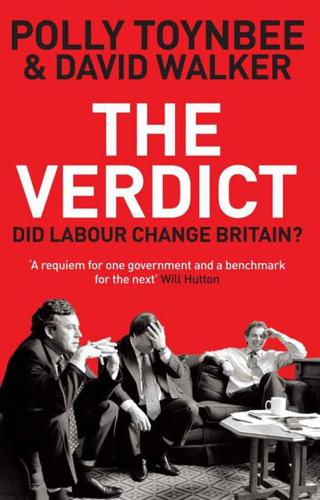
The Verdict: Did Labour Change Britain?
by
Polly Toynbee
and
David Walker
Published 6 Oct 2011
Nothing was done about the growing anomalies of the hated council tax, neither a full-blown property tax of the kind most other countries had, nor a local tax on income. If Whitehall provided 80 per cent of local funding, councils’ autonomy was necessarily going to be limited. Further inquiries only repeated the question. Labour gave councils freedom to spend funds from housing sales under the Right to Buy and to borrow ‘prudentially’. The Local Government Act 2000 ended personal surcharges for councillors, fining them for decisions taken in office, unlike anything that applied to MPs or ministers. Instead, councillors were to answer for their conduct to a new quango, the Standards Board for England.
…
The judges, usually cautious, also used the HRA to fix a right to privacy in cases involving Naomi Campbell and Max Mosley. Government and public had black-and-white notions of security yet were uncertain when a right to protection against something became an entitlement to a service or benefit. The HRA and the judges were confused too. How could the statute give a Somali migrant a right to a council house? Could you have a claim on something that elected representatives had built, after complex decisions about tax, spending and need? The public, egged on by the media, were aghast: ‘rights’ offended embedded ideas of fairness. But the public were also dead keen on their own rights in context. Labour mishandled the politics, reacting petulantly to adverse judicial decisions under the HRA and blankly refusing to explain to an increasingly hostile public the teasing ambiguities at the heart of the enterprise.
…
They included both the children of diplomats from war-torn Somalia or Iran, who benefit from strong encouragement from parents, and the children of poor rural foreign families not literate even in their own language. Migration into the eastern part of Enfield was big and fast, yet far from unusual. It was a tiny miracle that the local authority coped so well and it is puzzling how little impact this social transformation had on borough politics. In theory Oakthorpe’s eleven-year-olds could choose the borough’s surviving state-maintained grammar school. Or rather, it might choose them, if they passed its tests. English secondary education remained partially selective and the survival of the grammars proved how confused the government was.

The Default Line: The Inside Story of People, Banks and Entire Nations on the Edge
by
Faisal Islam
Published 28 Aug 2013
She inherited home ownership levels of 57 per cent, which rose to 65 per cent as the first of 2 million council homes were sold under her ‘Right To Buy’ policy. Home ownership reached 71 per cent, at which point Gordon Brown voiced the aspiration that it rise to 80 per cent. It is now back down to 65 per cent. It might be reasonable to suggest Right to Buy was a generational giveaway to Britons born in the 1950s and 1960s. It seems difficult to imagine how it could be repeated. If you strip out the ‘one-off’ of Right To Buy sales, the like-for-like percentage is now already below Mrs Thatcher’s 57 per cent. Lastly, if – as some bond traders believe – the 1.3 million Britons with an interest-only mortgage and an inadequate repayment vehicle are enduring ‘glorified renting’, then you can take the home ownership figure down to around 50 per cent, or where we were in 1971 – or roughly German levels.
…
Progressive voices keen to redistribute through benefits have said very little about the overarching negative redistribution caused by the trebling of house prices. All political parties claim to want to foster ‘social mobility’, yet it seems that where you live will be determined more now by where your parents lived. The recent history of property in Britain is wrapped up in notions of freedom and the social mobility of owner-occupation and right-to-buy. Yet right now, Britain faces a return to a more traditional relationship with the land, in which property is the principal agent for holding back opportunity-for-all. The property ladder was a one-off opportunity for a lucky generation-and-a-half. Now we are back to a kind of neo-feudalism, in which your quality of life depends on who your parents are, and what they owned. 6 Three Funerals, Two Banking Systems and a Wedding Dramatis personae Bob Diamond, Barclays, various (1996–2012), chief executive (2010–12) Cristiano Ronaldo, Portuguese footballer Alistair Darling, UK chancellor of the exchequer (2007–10) John Varley, Barclays chief executive (2004–11) Eric Daniels, Lloyds chief executive (2003–11) Peter Sands, Standard Chartered chief executive (2006–) Fred Goodwin, Royal Bank of Scotland chief executive (2001–08) Monty Slater, prospective RBS customer, Stockport James Crosby, HBoS chief executive (2001–06); non-executive, then deputy chairman of the FSA (2004–09) Andy Hornby, HBoS chief executive (2006–08) Christine Lagarde, French finance minister (2007–11) Beth Jacobson, former loan officer, Wells Fargo Sheila Dixon, mayor of Baltimore Brad Setser, economist, subsequently US Treasury Joe Cassano, AIG Financial Products, Mayfair, London Lord Turner, chairman of the FSA (2008–13) Lord Myners, Treasury minister Mervyn King, governor of the Bank of England (2003–13) Shriti Vadera, adviser to Gordon Brown, Business Department minister Hector Sants, FSA chief executive (2007–12) Marcus Agius, chairman of Barclays (2007–12) On 13 May 2007 Bob Diamond had only one aim: to give a wide berth to Cristiano Ronaldo.
…
Lastly, if – as some bond traders believe – the 1.3 million Britons with an interest-only mortgage and an inadequate repayment vehicle are enduring ‘glorified renting’, then you can take the home ownership figure down to around 50 per cent, or where we were in 1971 – or roughly German levels. In other words, the Thatcher ‘property-owning democracy’ was really only a property-owning generation given a one-off gift of their council houses. It undoubtedly felt very real to those who benefited, but it is not proving to be a genuinely transformational and enduring force. At the very least, very high house prices are undoing the political promise of the property-owning democracy. Arguably, though, the property-owning democracy is a myth.

Finance and the Good Society
by
Robert J. Shiller
Published 1 Jan 2012
One example of a derivatives market is a forward market for a commodity, in which one can sign a contract to buy from another a commodity or a property for future delivery at a speci ed date at a speci ed price. Another example is a futures market for a commodity, which is the same as a forward market except that it occurs on an organized exchange with established standards for quality, margining, and so forth. There are also markets for options: with an option one can purchase the right to buy something, say a stock or a bond, at a speci ed future date for a speci ed future price. Yet another example is a swap market: in a swap, such as a foreign exchange swap, two parties agree to exchange nancial instruments (in this example two currencies) at a speci ed time in the future at a prespeci ed exchange rate.
…
The concept of a “property-owning democracy” was developed by Conservative British member of Parliament Noel Skelton in the 1920s and 1930s. His cause was taken up by Prime Minister Harold Macmillan in the 1950s, with a home building program, and Prime Minister Margaret Thatcher in the 1970s, with a program to sell council houses (public housing managed by local councils) to their renter inhabitants. In the United States major policies to promote homeownership came in the 1930s with President Franklin D. Roosevelt’s New Deal. The Federal Housing Administration was created in 1934 to provide for government insurance of new mortgages, and the Federal National Mortgage Association (later called Fannie Mae) was created in 1938 to buy mortgages from their originators to support the housing market.
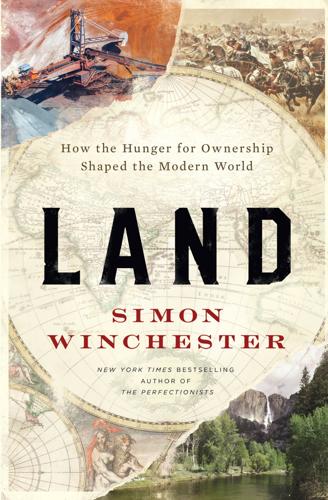
Land: How the Hunger for Ownership Shaped the Modern World
by
Simon Winchester
Published 19 Jan 2021
It was through later legislation like the Distributive Preemption Act of 1841 that white settlers were able to ease their way into ownership, and the United States to expand its populated self ever westward. This law gave half a million acres of federal land to each of nine designated midwestern states. It then allowed any citizen who was squatting on that land the right to buy it from the government for $1.25 an acre, so long as he pledged to work it and improve it for a minimum of five years (if he didn’t, the federal government could take the land back). Ten percent of the total revenue from any sale was then handed to the states to help build roads, bridges, canals, and railroads.
…
Gerald and those who thought like him believed, so long as he remained in Belfast, that it was his God-given duty to defend to the death the idea that the land in which he lived would remain eternally under the invigilation of London and would remain steadfastly and loyally part of the United Kingdom. Mary, so often frightened and beleaguered by gunfire as she sheltered in her little council house in Andersonstown, had no such wish, but dreamed instead that one distant day all of the island of Ireland would be peacefully united, as geography suggested it should be, under the equally warm supervision of Dublin. The argument had little to do with religion, in any meaningful sense. It had very much more to do with such concepts as rule, possession, organization, sovereignty, independence, political union, separation, legal systems—and all of those things that were to be determined by who, in the end, ruled the land on which these two, and all those in Belfast, all in Fermanagh and Tyrone, Armagh and Antrim, Derry and Down, lived out their days.
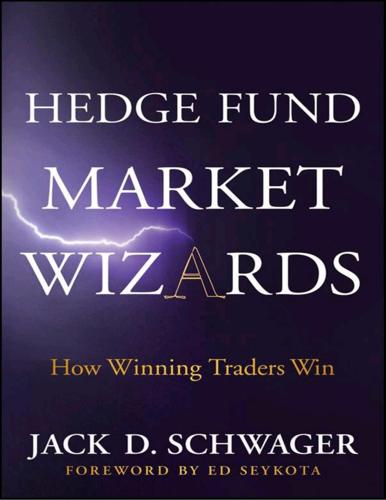
Hedge Fund Market Wizards
by
Jack D. Schwager
Published 24 Apr 2012
A put option provides the buyer with the right—but not the obligation—to sell the underlying item at the strike price at any time prior to expiration. (Note, therefore, that buying a put is a bearish trade, while selling a put is a bullish trade.) The price of an option is called a premium. As an example of an option, an IBM April 130 call gives the purchaser the right to buy 100 shares of IBM at $130 per share at any time during the life of the option. The buyer of a call seeks to profit from an anticipated price rise by locking in a specified purchase price. The call buyer’s maximum possible loss will be equal to the dollar amount of the premium paid for the option.
…
Clark began our conversation by telling his story from the time he finished school at the age of 17. I did my A levels a year early, and left school at the age of 17. I knew nothing about university. No one in my family had been to university. You came from a working-class background? I was the third generation, all living in the same council house—government housing is what I guess you would call in the U.S.—on the outskirts of London. I didn’t know my father; he didn’t hang around. I lived with my mother, brother, and grandparents. My mother was always working, so I was sort of half-raised by my grandparents. One day, I got a call from Grant, a school friend who now works here—a call for which I am eternally grateful.

Capitalism and Its Critics: A History: From the Industrial Revolution to AI
by
John Cassidy
Published 12 May 2025
Still, despite these qualifications, Thatcher’s strident nationalism together with her get-tough message on violent crime and welfare recipients appealed to certain elements of the British working class. So did her “popular capitalism” agenda, such as giving public housing tenants the right to buy their homes and selling cheap shares in companies like British Telecom and British Gas. “Council house buyers, privatized share purchasers, and employed union leavers had distinctive attitudes toward nationalization and redistribution,” the political scientist Geoffrey Garrett wrote in a 1992 study of survey data from the 1980s. “In all instances, those directly affected by the Conservatives’ reforms supported the ‘free market’ positions of more privatization and less redistribution of societal wealth.
…
In the 1970s, the highest rate of income tax on earned income was 83 percent; by 1990, it had been reduced to 40 percent.24 At the other end of the income scale, the government cut unemployment benefits and restricted access to them. It also deregulated the financial sector, replaced local property taxes with a uniform national poll tax, and gave millions of people living in public housing the right to buy their homes at a discount to their market value. This latter policy proved popular with former tenants who were able to buy their homes on the cheap, but it contributed to a shortage of affordable social housing. Following advice that Milton Friedman had offered during the 1970s, and during a visit to England in 1980, Thatcher’s government sold off dozens of publicly owned companies, including British Aerospace, British Airways, British Gas, British Steel, and Rolls-Royce.25 British Leyland, the nationalized car company that had been home to “Red Robbo,” was dismantled and sold to other car companies in bits.
…
In a letter to one his fellow directors, he wrote: “I shall only say that such a scene of anarchy, confusion, bribery, corruption, and extortion was never seen or heard of in any country but Bengal; nor such and so many fortunes acquired in so unjust and rapacious a manner.”17 During the year 1756 alone, according to one estimate, the Company’s employees in India sent home to England about £80,000 from their trading gains. In the decade after Plassey, these annual remittances jumped more than sixfold, to about £500,00018 (in today’s money, more than £60 million). Clive forced Company employees to sign contracts saying they would no longer accept corrupt payments, or “gifts,” from local authorities. He cracked down on private trading by setting up a Company-run Society of Trade and granting it a monopoly on the internal trade of certain items, including salt, betel nuts, and tobacco.19 Clive also targeted individuals whom he regarded as particularly corrupt, including John Johnstone, Bolts’s trading partner.
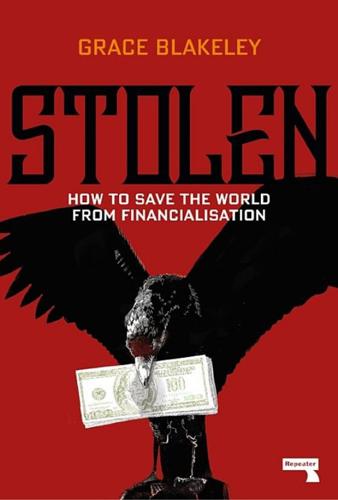
Stolen: How to Save the World From Financialisation
by
Grace Blakeley
Published 9 Sep 2019
Property wealth is the second most significant source of wealth in the UK after private pensions wealth, worth £4.6bn.35 Prices in London have risen faster than those in other parts of the country, and now property wealth represents almost 50% of the net wealth of people living in London, compared to 26% for those living in the North East. This increase in house prices began during the 1980s, as part of Thatcher’s push to create a “property-owning democracy”.36 Right-to-Buy legislation, which allowed tenants of social housing to purchase their home at between one- and two-thirds of its market value, was passed in 1980. In 1984, the amount of time a tenant had been living in a flat before they were able to benefit from Right-to-Buy was reduced, and the potential discounts on the property’s value were increased. In the first seven years of the 1980s, 6% of Britain’s social housing stock was sold to private owner-occupiers.
…
If everyone wants to buy housing, and is able to access a mortgage, but the housing stock remains fixed, then the price of housing will rise. From the end of the 1990s recession, the amount of money created and directed into housing increased at a far faster rate than the number of houses for sale, increasing prices. In place of rising wages, Thatcher may as well have said “let them eat houses”. Financial deregulation and right-to buy, combined with the pension fund capitalism released by the Big Bang, allowed the Conservatives to transform the British middle earners into mini-capitalists who would benefit from the financialisation of the economy. By providing capital gains to a large swathe of the population, the Conservatives would be creating a class of people who had a material interest in the economy remaining as it was, even if most of the gains from growth were going to the top 1%.
…
Globalisation may have harmed British manufacturing, but it could help to provide support for those “left behind” by bolstering the City as a global financial centre. Whilst finance has always played a central role in British politics, in the 1980s and 1990s the City’s dominance was taken to a whole new level. This was initially catalysed by Thatcher’s policies — from bank deregulation, to right-to-buy, to the Big Bang. But Blair and Brown took this process one step further. They developed a complex and arcane regulatory architecture for the City that was easy for insiders to manipulate. These organisations were given a mandate to implement “light touch” regulation on the finance sector, to encourage “innovation” and promote investment.7 Meanwhile, billions of pounds were pumped into the UK’s real estate market, inflating a bubble that would eventually burst in the biggest financial crisis since 1929.
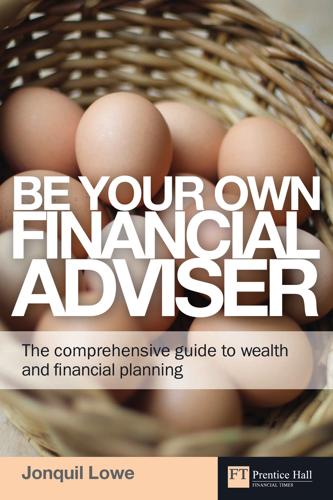
Be Your Own Financial Adviser: The Comprehensive Guide to Wealth and Financial Planning
by
Jonquil Lowe
Published 14 Jul 2010
If you do not qualify for NHS continuing care, you can still ask for a financial assessment by your local authority to find out if it will help towards paying your care home fees. If you have savings and other capital above a set threshold, you will have to pay the full cost of the fees yourself. These upper capital limits for 2009–10 are shown in Table 5.6. If your capital is less than the upper limit, your local authority may help with the fees but only up to a set maximum which varies from one local authority to another. To find out how much help your local authority will give, your means are assessed broadly as set out below. The rules are complicated and this is just a broad outline: OO Your capital up to the lower limit set out in Table 5.6 is disregarded.
…
Options are similar to futures except that you have the right, rather than an obligation, to buy an underlying commodity or investment at a fixed M10_LOWE7798_01_SE_C10.indd 325 05/03/2010 09:51 326 Part 3 n Building and managing your wealth price at a future time. If you do not stand to make a profit from exercising an option, you can simply let it lapse. An option that gives you the right to buy an underlying commodity or investment is called a call option. You can also buy options that give you the right to sell an investment at a set price in future and these are called put options. Taking delivery of the underlying commodity or investments is called exercising the option. But you do not have to hold the option until the exercise date.
…
But you do not have to hold the option until the exercise date. Instead you can sell it on a derivatives market. The main market is the UK is LIFFE (originally the London International Financial Futures Exchange) which is now part of an international group, NYSE-Euronext. What you are selling is your right to buy or sell, not the underlying assets themselves. Using options for hedging Suppose you own 10,000 shares in a Company X. Currently their price stands at £1 per share. You are worried that their price might fall. You could just sell the shares now and realise the £10,000 while you can. But suppose the shares rise rather than fall?
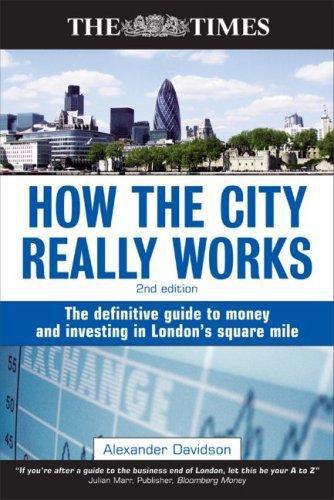
How the City Really Works: The Definitive Guide to Money and Investing in London's Square Mile
by
Alexander Davidson
Published 1 Apr 2008
Issuers are often attracted to a bought deal because it gives instant liquidity. Rights issues If a UK company wants to raise more than 5 per cent of its existing market capitalisation, it must use a rights issue. The company will issue new shares to existing shareholders pro rata to their existing holdings. In a ‘1 for 5’ rights issue, shareholders will have the right to buy one further new share for every five they hold. The process takes perhaps six to eight weeks, twice the length of a conventional share offering. Through a rights issue, shareholders have an opportunity to acquire new shares without paying their stockbroker a commission. They do not have to buy and, if they are to do so, must be convinced that the company will use the cash properly.
…
Options Options may be over the counter (OTC) or exchange traded (see Chapter 8). If you are a retail investor, a traded option on exchange is accessible. It enables you to bet on the movement of individual shares, or of indices, currencies, commodities or interest rates, or may be used for hedging. Through an option, you have the right to buy or sell a security at a pre-determined price, the exercise price, within a specified period. The option is geared, which means that the underlying share or other asset is under control for the comparatively small upfront cost of the premium, which is the market price of the option. The premium is a small percentage of the option’s size.
…
The London Stock Exchange (LSE) introduced them in late 2002 in an early move to obtain a significant presence in derivatives after its failed attempt the previous year to buy the London International Financial Futures Exchange (LIFFE). So far, covered warrants in the FTSE 100 index have proved the most popular in a market that has been slow to take off. The covered warrant is a security and not a contract. As with options, traders in covered warrants pay a small premium, which is the amount they pay for the right to buy or sell the underlying asset, and the warrants are split into calls and puts. As time passes, the covered warrant becomes less valuable, which is reflected in a declining premium. Every covered warrant is normally traded before its maturity date and is covered because the issuer covers its position by simultaneously buying the underlying stock or financial instrument in the market.
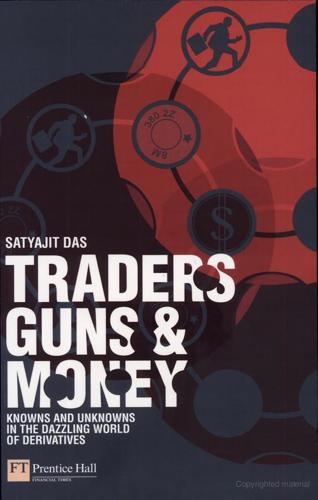
Traders, Guns & Money: Knowns and Unknowns in the Dazzling World of Derivatives
by
Satyajit Das
Published 15 Nov 2006
The best known goes like this: ‘How many workers does it take for Toyota to make a motor car?’ ‘Four. One to design it, one to build it and two to trade the long bond.’5 The most famous form of zaiteku was the ‘Japanese warrants arbitrage’. Japanese companies issued bonds with attached equity warrants; the warrants gave the buyer the right to buy shares in the company, effectively a call option on the shares; the company received the premium for the option as a low interest rate on its borrowing. The Japanese companies competed with each other to get lower interest rates. Dealers competed with each other to give the Japanese companies lower interest rates.
…
I had had a few blow-ups before but they had been manageable, I had kept my job. Then, I did a six month currency option for $1,000 million. It was for a very good client. The sales desk put lots of pressure on me: I foolishly obliged. It was an Australian dollar (A$) put/US dollar (US$) call with a strike price of A$1:$US0.7210. I was giving the client the right to buy US$1,000,000,000 from me. In return, they would give me A$1,386,962,552. They would only exercise the option if the A$ fell below US$0.7210, say to US$0.70. I traded in the currency markets to hedge the option. This meant that I sold A$/bought $US according to our pricing model. The idea is that you match the delta of the option with the delta of the currency trade.
…
Convertible bonds are a venerable product. A convertible bond gives the holder the right to exchange the bond for shares in the issuer; you give up your entitlement to future interest and return of capital in return for a fixed number of shares. It is a bond combined with an equity option. The equity option gives the holder the right to buy shares in the issuer. In return for giving the investor the share options, the issuer of the convertible bond gets lower interest rates. I have issued convertibles, structured convertibles and traded convertibles. Issuers are generally told that they were selling equity at a premium to the current market price.
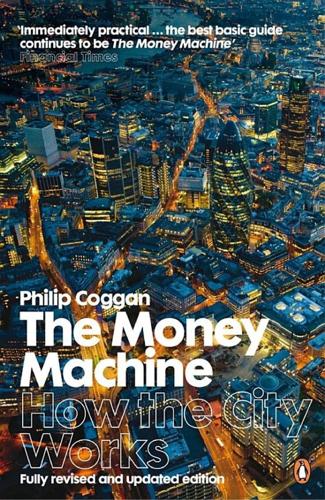
The Money Machine: How the City Works
by
Philip Coggan
Published 1 Jul 2009
Options Options differ from other types of equity investment because they are not issued by the companies concerned. Instead, they are instruments traded on stock exchanges designed to give investors greater leverage and to act as hedging vehicles for those investors worried about future share price movements. Options grant the buyer the right to buy (a call option) or to sell (a put option) a set number of shares at a fixed price. The option buyer is not obliged to buy or sell at that price if it is not advantageous to do so. In return for granting the option, the option seller receives a non-returnable premium. An example will help explain the principles involved.
…
The borrower will be able to offer a reduced coupon on the original bond issue because of the potential benefits to the investor of conversion. If the investor converts, the company will increase its equity base but will dilute the value of its shares. Another means of achieving a similar effect is to issue a bond with equity warrants attached which grant the investor the right to buy the company’s shares at a set price. The difference between the two methods is that with a straight convertible the borrower gets the benefit of a reduced cost of borrowing because of the lower coupon and with a warrant the borrower receives the benefit in the form of additional cash from the sale of the warrant.
…
By varying the rate it charges banks for lending against gilts, it can affect the level of interest rates charged throughout the economy. Hence, the key UK interest rates which used to be known as the base, or minimum lending, rate is now known as the repo rate. Not all instruments in the money market are tradeable. Local authority loans form one of the oldest sectors of the money markets. Lending money to local authorities is a steady and unspectacular business but the 1980s storms over rate-capping highlighted the fact that local authorities look to the City for funds. THE PLAYERS IN THE MARKETS The bulk of the activity in the markets consists of banks borrowing and lending to and from each other, sometimes with the assistance of a broker.
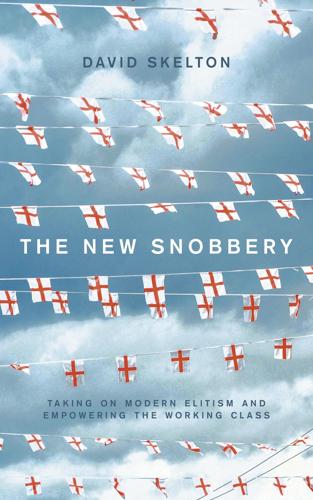
The New Snobbery
by
David Skelton
Published 28 Jun 2021
For decades, the skills of local authorities have been cut back, with councils’ powers being reduced, local authorities being urged to embrace outsourcing and national firms utilising ‘economies of scale’ to provide services. Whilst this might have had rationale in terms of cost-cutting, it has reduced the potential of local authorities to have a strong local skillset, decreased their ability to coordinate local improvement and diminished the accountability of local services. Restoring the importance of a lifelong and skilled career and increasing state capacity at a local level will help enable local authorities to take the lead in the rebuilding of social capital.
…
In 1979, for example, more trade unionists voted for Thatcher’s Tories than Callaghan’s Labour, partially in response to the capture of union leadership by parts of the hard left. Research by Lord Ashcroft in 2013 has even shown that most Unite members were deeply disengaged by the politics of the union’s leadership. A majority opposed union policy on abolishing the Right to Buy, reducing the voting age to sixteen and contesting the introduction of a benefit cap (some 86 per cent supported this policy). The obsession with fringe left issues that do nothing to improve conditions for workers and everything to alienate present and potential members has proved hugely counterproductive to both trade unions and the economy as a whole.
…
Rebuilding strong civic institutions built around a sense of local identity, enduring physical infrastructure and high-quality shared public space will all be important. Giving real power to local authorities and providing them with the resources to build recovery would be an important step in achieving this. An element of levelling up has concentrated on distributing funds from a central pot. This is an important approach, but the most transformative approach should come from giving communities the power, the resources and the skills to revive themselves, and the scope to experiment and innovate. Rebuilding institutional capacity within local authorities and giving greater power to cities, counties and towns would be a useful first step.
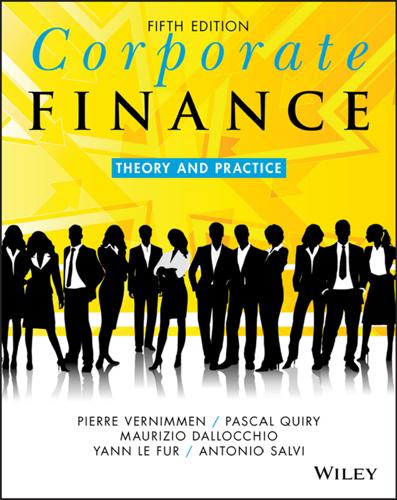
Corporate Finance: Theory and Practice
by
Pierre Vernimmen
,
Pascal Quiry
,
Maurizio Dallocchio
,
Yann le Fur
and
Antonio Salvi
Published 16 Oct 2017
To subscribe to the new shares, investors must first buy one or more rights detached from previously existing shares, whose price is theoretically such that it doesn’t matter whether they buy previous existing shares or use the rights to buy new ones. The detachment of the right from the existing shares makes an adjustment necessary. For a rights issue, the adjustment coefficient is: If P is the price of the already existing share, E the issue price of the new shares, the number of new shares and N the number of already existing shares, then the adjustment coefficient will be equal to: More generally, the adjustment coefficient is equal to the price after detachment of the right (either the right to receive a free share or the right to buy a new one) divided by the price before detachment of the right.
…
A deferred redemption period is a grace period, generally at the beginning of the bond’s life, during which the issuer does not have to repay the principal. The terms of the issue may also include provisions for early redemption (call options) or retraction (put options). A call option gives the issuer the right to buy back all or part of the issue prior to the maturity date, while a put option allows the bondholder to demand early repayment. A redemption premium or discount arises where the redemption value is higher or lower than the nominal value. (d) Maturity of the bond The life of a bond extends from its issue date to its final redemption date.
…
Options are an effective tool of analysis whose applications are limited only by financial managers’ imaginations. The purpose of this chapter is not to make you a wizard in manipulating options or to teach you the techniques of speculation or hedging with options, but merely to show you how they work in practice. Section 23.1 Definition and theoretical foundation of options An option gives you the right to buy or sell an asset at a predetermined price during a predetermined period. 1. Some basic definitions There are call (buy) options and put (sell) options. The asset that can thereby be bought or sold is called the underlying asset. This can be either a financial asset (stock, bond, Treasury bond, forward contract, currency, stock index, etc.) or a physical one (a raw material or mining asset, for example).
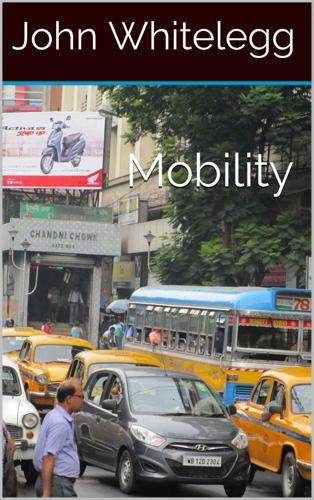
Mobility: A New Urban Design and Transport Planning Philosophy for a Sustainable Future
by
John Whitelegg
Published 1 Sep 2015
Up until the end of March 2014, Beijing, Shanghai, Guiyang, Guangzhou, Shijiazhuang, Tianjin and Guangzhou had already joined in similar efforts to restrain car ownership. Shanghai has adopted the Singapore-style Certificate of Entitlement for new car purchase, which means bidding at an auction for the right to buy a new car.” In addition to measures to restrict car use there are measures to improve urban public transport: “On the other hand, priority has now been transferred towards developing Urban Public Transport (UPT) at the national strategy level, especially Rapid Mass Transit (RMT) through the Twelfth Five-Year Plan.
…
EEA (2013) has quantified the proportionate responsibility of transport emissions in the totality of air pollution: “The contribution of transport to air quality ..was responsible for 58% of all NOx emissions…and 27% of PM 2.5 emissions..and the contribution of urban and local traffic to PM10 concentration is 35%, while it is up to 64% in the case of NO2 concentrations.” Air quality policy and practice in the UK is a clear case of policy failure and decisions at all levels not to do anything to improve air quality (Whitelegg, 2013). Local authorities in the UK have a legal duty under the 1995 Environment Act to monitor air quality, declare Air Quality Management Areas (AQMAs) if air quality fails to meet the EU standard and put in place an Air Quality Action Plan (AQAP) to improve air quality. There are approximately 405 AQMAs in the UK and there is no documented case in the UK of the removal of the AQMA designation because the AQAP has improved air quality and solved the problem.
…
There is a stark contrast between the accumulated knowledge on the severe effects of poor air quality on human health (39,450 deaths pa in the UK) and the gross inadequacy of the policy response. The Lancaster City Council Air Quality Strategy (Lancaster City Council 2013) does not contain a single action or intervention that the local authority will initiate or implement that is likely to produce an improvement in air quality. This is a serious public policy and public health failure. The statutory responsibility for improving air quality has been in place for 20 years and there is still no action plan that contains actions and this is in spite of the clear evidence in the strategy that air pollution deaths occupy the 3rd rank after smoking (1) and obesity (2).

The Origins of Political Order: From Prehuman Times to the French Revolution
by
Francis Fukuyama
Published 11 Apr 2011
Peace was kept not by a rough balance of power between groups of kin but by the state’s army and police, now a standing force that could also defend the community against neighboring tribes and states. Property came to be owned not by groups of kinfolk but by individuals, who increasingly won the right to buy and sell it at will. Their rights to that property were enforced not by kin but by courts and legal systems that had the power to settle disputes and compensate wrongs. In time, moreover, social rules were formalized as written laws rather than customs or informal traditions. These formal rules were used to organize the way that power was distributed in the system, regardless of the individuals who exercised power at any given time.
…
Some rights to land were mainmortable—that is, they passed to their children only if their children lived with them; otherwise they reverted to the landowner. In the eighteenth century, the abolition of mainmort became one of the great causes of liberal reformers. In other cases, peasants graduated to the status of landowners with complete rights to buy, sell, and hand down their land as they saw fit. On the eve of the French Revolution, peasants owned 50 percent of the land in France, more than twice as much as the nobles.3 Tocqueville points out that lords by then had long since ceased to play any real role in governing their peasants, which is why their residual rights to collect a variety of fees or to force the peasants to use their mills or winepresses was so bitterly resented.4 Precisely the opposite happened in Eastern Europe.
…
Like the American Declaration of Independence, however, the Glorious Revolution did establish the principle of popular consent, leaving it up to succeeding generations to widen the circle of those considered the “people” in a political sense. The significance of the Glorious Revolution is not that it marked the onset of secure property rights in England, as some have argued.34 Strong property rights had been established centuries earlier. Individuals, including women, exercised the right to buy and sell property as far back as the thirteenth century (see chapter 14). The Common Law and the multiplicity of royal, county, and hundred courts allowed nonelite landowners to litigate property disputes outside of the jurisdiction of the local lord. A strong capitalist economy had already emerged by the late seventeenth century, as had a growing middle class who were participants in the struggle against Stuart absolutism.

A United Ireland: Why Unification Is Inevitable and How It Will Come About
by
Kevin Meagher
Published 15 Nov 2016
They could not marry Protestants and any priest who did so faced death for his trouble. Catholic bishops were banned from the country (on pain of death) and priests needed to be registered (failure to do so saw them branded on the cheek). No Catholic could own a horse with a value of more than five pounds. (Ingeniously, this law allowed a Protestant the right to buy any horse from any Catholic for that amount.) The philosopher Edmund Burke described the system of Penal Laws as ‘a machine of wise and elaborate contrivance, as well fitted for the oppression, impoverishment and degradation of a people, and the debasement in them of human nature itself, as ever proceeded from the perverted ingenuity of man’.
…
‘I have investigated the matter, and I find that there are thirty Protestants, and only one Roman Catholic, there temporarily.’ These attitudes permeated every corner of the state. Electoral boundaries were gerrymandered to ensure Unionist hegemony wherever possible. This was significant because Northern Ireland was a patchwork of small local authorities. By the late 1960s, there were some seventy-three local authorities for a population of 1.5 million. Crucially, the franchise for local elections was on the basis of property ownership, not universal suffrage. It was estimated that in 1961 over a quarter of the parliamentary electorate were disfranchised at local elections. Moreover, the retention of a company vote entitled business directors to more than one ballot paper.

J.K. Lasser's Your Income Tax 2014
by
J. K. Lasser
Published 5 Oct 2013
To claim a deduction for the price of the tickets the couple should have returned them to the charity. Donation for the right to buy athletic stadium tickets If you contribute to a public or nonprofit college or university and receive the right to buy preferential seating at the school’s athletic complexes, you may deduct 80% of the contribution to the school. The 80% deduction also applies where your contribution gives you the right to buy seating in stadium skyboxes, suites, or special viewing areas. The cost of any tickets you buy is not deductible. The deduction is allowed only to the extent that you receive the right to buy tickets rather than the tickets themselves.
…
There is also an exception if the contribution is to a religious organization and the only benefits received are “intangible” religious benefits, such as admission to religious ceremonies; these do not have to be described or valued, but the statement must indicate that they are the sole benefits provided. - - - - - - - - - - Filing Tip Right To Buy Athletic Stadium Tickets The IRS considers 20% of the amount paid for the right to buy college or university athletic seating to be the fair market value of the right. You may deduct 80% (14.3). When your payment is $312.50 or more, you are considered to have made a contribution of at least $250 ($250 = 80% of $312.50), requiring a written acknowledgment from the charity
…
Corporate benefit may be treated as constructive dividend On an audit, the IRS may charge that a benefit given to a shareholder-employee should be taxed as a constructive dividend. For example, the Tax Court agreed with the IRS that a corporation’s payment for a license that gave the sole shareholder the right to buy season tickets to Houston Texans football games was a constructive dividend. 4.8 Taxable Stock Dividends The most frequent type of stock dividend is not taxable: the receipt by a common stockholder of a corporation’s own common stock as a dividend (4.6). Taxable stock dividends The following stock dividends are taxable: Stock dividends paid to holders of preferred stock.

Owning the Earth: The Transforming History of Land Ownership
by
Andro Linklater
Published 12 Nov 2013
They included settlers annoyed by the dues they were forced to pay on their land, such as the annual quit-rent to the proprietors; devout Anglicans irritated by the policy of religious tolerance that gave equal rights to Jews and Quakers; fur traders infuriated by the proprietors’ insistence that they alone had the right to buy pelts from Native Americans; and slave owners chafing against the proprietors’ refusal to allow raids on the Spaniards who harbored runaway slaves in Florida. There was a pattern to this apparently incoherent range of discontents. And despite the tone of his letter, Locke showed that he understood its cause when he came to write the work for which he is now best known, Two Treatises on Government.
…
Peck in 1810, he had cleared the way for the owners of real estate to buy and sell their property according to the relatively clear-cut federal laws of contract rather than by the convoluted principles of common law that in England had become burdened with entails, reversions, jointures, indentures, and other legal defenses against the sale of land. Thirteen years later, in the case of Johnson v. M’Intosh, Marshall confirmed what Jefferson had always asserted, that only the United States government had the right to buy the territory of “dependent nations,” meaning Native Americans, within its frontier, and thereby ensured that a seemingly inexhaustible supply of nationalized land would be available for sale with clear title to new Americans. Taken together, Marshall’s two judgments made it simple to treat a parcel of land as capital, meaning both as a reserve of past earnings and a resource to be exploited in the future.
…
Back in Britain, the government’s fury was stoked further by the way the dubiously acquired property was being sold to investors “merely as means of carrying on gambling speculations by persons who never dream of becoming colonists,” as a government report put it. More officials were sent out specifically to protect Maori interests, and the Colonial Office asserted the Jeffersonian principle that only the government had the right to buy directly from its indigenous owners. But nothing could stop the property engine. The first New Zealand land was quickly sold in London, and in 1842 some thirty-two hundred emigrants, almost half of them children, arrived to farm the presurveyed land at Nelson in the South Island. Following Wakefield’s blueprint, it had been planned that the first thousand lots, each of two hundred acres, would be sold for $7.50 an acre, with half the profits paying for the emigration of more buyers.

When Money Dies
by
Adam Fergusson
Published 25 Aug 2011
Hohler provided the Foreign Office with a detailed breakdown of how the Hungarians were reacting to their new financial burdens. State officials, he said, had been extremely hard hit, unable to strike, and kept alive only because their still meagre salaries were supplemented by certain privileges such as nominal rail fares and the right to buy some of their needs cheaply. Even so, it was 'difficult to understand how those of them unable illicitly to profiler de I'occasion manage to exist'. Army officers were scarcely better off. A major, for example, who was paid 575 korona a week before the war now received 17,000 a week (or about £1 los), whereas he would need 184,000 a week to regain his former spending power.
…
Though unable to raise their rents, many landlords at least had the consolation that their own mortgage payments were no more than a nominal burden to them — a consideration which had long since dismayed the depositors and shareholders of the mortgage banks. Under such circumstances, however, no new buildings at all were being put up by private developers, most of whom had been virtually expropriated. More than 42,000 families were waiting for the 6,000 or so dwellings which the local authorities built in Vienna each year. This shortage land the regulation whereby the local authorities, not the landlords, decided who would go into any flat which became empty, led to a great deal of jobbing and corruption in an area where it was already rife. The period of Austrian rehabilitation, of heavy taxation and drastic cuts in public spending, was one of great popular suffering, of continuing class and group hatred, and of political struggle.
…
The panic spread to the working classes when they realised that their wages were simply not available. Because the Reichsbank's printing presses and note-distribution arrangements were insufficient for the situation, a law was passed permitting, under licence and against the deposit of appropriate assets, the issue of emergency money tokens, or Notgeld, by state and local authorities and by industrial concerns when and where the Reichsbank could not satisfy employers' needs for wage-payment. The law's purpose was principally to regularise and regulate a practice which had gone on extensively for some years already, with the difference that authorised Notgeld would now have the Reichsbank's guarantee behind it.
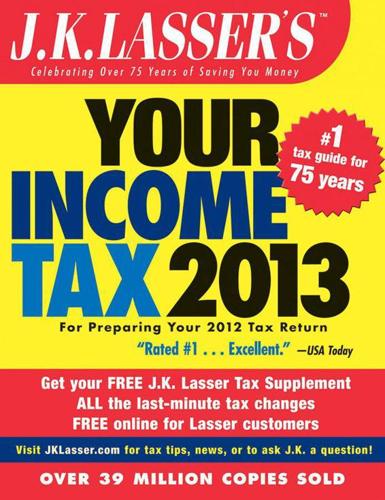
J.K. Lasser's Your Income Tax
by
J K Lasser Institute
Published 30 Oct 2012
To claim a deduction for the price of the tickets the couple should have returned them to the charity. Donation for the right to buy athletic stadium tickets. If you contribute to a public or nonprofit college or university and receive the right to buy preferential seating at the school’s athletic complexes, you may deduct 80% of the contribution to the school. The 80% deduction also applies where your contribution gives you the right to buy seating in stadium skyboxes, suites, or special viewing areas. The cost of any tickets you buy is not deductible. The deduction is allowed only to the extent that you receive the right to buy tickets rather than the tickets themselves.
…
There is also an exception if the contribution is to a religious organization and the only benefits received are “intangible” religious benefits, such as admission to religious ceremonies; these do not have to be described or valued, but the statement must indicate that they are the sole benefits provided. - - - - - - - - - - Filing Tip Right To Buy Athletic Stadium Tickets The IRS considers 20% of the amount paid for the right to buy college or university athletic seating to be the fair market value of the right. You may deduct 80% (14.3). When your payment is $312.50 or more, you are considered to have made a contribution of at least $250 ($250 = 80% of $312.50), requiring a written acknowledgment from the charity
…
Corporate benefit may be treated as constructive dividend. On an audit, the IRS may charge that a benefit given to a shareholder-employee should be taxed as a constructive dividend. For example, the Tax Court agreed with the IRS that a corporation’s payment for a license that gave the sole shareholder the right to buy season tickets to Houston Texans football games was a constructive dividend. 4.8 Taxable Stock Dividends The most frequent type of stock dividend is not taxable: the receipt by a common stockholder of a corporation’s own common stock as a dividend (4.6). Taxable stock dividends. The following stock dividends are taxable: Stock dividends paid to holders of preferred stock.
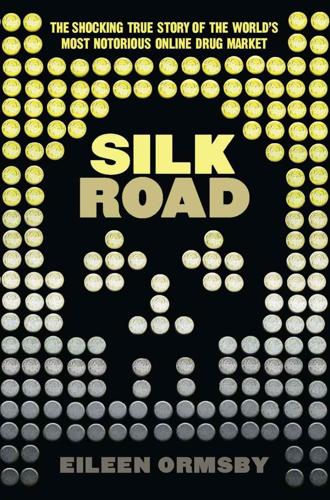
Silk Road
by
Eileen Ormsby
Published 1 Nov 2014
Both the Silk Road forums and Reddit’s Silk Road sub-Reddit held lengthy discussions debating whether there had been more than one owner of Silk Road and, if so, how many and in what timeframe. Many of the theories were plausible; some were fanciful. Dread Pirate Roberts, affectionately known as DPR, became an active and visible member of Silk Road’s large community, where he was hailed as a hero by those who believed it was their right to buy drugs without the interference of law enforcement bodies. More than that, his vision seemed to come from a place of peace, compassion and a genuine desire to provide a safer, better way for otherwise law-abiding citizens to procure and use recreational drugs. ‘For the first time I saw the drug cartels and the dealers, and every person in the whole damn supply chain in a different light,’ he wrote.
…
‘This is with the implicit intent to bring about change in this failed system called America. I am as libertarian as the next guy about most things but the sale of guns will be the downfall of [Silk Road].’ ‘We have something very good going for us here and I would hate to see it fucked up over some idealist beliefs that the right to buy guns online is important enough to risk it all,’ said another. Another online dark web marketplace, Black Market Reloaded (BMR), sold guns and other weapons. BMR did not subscribe to the Silk Road’s philosophy of limiting the type of goods sold – other than child pornography – and many Road members suggested that those looking for guns do their shopping at BMR.
…
Previously sealed official documents from law enforcement were released to the media. Over the ensuing weeks and months, a more complete picture of how Ross Ulbricht had been arrested emerged as more official documents were made public. It appeared that parallel investigations were being carried out by several agencies, including the FBI, Homeland Security, the DEA and local authorities in New York and Maryland. The State of Maryland had lodged a sealed indictment in May 2013 for ‘John Doe aka Dread Pirate Roberts’ alleging the plot to murder Chronicpain, as well as running an international drug empire. It’s not clear whether at that stage Ulbricht was on their radar. A New York–based agent involved in the investigation had found the January 2011 references to Silk Road by somebody calling himself altoid attempting to promote the site in its beginning.

J.K. Lasser's Your Income Tax 2016: For Preparing Your 2015 Tax Return
by
J. K. Lasser Institute
Published 19 Oct 2015
To claim a deduction for the price of the tickets the couple should have returned them to the charity. Donation for the right to buy athletic stadium tickets. If you contribute to a public or nonprofit college or university and receive the right to buy preferential seating at the school’s athletic complexes, you may deduct 80% of the contribution to the school. The 80% deduction also applies where your contribution gives you the right to buy seating in stadium skyboxes, suites, or special viewing areas. The cost of any tickets you buy is not deductible. The deduction is allowed only to the extent that you receive the right to buy tickets rather than the tickets themselves.
…
For a 2015 contribution, the deadline for obtaining an acknowledgment is the date you file your 2015 return, but no later than the filing due date of April 18, 2016 (April 19 for residents of Maine or Massachusetts) or, if you obtain a filing extension, the extended due date.Keep the acknowledgment with your records; it does not have to be attached to your return. Filing Tip Right To Buy Athletic Stadium Tickets The IRS considers 20% of the amount paid for the right to buy college or university athletic seating to be the fair market value of the right. You may deduct 80% (14.3). When your payment is $312.50 or more, you are considered to have made a contribution of at least $250 ($250 = 80% of $312.50), requiring a written acknowledgment from the charity.
…
While there are numerous variations on how stock options can be used as investment strategies, the basic ones include the following. Calls. Buying a call gives the holder the right to buy a specified number of shares of the underlying stock at a given exercise price on or before the option expiration date. Selling a call gives the seller, called the writer, the obligation to sell shares to the holder at the agreed upon price on or before the option expiration date. The holder pays a premium to the writer for the right to buy the shares. If the price of the stock rises above the agreed-upon price (the strike or exercise price), the holder exercises the buy option and acquires the shares.

Markets, State, and People: Economics for Public Policy
by
Diane Coyle
Published 14 Jan 2020
The claim is that 432 people now own half the country’s land area, much of it taking the form of large sporting estates. In 2012 the Scottish government launched a program to map the ownership of all land in Scotland, as an independent Land Reform Review Group (in 2014) called for an upper limit on the amount of land any individual could own. There is now a community right-to-buy scheme in the Highlands and Islands of Scotland. For now, the sellers have to be willing, but it is not impossible that the political impetus will grow for compulsory purchase. The Scottish government’s Land Commission has also been consulting on a land value tax. A less somber example is the outcry that greeted Coca-Cola when it experimented (in 1999) with raising the price of its drinks in vending machines in hot weather.
…
There are several potential ways of doing this: • auction the rights of access through licenses to create temporary private ownership rights (used in many countries for the common resource of radio spectrum, for instance, where use of one part of the spectrum can interfere with neighboring bands if not controlled); • award access rights depending on some other principle, such as merit or tradition, or being a member of a favored party (for instance, many countries used to grant traditional fishing rights); • award access rights by lottery; or • set up a queuing system (leases to small allotments of land are often allocated by local authorities this way, as is access to the UK’s non-priced National Health Service). One of the examples in Hardin’s article suggests he found the market logic most appealing—indeed, he referred with some skepticism to attempts to manage common resources as “socialism.” He criticized a local authority for making car parking a free “commons” at Christmas rather than charging for the scarce resource. This well-meaning act was the exact opposite of what should have been done, he argued, as it would make congestion worse—there would be more congestion and excessive use of the commons of parking spaces in the town center.
…
Rather than dealing with externalities by using the market process of exchange given property rights, both the reallocation of property rights and the allocation mechanism can be useful policy tools. Recall that Garrett Hardin thought the local authority was foolish to offer free parking at Christmas as it would increase demand for a fixed supply of space; it should have been using higher prices instead, to ration demand, in his view. The local authority was thinking instead about parking as a collective resource and choosing rationing by queuing, or getting up early. There are other examples of circumstances in which many people prefer alternative rationing mechanisms rather than the price set by the market to match supply and demand.
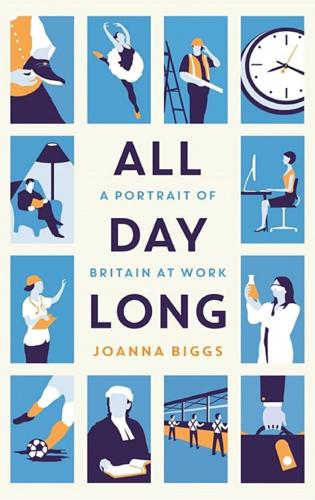
All Day Long: A Portrait of Britain at Work
by
Joanna Biggs
Published 8 Apr 2015
The crofter paid his rent, the laird murmured something about the year’s farming and then poured two drams of whisky which they drank together. Now much of the land on the Hebrides is owned communally following the Land Reform Act – brought in four years after the Scottish Parliament was established in 1999 – which gave crofters the right to buy the land they farmed at any time. There’s no longer whisky on rent day, just £35 handed to the land’s trustees. Modern crofters take care of livestock but also of the welfare and future of isolated communities, of the Gaelic language, of the idea that Sundays aren’t work days. Nessmen, or Niesochs, come from Ness, on the Isle of Lewis.
…
In the nineteenth century, healthcare was provided under the Poor Laws but social care was administered locally and subject to charges, a blurry system which was carried through into the structure of the newly created NHS in 1948. Social care continued to be provided as it always had been: in a patchwork and piecemeal manner by charities, local authorities, neighbours and relatives. Throughout the 1950s, the nineteenth-century asylums fell out of fashion and community care became more popular; by the 1980s, local authorities began contracting out carework to private providers. There were attempts by New Labour to integrate health and social care services, and indeed politicians still talk about it: none has yet managed it. Since 2010, social care spending has decreased every year.
…
After leaving school at 17, Monte worked a desk job before getting a position at a care home in Gosforth, where she began studying for her NVQ in Health and Social Care. (The demand is high for home care in the north-east, where only 22 per cent of people can pay for their care – the percentage is 55 per cent in the south.) From there she moved to work for one of the last local authority home care schemes before having her first child at 25. Two more children and several other stopgap jobs later, she went back to care in 2009, when Northumberland County Council now used private providers. Monte worked first for Careline, for minimum wage with no mileage; then for Helen McArdle Care, where she was on £6.60 an hour and 25p a mile, and quit when she saw a payslip come to £652 for a month’s work; she took a job instead that paid the minimum wage and paid 15p a mile because it was in a smaller area and she could earn more.

Our Lives in Their Portfolios: Why Asset Managers Own the World
by
Brett Chistophers
Published 25 Apr 2023
By the early 1990s, almost all of the UK’s physical, state-owned service-delivery infrastructures that could be sold off had been – and thus, although they were not yet owned by asset managers, they were privately owned, and hence potentially acquirable by infrastructure investment funds. Nor, of course, were the relevant privatisations only of infrastructure: in the 1980s, under Right to Buy, around a million social housing units were sold by local authorities in England alone. And thirdly, the 1980s was the period when asset management really began to come into its own. Institutional investors had been using asset managers on a modest scale since mid-century, but although US assets under management (AUM) by asset managers grew relatively strongly through the 1950s, 1960s and 1970s – at a compound annual rate of 11 per cent (1952– 1979) – total AUM did not exceed $100 billion until 1979.
…
Here, perhaps the best example is public hospitals or schools built through public–private partnerships (PPPs). Let us return to Ebbsfleet Academy in Kent in south-east England. The vehicle that in 2001 was contracted to build and then maintain the school is owned by the UK asset manager Innisfree. As an ‘academy’ school, Ebbsfleet is independent of local-authority control – its educational services are provided by a charitable body, the Leigh Academies Trust – but is nonetheless non-fee-paying for students, and is directly funded by the Department for Education (DfE). Like all other UK PFI contracts, the DfE contract with Innisfree for Ebbsfleet bundles payment to the contractor into a series of single (‘unitary’) annual charges to cover both the initial capital costs and ongoing maintenance and operation costs.
…
A noteworthy, and again highly controversial, example concerned Blackstone’s move into the social infrastructure space in 2004, when, in a deal worth £564 million, it acquired Nursing Home Properties (NHP), the owner of 355 private care homes across the UK. As in so many other cases, the stability and predictability of cash-flows – most residents in the NHP homes had their care paid for by the state through local-authority social-services departments – was a key attraction. Indeed, partly for that reason, such UK care-home chains had by that stage already been a locus of feverish asset-management investment activity for several years. The Four Seasons group had been bought not once but twice by asset managers: first in 1999, by Alchemy Partners; and second in 2004, by which time it owned more than 300 homes, from Alchemy by Allianz Capital Partners.

Inside the Nudge Unit: How Small Changes Can Make a Big Difference
by
David Halpern
Published 26 Aug 2015
(In 2014, with the help of Oliver Letwin, we did finally get a prompt on to the envelopes at least – it led to an immediate and sharp increase in visits to the energy regulator’s website about how consumers could switch to better deals.) We lost similar battles with the energy department over the structure of their Green Deal finance scheme; with the Department for Communities over changes to right to buy in social housing (though this finally fell into place in early 2015); with the Department of Health over simplifications around organ donation; and the HMRC and welfare departments over reducing fraud and error in benefits. Sometimes battles are lost because Ministers take a political judgement that they do not want to pursue an idea.
…
At the same time as they are collating the evidence, they are working with a range of local authorities across the UK to systematically try out new and old approaches, and seeking to plug the gaps in what we still don’t know. Though still young, the EIF reviews have already caused a stir. For example, their systematic review of domestic violence interventions offended some when it showed that one of the most popular interventions, focusing on gender relations, did not work. Similarly, an early finding of their work that many local authorities were using interventions in populations and in ways that were known to be ineffective risked causing offence, but also has helped to encourage shifts in spending to more effective interventions.
…
The ONS measurement programme From April 2011, the UK’s Office for National Statistics started asking more than 100,000 Britons a year the following questions on its integrated household panel survey: How satisfied are you with your life nowadays? How happy did you feel yesterday? How anxious did you feel yesterday? To what extent do you feel the things you do in your life are worthwhile? Responses are coded on a scale of 0–10. The samples are constructed to produce representative samples within each local authority area each year, and nationally representative samples on a quarterly basis. The final conclusion was that four questions – or experimental measures – were included in the national survey (see box), while a wider range of more detailed questions was included in smaller sample supplementary surveys.
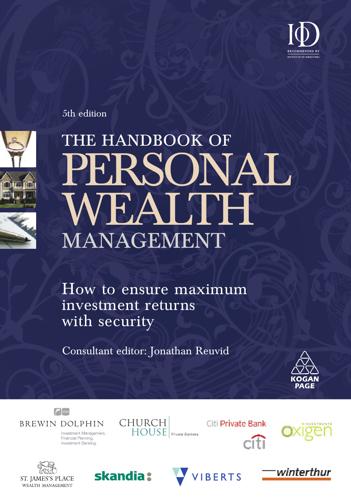
The Handbook of Personal Wealth Management
by
Reuvid, Jonathan.
Published 30 Oct 2011
Approximately 75–80 per cent of the amount invested will be invested in Payoff profile Megabank 170% FTSE 100 note at maturity Amount payable per share 400 350 300 250 200 150 100 50 0 -100% -75% -50% -25% 0% 25% 50% 75% Percentage change in the FTSE 100 index Super Tracker Figure 1.4.1 Index Payoff profile Megabank 170% FTSE 100 note 100% 125% 150% ឣ 38 PORTFOLIO INVESTMENT _________________________________________________ Call options provide growth related to the underlying index 100 1% Charges 19% Call options 80% Fixed-interest bond Plus growth Plus interest Fixed-interest bond provides 100% return providing the issuer has not defaulted Launch Figure 1.4.2 Maturity Elements of Megabank capital-protected FTSE 100 note the fixed-interest bond, and its credit worthiness is vital to the security of the product. The second element is the derivative strategy, in this case a simple five-year call option on the FTSE 100 index. This gives the owner the right to buy the FTSE 100 index in five years’ time at today’s (strike) price. In our example the amount allocated for options can buy 1.70 call options – that gives the 170 per cent participation rate. If the index is lower than the strike price at maturity, then the call options expire worthless. The final element is costs.
…
There are also specific circumstances when there is a positive advantage in continuing to use the Nil Rate Band discretionary trust where otherwise you might well Rely on the transferable Nil Rate band. These may include but are not limited to: ɀ The desire to avoid assets being available to the local authority in the event of the survivor going into care. By leaving assets to a trust on the first death those assets cannot be taken into account by the local authority for these purposes. Also, where a house is involved divided ownership between a trust and a surviving spouse will reduce the value of that asset for inheritance tax purposes. ɀ The spouse or civil partner may be in a second marriage/civil partnership and may wish to benefit children from an earlier relationship on the first death.

The Satsuma Complex
by
Bob Mortimer
Published 26 Oct 2022
One is called ‘Vaseley House’, the majority of its front doors painted pillar-box red, and the other ‘Drummond House’, which has mostly pale blue front doors. The walkways are dark brown brick with white-painted copingstones on top. A few front doors are painted in different colours, and I assume these are the flats that have been purchased by the tenants from the council under the Right-to-Buy scheme. If I had purchased one of these flats, I would have kept the door colour the same. I felt a tiny frisson of excitement at my situation that faded as the minutes passed. I wasn’t sure what my plan was. I suppose I was hoping that she might suddenly appear riding along on her daft bicycle or pop her head over the walkway wall and shout, ‘Hey, anyone out there looking for me?’
…
You will continue to receive exclusive offers in your inbox. For Mavis ‘Sorry to say, Pops, but you should have thought around this a bit more before you started.’ PART ONE 1 My name is Gary. I’m a thirty-year-old legal assistant with a firm of solicitors in London. I live by myself in a one-bedroom flat on a sprawling 1960s local authority housing estate in Peckham. My flat is just a five-minute walk from work, a state of affairs that pleases me, on those occasions that I wish it to. I’m on the short side of average height and come equipped with a large nose that borders on the comical if I wear sunglasses. If you happen to clock me in the street, I will invariably be wearing my cheap grey suit with a white shirt and tie (workdays) or my brown corduroy jacket with jeans and a T-shirt (empty days).
…
Tommy had an old friend from Yorkshire that put him in touch with a company called Cityside Investigations. They always needed trusted and verified blokes to help with rent collection, document serving, surveillance and the like. I don’t think Tommy really fancied the job, but it came with the promise of a nice two-bedroom ex-local authority flat on the Grange estate in Walworth that was owned and rented out by the boss of the business. He took the job as a stopgap but has ended up working there for these past four years. He didn’t like the idea of me having a job but, as his workload increased, I occasionally helped him out when it was felt a job required the female touch.
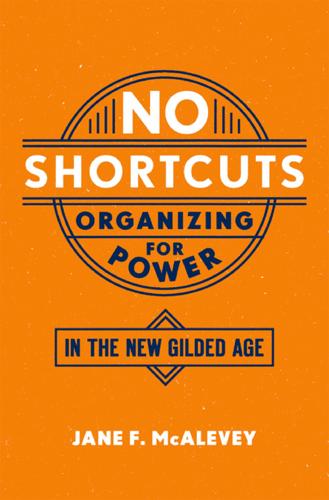
No Shortcuts: Organizing for Power in the New Gilded Age
by
Jane F. McAlevey
Published 14 Apr 2016
Then they started a drumbeat about unionized workers in the United States being overpaid, and rallied national opinion to that message. This is but one example of how people, in this case the corporate class, can change what academics call the opportunity structure to suit their long-term goals. Global and regional trade accords also give multinational corporations the right to buy land anywhere in almost any country, and new corporate landlords have forcibly evicted or cheaply bought off millions of people from self-sustaining plots of land, directly contributing to a huge rise in immigration into the United States and Europe.8 During the same decades, the corporate class pocketed the courts, one judicial appointment at a time.
…
In 1992, after a five-year campaign to do it, the union passed a statewide law that gave local authorities at the county and municipal levels the right to form legal entities creating an employer of record, with which thousands of homecare employees could then negotiate over the terms and conditions of their work. This changed their employment status from that of independent contractors working for an individual to that of employees working for the local authorities who actually paid their salaries.12 As a result, between 1994 and 1997, 17,000 homecare workers had unionized in northern California as employees of three separate local authorities—Alameda, San Francisco, and Contra Costa counties, in that order.13 Then, in 1999, SEIU succeeded in the largest single homecare victory: the unionization of 74,000 homecare workers in Los Angeles County.
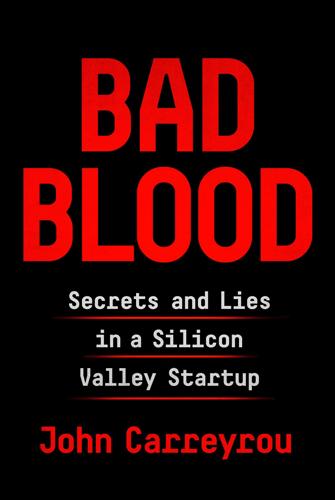
Bad Blood: Secrets and Lies in a Silicon Valley Startup
by
John Carreyrou
Published 20 May 2018
Avie didn’t think that was a good idea but told Don to have the board vote the motion without him since he was resigning. “One more thing, Avie,” Don said. “I need you to waive your own rights to buy the shares.” Avie was starting to get ticked off. He was being asked to put up with a lot. He told Don to have Michael Esquivel, Theranos’s general counsel, send over the requisite documents. He would review them but made no promises. When the documents arrived, Avie read them carefully and concluded that, once the company itself waived its rights to repurchase Shaunak’s shares, it was entirely within his and other shareholders’ rights to buy some of them. He also noticed that Elizabeth had negotiated a sweetheart deal: Shaunak was willing to part with his 1.13 million shares for $565,000.
…
Meanwhile, Sunny was also traveling to Thailand to set up another swine flu testing outpost. The epidemic had spread to Asia, and the country was one of the region’s hardest hit with tens of thousands of cases and more than two hundred deaths. But unlike in Mexico, it wasn’t clear that Theranos’s activities in Thailand were sanctioned by local authorities. Rumors were circulating among employees that Sunny’s connections there were shady and that he was paying bribes to obtain blood samples from infected patients. When a colleague of Chelsea’s in the client solutions group named Stefan Hristu quit immediately upon returning from a trip to Thailand with Sunny in January 2010, many took it to mean the rumors were true.

The Perfect Police State: An Undercover Odyssey Into China's Terrifying Surveillance Dystopia of the Future
by
Geoffrey Cain
Published 28 Jun 2021
To Maysem, it seemed like the government had been rolling out a crude, early ranking system for Xinjiang residents that assessed their trustworthiness, based on whether they were from the Uyghur ethnicity, were unemployed, or had a family member in another country. Maysem lived in Turkey, which could negatively impact her family’s trustworthiness ranking.4 If they scanned their IDs and then the system ranked Maysem or her family members untrustworthy, they would be denied the right to buy gas. The police also had the latitude to make this determination themselves. “It was tiring,” Maysem said. As Maysem met with relatives and friends at local hangouts, police appeared, checked everyone’s IDs, eyed them suspiciously, then left without ever providing a reason for the interruption.
…
China was building hundreds of oil pipelines, rigs, highways, and other infrastructure projects that it would later place under the umbrella of One Belt, One Road. To protect China’s investments, Chinese intelligence agencies needed spies who could go around the world, infiltrate Uyghur communities, and convince local authorities to send Uyghurs back home to China, where they’d be imprisoned. According to Yusuf, Chinese intelligence services were convinced overseas Uyghur communities were plotting to blow up Chinese bridges and oil and gas pipelines, to impede the belt and road projects. Governments might be reluctant to work with China if their cooperation invited terrorist attacks.
…
A few weeks later, in early July 2016, she began scanning a QR code (a type of barcode) containing the family’s personal information, hoisted to the outside of the apartment door, to signify she had checked the apartment and all appeared fine. Then she went next door, continuing the process until she had checked all ten households and reported to the local authorities. From 2014 to 2018, the government would send 200,000 party cadres like Ms. Ger to Xinjiang to surveil the population and hand them political propaganda.2 “It was really effective for policing the community,” Maysem said. “Everyone was turned into a watcher. If you didn’t report something unusual that day to Ms.

Unfinished Empire: The Global Expansion of Britain
by
John Darwin
Published 12 Feb 2013
It was even more marked in Australia where the high cost of inland transport, the low labour requirement of the rural interior, and the need to process and pack the bulk export of wool meant that the colonies’ capital cities grew out of all proportion to their thinly settled hinterlands.36 For those migrants who pressed on, what mattered most was access to the land: the right to buy a farm on easy terms. Here they might hope to scratch their subsistence until little by little they built up a surplus to be sold for cash. Indeed, land was the question in all the settlement colonies: all politics was land politics in one form or another. This was hardly surprising since land was the most valuable asset in the colony, the source of its revenues and the fastest means to make a private fortune.
…
They would supply the basket of goods craved by the home population – on still shorter rations than during the war (now bread and potatoes were rationed): cocoa for chocolate, tea, coffee and margarine from ground nuts (butter was a luxury). Better still, they could be paid in ‘soft’ pounds, at prices below the world market level, and in deferred funds. In other words, their right to buy British goods with the pounds that they earned could be put off till later by a form of compulsory saving. This allowed British exports to be sent to those markets where they could earn precious dollars. Colonial commodities promised a further reward. Cocoa exports also earned dollars. Even more valuable were strategic materials such as rubber and tin from Malaya and copper from Northern Rhodesia (today’s Zambia) for which America’s industrial expansion and its postwar rearmament created an insatiable demand.
…
‘At 6 possession was taken of this country in His Majesty’s name and under his colours; fired several volleys of small arms on the occasion, and cheered three times, which was answered from the ship.’3 Apart from Cook and his party, there was no one to witness this historic occasion (except perhaps for some unseen ‘Indians’ – Cook’s word for aborigines – whose ‘smoaks’ had been seen earlier that day), and no one to contest Cook’s claim ‘to the whole Eastern Coast … by the name of New South Wales, together with all the Bays, Harbours and Rivers situate upon the said coast …’4 Confident that no other European power had discovered this side of Australia, and equally confident (with momentous consequences) that there were no chiefs or kings whose local authority he might have to respect, Cook sailed blithely away. Eastern Australia (all unknowing) was now a British possession. Still more picturesque was the ritual the British conducted when they annexed the Kowloon peninsula, across the harbour from their island colony of Hong Kong, in 1860. The British governor, Harry Parkes, handed the Chinese officials a piece of earth wrapped in paper.
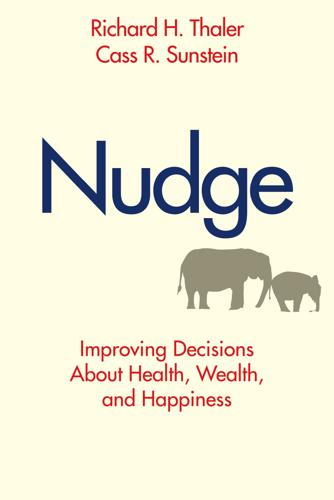
Nudge: Improving Decisions About Health, Wealth, and Happiness
by
Richard H. Thaler
and
Cass R. Sunstein
Published 7 Apr 2008
(Negligence is normally defined as the failure to meet what is called the “ordinary standard of care,” a vague concept that tends to make lawyers fight and judges scratch their heads. Intentional or reckless wrongdoing is a harder standard for plaintiffs to meet.) Under this approach, patients would be offered a right to “buy” a stronger liability right, but it would cost them a bit. This approach would undoubtedly mean that waivers would be common. The offer to “buy” should be accompanied by relevant information, so that people know what they are effectively losing if they fail to accept that offer. The general point is that if fully informed, some people would purchase a kind of insurance, in the form of a right to sue, but many others would prefer to take their chances.
…
By April 16 no fewer than three thousand windshields in the Seattle area were reported to have been “pitted,” and Seattle’s mayor promptly wrote the governor and President Eisenhower: “What appeared to be a localized outbreak of vandalism in damaged auto windshields and windows in the northern part of Washington State has now spread throughout the Puget Sound area…. Urge appropriate federal (and state) agencies be instructed to cooperate with local authorities on emergency basis.” In response, the governor created a committee of scientists to investigate this ominous and startling phenomenon. Their conclusion? The damage, such as it was, was probably “the result of normal driving conditions in which small objects strike the windshields of cars.” A later investigation, supporting the scientists’ conclusion, found that brand new cars lacked pits.
…
Aside from putting our toiletries into a one-quart zip-lock bag, exactly what actions are we expected to take as a result of this warning? A look at the Homeland Security Web site provides the answer. We are told: “All Americans should continue to be vigilant, take notice of their surroundings, and report suspicious items or activities to local authorities immediately.” Weren’t we supposed to be doing this at level Yellow? It is a safe bet that these announcements are useless. (Much more useful would be a supply of one-quart zip-lock bags for absentminded travelers; and many airports do in fact provide these.) • Feedback can be improved in many activities.

Keeping at It: The Quest for Sound Money and Good Government
by
Paul Volcker
and
Christine Harper
Published 30 Oct 2018
The government’s backbone in demanding the sale of Chrysler’s executive planes over the persistent complaints of the new chairman, Lee Iacocca, helped resonate with the public.* A well-designed “K-car” was just coming into production and Chrysler became competitive. All of the creditors, including the US Treasury, ultimately could make millions: the new loans extended in the crisis included warrants for new stock. Those warrants (contracts that give the owner the right to buy stock at a set price over a certain time period) surged in value as the company recovered. Iacocca, a flamboyant master salesman, pleaded with the new Reagan administration to cancel the warrants, arguing that they were essentially an unearned and undue reward. He didn’t win. Chrysler ended up paying more than $300 million to buy back and cancel warrants held by the Treasury.
…
On the wall behind his office desk he posted a framed quotation from George Washington to put favor seekers on notice: “Do not suffer your good nature, when application is made, to say ‘yes’ when you ought to say ‘no.’ Remember that it is a public not a private cause that is to be injured or benefited by your choice.” To the best of my knowledge, his local authority was seriously challenged only once. I was way too young at the time to understand the implications, but I did know it was highly unusual for him to come home early from a town council meeting, bringing along two or three of his close associates. Later I learned the full story. Determined to professionalize the police and fire departments, my father told the council he would be hiring a new police chief from out of town.
…
In those days we thought a quiet crisis was building. The crisis we see around us can no longer be characterized as quiet. Is it impossible that amid all the sound and fury in our national politics today—the erosion of trust in government, the clear need for collaboration among federal, state, and local authorities, the challenge of technology—a revival of interest in effective public management might find a response? A Longer Perspective Unavoidably, I end this memoir with a sense of deep concern. The rising tide of progress toward open democratic societies—the world in which I have lived and served—seems to be ebbing away.
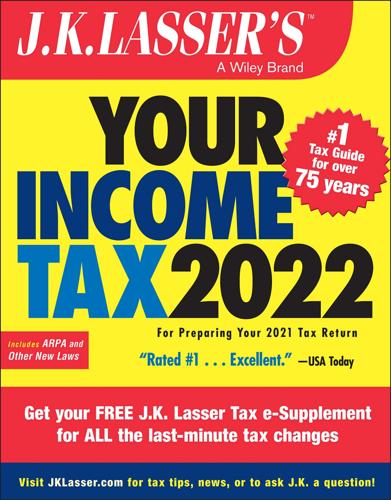
J.K. Lasser's Your Income Tax 2022: For Preparing Your 2021 Tax Return
by
J. K. Lasser Institute
Published 21 Dec 2021
To raise money for a charity, supporters of the organization may donate rental time for their vacation home, to be auctioned off to the public. No deduction is allowed for donating the rental time (14.10). Law Alert Payments Giving Right To Buy Athletic Stadium Tickets No Longer Deductible You may not deduct payments to a public or nonprofit college or university that give you the right to buy tickets at the school's athletic events or the right to buy seating in stadium skyboxes, suites, or special viewing areas. Prior law allowed a deduction for 80% of a contribution paid in exchange for sports seating rights; the nondeductible 20% was considered to be the fair market value of the right to purchase tickets.
…
The IRS disallowed the deduction and the Tax Court agreed, holding that a donor receives a benefit by merely having the right to attend the event. To claim a deduction for the price of the tickets the couple should have returned them to the charity. No deduction for donation that gives the right to buy athletic stadium tickets. If you contribute to a public or nonprofit college or university and receive the right to buy preferential seating at the school's athletic complexes, you may not deduct any part of the contribution; see 14.2. Deduction must be reduced when state and local tax credits are received. In an effort to allow their residents to continue to enjoy a federal tax benefit from the payment of state and local taxes (SALT) in excess of the $10,000 ($5,000 if married filing separately) deduction cap (see 16.1), some states have enacted “workaround” programs that allow a state and local tax credit for payments to an entity that is eligible to receive tax deductible contributions.
…
Planning Pointer Employee Stock Options Different tax rules apply to incentive stock options and nonqualified stock options obtained in connection with employment (see 2.16). Calls. Buying a call gives the holder the right to buy a specified number of shares of the underlying stock at a given exercise price on or before the option expiration date. Selling a call gives the seller, called the writer, the obligation to sell shares to the holder at the agreed upon price on or before the option expiration date. The holder pays a premium to the writer for the right to buy the shares. If the price of the stock rises above the agreed-upon price (the strike or exercise price), the holder exercises the buy option and acquires the shares.
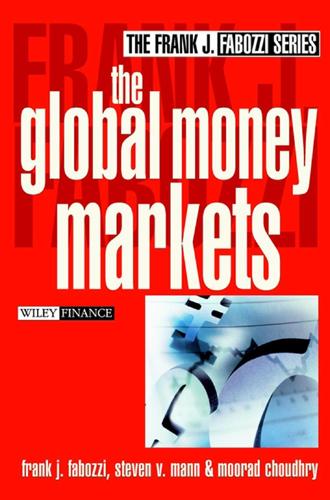
The Global Money Markets
by
Frank J. Fabozzi
,
Steven V. Mann
and
Moorad Choudhry
Published 14 Jul 2002
Of course, with these non-traditional (i.e., non-interest rate reference rates) floaters expose portfolios to different types of risks. Moreover, some of them are not simple to value—an undesirable feature for a cash portfolio. Floating-Rate Securities 105 Call and Prepayment Provisions Just like fixed-rate issues, a floater may be callable. The call option gives the issuer the right to buy back the issue prior to the stated maturity date. The call option may have value to the issuer some time in the future for two reasons. First, market interest rates may fall so that the issuer can exercise the option to retire the floater and replace it with a fixed-rate issue. Second, the required margin decreases so that the issuer can call the issue and replace it with a floater with a lower quoted margin.3 The issuer’s call option is a disadvantage to the investor since the proceeds received must be reinvested either at a lower interest rate or a lower margin.
…
EXHIBIT 1.1 US Money Market Volumes, $ Billion at Year-End Instrument 1990 1995 1999 Treasury bills Federal agency securities Commercial paper Bankers’ acceptances Fed funds borrowers and repo Eurodollar borrowings CDs (min size $100,000) 527 435 561 55 409 37 432 748 845 675 29 569 94 345 723 1,284 1,213 21 762 167 634 Source: Federal Reserve Bulletin, 2000, 2001 4 THE GLOBAL MONEY MARKETS EXHIBIT 1.2 Composition of Sterling Money Markets, £ Billion Volume Outstanding * Includes Treasury bills, sell/buy-backs and local authority bills Source: Bank of England Quarterly Bulletin, Autumn 2001 Chapters 3 and 4 cover short-term debt instruments issued by some of the largest borrowers in the world—the U.S. Treasury and U.S. federal agencies. U.S. Treasury bills are considered among the safest and most liquid securities in the money market.
…
EXHIBIT 14.1 Weighting Risk Weightings of Typical Banking Book Assets, Basel I Asset Type Remarks 0% • Cash • Claims on own sovereign and Zone A sovereigns and central banks • Claims on Zone B sovereign issuers denominated in that country’s domestic currency 20% • Claims on multilateral development banks • Claims on regional governments or local authorities in own or Zone A countries • Senior claims on own country or guaranteed by Zone A banking institutions • Senior claims on Zone B banking institutions with an original maturity of under one year • Claims secured on residential property • Mortgage-backed securities • All other claims Zone A countries are members of the OECD and countries that have concluded special lending arrangements with the IMF.

The Other Slavery: The Uncovered Story of Indian Enslavement in America
by
Andrés Reséndez
Published 11 Apr 2016
Indeed, the Indian agent likened peonage to chattel slavery: “Peons, you are aware, is but another name for slaves as that term is understood in our Southern States,” he explained in a letter to the commissioner of Indian affairs, adding that the main difference was that the peonage system was not confined to a particular “race of the human family,” but applied to “all colors and tongues.” Indians purchased other Indians, and Mexicans bought other Mexicans, and yet no one seemed to have the slightest objection to being purchasers of their own “kith and kin.” Quite to the contrary, they believed that “the right to buy and sell captives is perfect and that no human power can disturb that right.”7 After broaching the terminology and describing the enthusiasm with which New Mexicans engaged in this other form of enslavement, Calhoun provided some details about the market for captives and relationships with peons.
…
He drifted in the city, eking out a living for more than a month, until, quite by chance, his master spotted him in the Plaza de San Francisco. Rather than risk public scandal or a violent altercation, the master prudently called a guard (police officer), who in turn approached Gaspar. Instead of returning the slave to his master, however, the guard took him to the municipal jail, where the local authorities launched an investigation.13 As a child, immediately after disembarking in Seville, Gaspar had been sold for 36 ducats to a family of tailors and weavers. The bill of sale describes him as a thirteen-year-old “obtained in a just war” who was “not a drunkard or a thief or an escapist” and who had “no public or private illnesses,” all stock phrases that appeared in contracts involving slaves of all races and ethnicities.
…
The majority of forced workers in the mines and ore-processing haciendas came from neighboring communities and missions as part of the extensive repartimiento system of forced labor. The system was set in motion when owners requested workers from colonial authorities, specifying the number of Indians needed and the type of work to which they would be assigned. Governors and local authorities would then work out the number of Indian workers (both male and female) that each community and mission was required to contribute to meet these requests. It goes without saying that failure to provide sufficient workers would result in significant repercussions. And, as it is easy to imagine, the actual drafting of these Indians was a process fraught with abuse that could lead to violence.
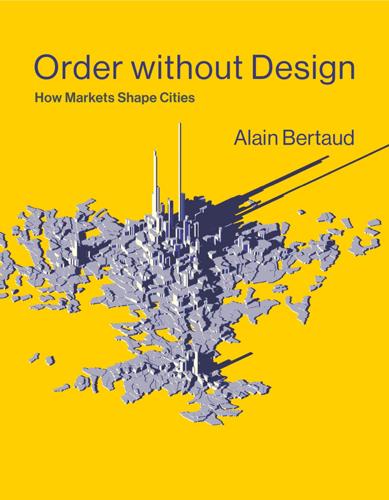
Order Without Design: How Markets Shape Cities
by
Alain Bertaud
Published 9 Nov 2018
The objective of road pricing in Singapore is to guarantee a minimum peak-hour speed for cars in the CBD, main arterial roads, and expressways. The toll is adjusted during the day for time and location. The monitoring of vehicle speed is done continuously, and toll rates are adjusted quarterly to maintain the minimum speed. In addition, measures have been taken to limit the number of cars on the island by auctioning periodically the right to buy new cars. The effectiveness of Singapore’s congestion pricing policy is demonstrated by figure 5.19. Between 2005 and 2014, the average speed at peak hours has only varied between 61 and 64 km/h for expressways and between 27 and 29 km/h in the business district and arterial roads. During the same period, Singapore’s population increased by 31 percent!
…
Urban Road Networks Made of Privately Developed Access Roads Results in Poor Metropolitan Road Networks So far, cities have yet to find a way to entirely rely on the private sector to design, finance, and operate a metropolitan network of roads without any government intervention. It is important to distinguish the provision of local access roads from a road network serving an entire metropolitan area. Private developers routinely provide roads in or at the edges of their property lines. Eventually, ownership of these access roads is typically transferred to a local authority and, later, integrated into the public domain to form a network of interconnected streets. An aggregation of originally privately developed roads constitutes the core of many cities, and the two maps shown in figure 3.2 illustrate this process well. The street networks in the Wall Street area in the historical core of New York and in the Marais neighborhood of Paris have many similarities.
…
financial costs represented by interest during construction (interest has to be paid on the amount disbursed between the time land is acquired and the time when the plots are ready to be sold to builders). The total area of land sold by developers to urban land users is therefore less than the area that developers buy from farmers. The roads and open spaces built by developers are usually transferred free of charge to the local authority. The total cost per square meter of salable developed land that will have to clear the market (i.e., that will be on or below the curve U in figure 4.14) is given by equation 4.2. Equation 4.2 Cost per square meter of salable developed land that will clear the market , where k = land development cost per square meter of salable urban land; a = price of agricultural land per square meter; c = cost of civil works per square meter; h = developer overhead; f = financial cost; and r = percent of developed land to be devoted to roads and open space.
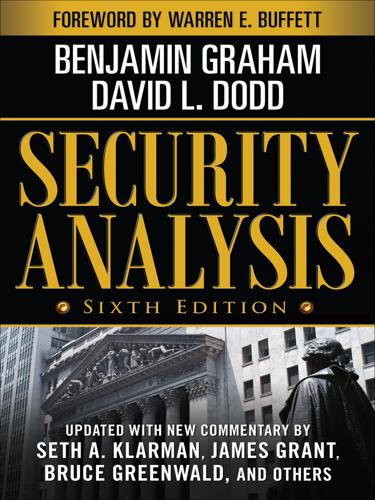
Security Analysis
by
Benjamin Graham
and
David Dodd
Published 1 Jan 1962
If a convertible is selling considerably above par, the premium will still be subject to impairment through additional stock issues or a special dividend. A simple illustration will make this clear. A bond is convertible into stock, par for par. The usual antidilution clauses are present. Both bond and stock are selling at 200. Stockholders are given the right to buy new stock, share for share, at par ($100). These rights will be worth $50 per share, and the new stock (or the old stock “ex-rights”) will be worth 150. No change will be made in the conversion basis, because the new stock is not issued below the old conversion price. However, the effect of offering these rights must be to compel immediate conversion of the bonds, since otherwise they would lose 25% of their value.
…
Numerous cases have come to light in which the actions of the management in the matter of its own compensation have been open to serious question. Most of these relate to the years before 1933. In the case of Bethlehem Steel Corporation, cash bonuses clearly excessive in amount were paid. In the case of American Tobacco Company, rights to buy stock below the market price, of an enormous aggregate value, were allotted to the officers. These privileges to buy stock are readily subject to abuse. In the case of Electric Bond and Share Company, the management permitted itself to buy many shares of stock at far below market price. When later the price of the stock collapsed to a figure less than the subscription price, the obligation to pay for the shares was cancelled, and the sums already paid were returned to the officers.
…
Its answer will depend upon the extent to which the corporation’s success is due to their unique or surpassing ability, and this must be very difficult to determine with assurance. But it may not be denied that devious and questionable means were frequently employed to secure these large bonuses to the management without full disclosure of their extent to the stockholders. Stock-option warrants (or long-term subscription rights) to buy shares at low prices, proved an excellent instrument for this purpose—as we have already pointed out in our discussion of stockholder-management relationships. In this field complete and continued publicity is not only theoretically desirable but of practical utility as well. The legislation of 1933–1934 marks an undeniable forward step in this regard, since the major facts of managerial compensation must now be disclosed in registration statements and in annual supplements thereto (Form 10-K).

The English
by
Jeremy Paxman
Published 29 Jan 2013
The Abbey National Bank, originally a building society, began life as two organizations, one of which, the Abbey Road, had the declared ambition of enabling young men to buy their homes, in order that they could vote, while the National Building Society additionally hoped to convince them there were better things to spend money on than drink. It was a mark of Margaret Thatcher’s deep understanding of some of the instincts of the English (neither the Scots nor the Welsh ever took to her in quite the same way) that she recognized the power of the urge to own property, forcing municipal authorities to give their tenants the right to buy. The consequences of this obsession can be seen in every town in the land. Drive through an English suburb – any suburb – and the thing that strikes you is the fact that almost everyone has given their house a name. Why? There’s a perfectly adequate numbering system, which would make sure the mail got to the right address a lot more easily than any randomly ordered list of Shady Leas, Mon Repos or Dunroamins.
…
Mass immigration to Britain had been concentrated on England and most cities of any size contained areas where white people had become a rarity. In those places, talking about immigrants as ‘ethnic minorities’ was beginning to sound decidedly perverse. By 1998, it was white children who had become a minority at local-authority secondary schools in inner London and even in the suburbs they made up only 60 per cent of the secondary-school population. Over a third of inner London’s children did not even have English as their first language.3 If the English people had changed, so too had the towns in which most of them lived.

How Asia Works
by
Joe Studwell
Published 1 Jul 2013
As elsewhere in the Philippines, the beneficiaries of land reform have even greater need of credit, marketing and agricultural extension support than those in north-east Asia did. They are almost always farm labourers, used to being told what to do, rather than the more autonomous tenants who were given the right to buy land in Japan, Korea and Taiwan, or occupy it rent-free in China. Yet where credit and technical support was present in every village in north-east Asia, the Filipinos get almost nothing. Ninety-seven per cent of land reform beneficiaries in Negros told a provincial survey they have received zero support.77 It is hardly surprising that an emblematic image one sees in Negros is the ‘reform’ family that immediately leased its land back to the landowner and now sits around a karaoke TV set bought with the proceeds of the rental advance.
…
The most important consequence is that, unlike in Japan, Korea and Taiwan, farmers cannot sell their plots to private buyers. Collective-owned land is unsaleable in law. It can only be converted into government-owned land, in which case compensation is paid to farmers up to a statutory maximum equivalent to thirty years’ rental. Local authorities, however, can sell land converted to state ownership for development. This typically occurs at a big mark-up. Thirty years’ rent may sound like a lot, but China’s historically low yields per person (as opposed to per hectare) have also meant low rents; land redeployed for development or for commercial farming, by contrast, is massively more valuable.
…
A trend to dispossessing farmers has been escalating for a decade, mainly because central government has never reconciled the supply of local government funding with the responsibilities it places on local governments to provide welfare services. In recent years, Beijing has curtailed local governments’ capacity to tax farmers but has not replaced the lost income with central government grants. Instead, local authorities have had to borrow money through off-balance sheet companies they set up.14 When payments on such debts cannot be met from the profits of the businesses they run themselves, they turn to sale of farmland. The media has focused on the conversion and sale of household farms for real estate and factories.

Billion Dollar Whale: The Man Who Fooled Wall Street, Hollywood, and the World
by
Tom Wright
and
Bradley Hope
Published 17 Sep 2018
The problem was that 1MDB had never issued a U.S. dollar bond to international investors, and it had no credit rating. So, Goldman was suggesting it ask IPIC—a sovereign entity with a strong credit rating—to guarantee the issue. That would put investors at ease, giving them confidence that 1MDB would be able to repay the debt whatever the circumstances. In return for its guarantee, IPIC would acquire the rights to buy a stake in the listed power company at a favorable price. This was Low’s latest blueprint for 1MDB, a way for the fund to enter the power-generation business, make some money, and, hopefully, paper over losses. But there were many oddities in the plan. Why would a Malaysian state fund seek a guarantee from a similar fund of another country?
…
That sounded pretty good to Low. As time passed without action from the Justice Department, Low became less careful. He allowed the Equanimity to sail out of Thai waters down to the Indonesian resort island of Bali. Robert Heuchling, the FBI agent, and his team were watching, and they flew to Indonesia, persuading local authorities to seize the yacht. Low had lost control of his last major asset bought with 1MDB funds. He had one final play to make, and again he looked to his hero, Marc Rich. On his last day in office—January 20, 2001—President Bill Clinton had granted Rich a pardon. It was a controversial move that led to a debate about the nature of white-collar crime and its victims.

Boom and Bust: A Global History of Financial Bubbles
by
William Quinn
and
John D. Turner
Published 5 Aug 2020
After various fiscal crises in the 1980s caused the demise of direct government support for homeownership and social housing, the governments of Spain and Ireland increasingly relied on their deregulated financial systems to provide homes for those on low incomes.88 Similarly, the stated policy of successive UK governments from 1980 onwards was to encourage homeownership among the lower classes. In passing the 1980 Housing Bill, which gave social housing occupants the right to buy their home, Michael Heseltine, the then Secretary of State for the Environment, stated that ‘there is in this country a deeply ingrained desire for home ownership. The Government believe that this spirit should be fostered’.89 This spirit was still being fostered 25 years later. As Lord Turner, the head of the UK’s financial regulator during the crisis, put it, if the Financial Services Authority had acted to curb the expansion of bank credit in the 2000s, politicians would have accused them of ‘holding back the extension of mortgage credit to ordinary people’ and ‘preventing the democratisation of home ownership’.90 Banks got on board with the affordability mandate of their governments because the financial system was deregulated, meaning that they could lend to subprime and less-than-prime borrowers.
…
As well as setting up special economic zones, farmers were given land cultivation rights and were empowered to make their own decisions. The management of state-owned enterprises (SOEs) was decentralised from central to local governments and SOE managers were given more autonomy.5 The 1980s saw the rise of townand village-owned enterprises (TVEs) – market-oriented businesses which were typically under the control of local authorities. These enterprises were labour-intensive and benefited from the large increase in labour supply that followed the agricultural reforms. TVEs in the 1980s played a major role in China’s growth.6 The first step towards a more capitalistic system was taken in 1990 when China began to incorporate and privatise the SOEs and TVEs.
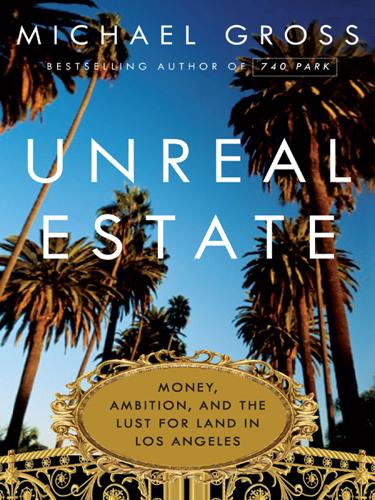
Unreal Estate: Money, Ambition, and the Lust for Land in Los Angeles
by
Michael Gross
Published 1 Nov 2011
The IOS system had been designed to turn its salesmen into zealots and it reached its apotheosis in Germany. As they rose in the IOS hierarchy based on the revenue from their share sales, thousands of salesmen (known as investment counselors) earned not only their own commissions but a piece of the commissions of those beneath them in the structure, and finally, the right to buy shares in the parent company; this was considered the pot of gold at the end of the IOS rainbow, and it made many of its sales managers millionaires, on paper at least. Not that there wasn’t still real cash to burn, and Cornfeld did, entering the investment banking business in the late sixties by both underwriting offerings and making large investments via its funds in everything from the hot conglomerate stocks of what became known as the Go-Go era on Wall Street to real estate, oil exploration, and hotels.
…
Anyway, we feel the house will sell itself.” The house and, as his son Barron put it, “essentially all of his wealth, principally in the form of Hilton Hotels stock,” then worth about $164 million, had been left to the Conrad N. Hilton Foundation, founded to assist Roman Catholic nuns. Barron would fight for years for the right to buy that stock at its 1979 price, finally prevailing in 1988, when its value had risen to almost $700 million. In an out-of-court settlement, Barron got 4 million shares outright and another 6 million in a charitable trust (that reverts to the foundation on his death), and the foundation got the remaining 3.5 million shares; the battle solidified Barron’s control of Hilton Hotels.
…
A year later, Reddin resigned after an argument with Resnick. Six months after that, in a sting operation likely initiated by the embittered former top cop, three of Resnick’s former employees at LAX were arrested on charges they’d sold two pounds of pure heroin to undercover officers, and a federal organized crime task force and state and local authorities were reportedly looking into American Protection’s role in what appeared to be a case of massive fraud against an airline, possibly involving New York Mafia figures. Resnick denied any involvement and said that rogue employees had been dismissed months before. Two weeks later, American Protection sued Reddin for stealing customers and trade secrets.
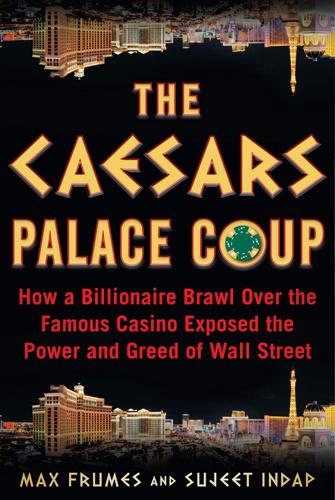
Palace Coup: The Billionaire Brawl Over the Bankrupt Caesars Gaming Empire
by
Sujeet Indap
and
Max Frumes
Published 16 Mar 2021
The Caesars parent would also transfer to Caesars Growth Partners the $1.1 billion of bonds that Paulson & Co., Apollo, and TPG had exchanged in 2010 for shares in the Caesars parent. Caesars Acquisition Corp, the new public company, would target raising $1.1 billion in a so-called “rights offering.” Current shareholders of the Caesars parent would have the right to buy shares in CACQ. If existing shareholders participated, they could maintain the same stake in both public Caesars companies. CACQ would purchase a 42 percent stake in Caesars Growth. With the cash that was raised in the rights offering, Caesars Growth would buy Planet Hollywood and the Horseshoe Baltimore, the latter a new casino under development, from OPCO.
…
Accepting the HBS professorship made his academic work more practical than theoretical. PHIL SATRE, LIKE BILL HARRAH, did not care much for Las Vegas. He instead preferred Reno, which, coincidentally, happened to be Harrah’s ancestral home. Bill Harrah had fled Los Angeles in the 1930s where his bingo operation on the Venice Beach pier had drawn the ire of local authorities. Nevada had legalized gaming in 1931 and it was Reno, 400 miles northwest of Las Vegas, that became the state’s first gambling hotspot. Harrah’s personal life would come to resemble that of many of the colorful entrepreneurs who would dominate the casino industry. A big drinker, he was married seven times to six women, and developed a taste for fancy toys, buying a collection of airplanes and automobiles with the help of the company’s coffers.

Cocaine Nation: How the White Trade Took Over the World
by
Thomas Feiling
Published 20 Jul 2010
Goods and goodies have become indispensable to our personal happiness as well as that of the wider economy. As pleasure and profitability become paramount, and the global drug economy continues to thrive, the distinction between a chocolate cake, a fine single malt and a line of cocaine has become blurred. Many consumers would argue that if they have the money to pay for all three, they have the right to buy all three. Drug sub-cultures still exist. They are a way of life and an important part of the self-identity of some young people. Asking some teenagers to give up smoking cigarettes is tantamount to asking them to give up their credibility in the only peer support system they have. Drug use was so important to a specific sub-culture of the 1960s that it was regarded by friends and foes alike as an ideological statement.
…
In all three countries, more than half of those arrests were for possession of cannabis. Europe is clearly caught between the prohibitionist model and the harm reduction model, and is failing to resolve the contradictions implicit in both.10 The pressure to break this stalemate is coming from cities with large drug-using populations, where the local authorities are straining at the leash to reform their drugs policies. In 2001, Portugal introduced a pioneering law which decriminalized the possession of all illicit substances for personal use.11 Law 30/2000 did not legalize drug use or possession, but it did put an end to the use of penal sanctions.

Culture and Prosperity: The Truth About Markets - Why Some Nations Are Rich but Most Remain Poor
by
John Kay
Published 24 May 2004
Thus one interpretation effectively abandons conventional assumptions of rationality; the other transforms it into metarationality. { 362} call option comparative advantage competitive advantage competitive equilibrium competitive market convexity derivative division of labor economic rent Glossary The right to buy a security at a fixed price (even if its market price has risen in the meantime). Thus you share the upside, but not the downside, of its movements. In return for this, you pay a premium. A country (or less commonly an individual) has a comparative advantage in the activities that it is relatively best at.
…
Would it not be better if wise men came together, in a single institution, to assemble the evidence, consider it dispassionately, and set the direction for the industry? That is what central planning in a democratic society is intended to achieve. In 1947, the British electricity industry was nationalized. Most Culture and Prosperity {Ill} of the business was already owned by local authorities. The importance of the change was that it brought the generation and distribution of electricity under central government control. In the decades immediately after the World War II, there were great expectations for the peaceful exploitation of nuclear energy. Britain had developed a limited nuclear technology for military purposes and had experimented with adaptations designed to produce commercial supplies of electricity.
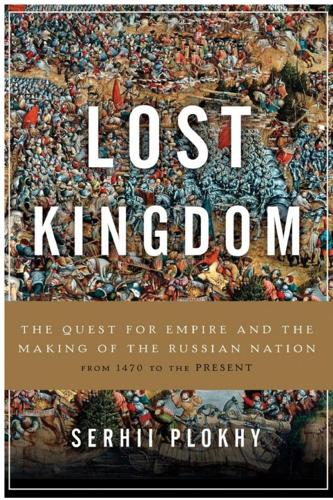
Lost Kingdom: The Quest for Empire and the Making of the Russian Nation
by
Serhii Plokhy
Published 9 Oct 2017
It employed every means at its disposal, including the concept of official nationality formulated by Count Uvarov, to that end. In November 1832, the Western Committee issued a decree intended to diminish the number of people in the western provinces who could claim noble rights, including the right to buy land and serfs—a measure designed to undermine the status of Polish nobles. In the 1840s, Nicholas promoted initiatives to register and limit peasant obligations to landowners in order to support “Russian” peasants. To the degree that a noble-based empire could do so, it was taking the side of the Ukrainian and Belarusian peasantry against Polish nobility.
…
He prepared a parliamentary resolution on Ukrainian autonomy but was unable to present it, as the imperial authorities dissolved the First Duma on July 8, 1906, only seventy-two days after its opening. The tsar found the ideas and actions of the deputies destructive. “The representatives of the nation, instead of applying themselves to the work of productive legislation, have strayed into spheres beyond their competence and have been making inquiries into the acts of local authorities established by ourselves, and have been making comments on the imperfections of the fundamental laws, which can only be modified by our imperial will,” read the tsar’s manifesto on the dissolution of the Duma. The Ukrainian deputies were able to form a caucus of forty-seven in the short-lived Second Duma (February–June 1907), where they again raised the banner of Ukrainian autonomy.

Jihad vs. McWorld: Terrorism's Challenge to Democracy
by
Benjamin Barber
Published 20 Apr 2010
Thomas Friedman, in a version of the McWorld argument, has suggested that the fratricidal warriors facing one another in Ireland, South Africa, and the Middle East may have been lured from their intractable internecine struggles by the global marketplace, all of them “compelled to beat their swords into plowshares simultaneously by economic forces.”7 But peace is not democracy. McWorld’s denizens are consumers and clients whose freedom consists of the right to buy in markets they cannot control and whose identity is imposed on them by a consumerism they scarcely notice. Palestinians and Zulus and North Ireland Catholics will be freer to do business in and outside of their stabilized countries, but they will not necessarily be any freer. Not long after World War II, Victor Lebow recognized that “Our enormously productive economy … demands that we make consumption our way of life, that we convert the buying and selling of goods into rituals, that we seek our spiritual satisfaction, our ego satisfaction, in consumption.”8 Today, as Alan Durning remarks, “the words ‘consumer’ and ‘person’ have become virtual synonyms.
…
The French private sector retains a 51 percent holding in EuroDisney today, though its poor performance in its first years has left investors with a bad taste and Disney with its first prospective fiasco. In the self-effacing spirit of government under assault, the state has mostly stayed on the sidelines. Local authorities have the right to demand concessions from developers to allow curb cuts and building permits, but they have played the zealous suitor to, rather than the public regulator of, the developers and have asked little. Indeed, H. Wayne Huizenga, the Blockbuster video magnate who also owns a group of professional sports clubs and recently merged Blockbuster with Viacom, Paramount’s successful buyer, has also persuaded the Florida legislature to allow him to build “Blockbuster Park” on twenty-five hundred acres of swampland north of Miami as a kind of sixty-eighth Florida county.

Kleptopia: How Dirty Money Is Conquering the World
by
Tom Burgis
Published 7 Sep 2020
The gas came from Central Asia, passed through Russia and arrived in Ukraine, where some of it remained and some of it continued westward. The progress of this commodity along this route – and Vladimir Putin’s ability to arrest that progress – ranked among the highest concerns of Europe’s leaders. And yet no one knew who controlled RosUkrEnergo. Like a couple of similarly opaque predecessors, it had been granted the precious right to buy the gas in the East, pipe it through Russia and sell it in the West, a transaction from which it earned annual profits approaching $1 billion. Half of RosUkrEnergo belonged to Gazprom, the Russian state gas company run by an old pal of Putin’s, curiosity about which could land inquisitive foreigners like John Lough of TNK-BP in big trouble.
…
Her husband was away. She was at home with her two small daughters. As the fire approached, she started to panic. She said a prayer. Then she said: ‘It’s over. It is here.’ Seventy-two of Grenfell Tower’s residents died on the night of June 14, 2017. The remaining 250 needed shelter. But the local authority announced that finding them new homes would be tricky: there was a shortage. In fact, there was no such thing. Houses were plentiful. It was just that nearly 2,000 of them were empty. Much of the area belonged to front companies registered in the British Virgin Islands, Gibraltar or Jersey. The former Underground station once used as Winston Churchill’s secret command centre, worth $87 million but unoccupied, belonged to Dmytro Firtash, the Ukrainian oligarch behind the natural gas scheme in which the Americans believed the Brainy Don had a hidden interest.
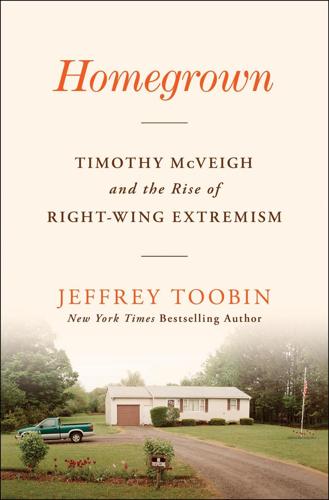
Homegrown: Timothy McVeigh and the Rise of Right-Wing Extremism
by
Jeffrey Toobin
Published 1 May 2023
Over time, Cowie wrote, “freedom” served as the ideological scaffolding for many kinds of oppression and white supremacy, including “Indian land dispossession and removal, mob political violence, lynching, convict labor, Jim Crow, resistance to school integration, and the fight against voting rights.” As with many right-wing extremists, especially in recent history, McVeigh’s concept of “freedom,” like Earl Turner’s, centered on guns—their belief that they should have the right to buy any kind of firearm at any time. Moreover, as Cowie notes, the white supremacist conception of freedom has long been especially threatened by federal power. George Wallace, for example, “spent his career repeating an enduring and widespread American promise to keep federal power at bay.” The key to Wallace’s appeal, in the North as well as the South, was that he “tapped into generations of concerns that local white people’s freedom was yet again under siege by federal powers.”
…
“I now see a much larger portion of the whole picture including gang warfare, cocaine use, and the insignificance of law enforcement. I will never be the same.” McVeigh regarded the police as extensions of the overweening hand of government—a departure from conventional right-wing views. He came to regard law enforcement in a hierarchy of disdain, with his greatest tolerance for local authorities and most hostility for the FBI. (His hostility to the federal government placed him in a long political tradition.) In the military, these views didn’t yet prompt McVeigh to act out, but the rage was there, building. The Army did not create McVeigh’s extremism from scratch, just as the military did not take average recruits two decades later and turn them into Oath Keepers and Proud Boys.

The War Below: Lithium, Copper, and the Global Battle to Power Our Lives
by
Ernest Scheyder
Published 30 Jan 2024
Giant excavators pull rocks out of the ground, then those rocks are crushed into smaller and smaller pieces, and a chemical process is then used to separate the lithium from other components in the rock. It is also, not coincidentally, an easier way to make the specialized lithium hydroxide that Tesla, BMW, and other automakers prefer. Piedmont thus found itself as the only viable U.S. source of a type of lithium that major automakers coveted. The company had quietly bought or had the right to buy about 1,800 acres of land from about thirty-five landowners in the area, Phillips told me during our chat. They needed at least 3,000 acres, and it all had to be contiguous. Piedmont had to contend with hundreds of local landowners for its project to succeed, something that virtually none of its rivals in the junior mining space had to deal with because nearly all of them were located in the western United States, where the U.S. government was often the only landowner.
…
Webster, “Some Geologic Features of the Superior Area, Pinal County, Arizona,” New Mexico Geological Society, 1962, www.resolutionmineeis.us/sites/default/files/references/hammer-webster-geologic-features-superior-1962.pdf. 45. Nosie portions based largely on author’s interview with him, March 29, 2021. 46. “Authorities Investigating Vandalism at Sacred Apache Site,” Arizona Daily Star, March 19, 2018, tucson.com/news/local/authorities-investigating-vandalism-at-sacred-apache-site/. 47. Dale Miles, “Oak Flat Is a Sacred Site? It Never Was Before. Former Tribe Historian: A Mining Shaft Was Built There in the 1970s with No Protest from the Tribe,” AZCentral, July 23, 2015, www.azcentral.com/story/opinion/op-ed/2015/07/23/oak-flat-sacred/30587803/. 48.
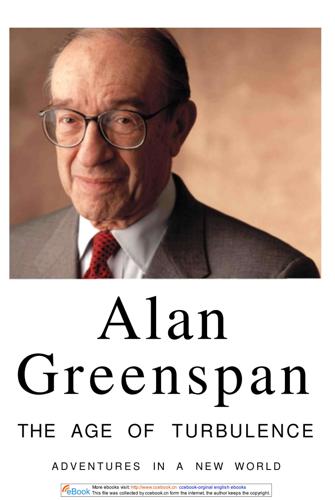
The Age of Turbulence: Adventures in a New World (Hardback) - Common
by
Alan Greenspan
Published 14 Jun 2007
We may have lost the battles, but not the war. Both Communist China and Communist Vietnam have been struggling to loosen their central-planning straitjackets for the economic freedom of capitalism, while trying not to say out loud what they are doing. In 2006, America's Merrill Lynch, following Citigroup a year earlier, obtained the right to buy, sell, and market Vietnamese shares on Ho Chi Minh City's fledgling stock exchange. When Bill Gates, the world's richest capitalist, visited Hanoi, he was greeted by Vietnam's top Communist Party leaders and mobbed in admiration. Will miracles never cease? Ideas do matter. Indeed America's capitalistic ideas appeared mightier than our sword.
…
For instance, laws promulgated in 2001 removed many economically meaningless requirements for businesses to obtain licenses, inspections, and product certifications—red tape that had been an open-ended invitation for official corruption. (Low-wage bureaucratic jobs were thus in great demand.) Property rights have been extended in recent years, though struggles over rights to buy and sell farmland reflect much the same Communist ideological hangover that exists in China. Except to challenge the power of the Kremlin, the Russian people are free—to travel, to congregate, and to engage in all the trappings of democratic societies. The Russian economy is today best described as a market economy backed by a still-imperfect rule of law.
…
Granting property rights to farmland is too unambiguous a break with Communist traditions to be countenanced easily. Farmers can lease land and sell products in open markets, but they have no legal rights to the land they till, and so cannot buy or sell it or use it as collateral for loans. In recent decades, as urbanization has encroached on rural China, local authorities have seized enormous expanses, granting as compensation only a small fraction of what the land would be worth as part of an urban enclave. Such seizures have been one of the main contributors to recent rising levels of protests and unrest. A top Chinese police official reported that the number of public protests nationwide rose to seventy-four thousand in 2004 from ten thousand a decade earlier.

The Radical Fund: How a Band of Visionaries and a Million Dollars Upended America
by
John Fabian Witt
Published 14 Oct 2025
Soon the men came into view. “Death turned and looked at me,” Johnson remembered, “and I looked at death.”1 This was not the first time that young James Johnson had found himself the target of a lynch mob. Seven years earlier, coming home to Jacksonville from school in Atlanta, Johnson had insisted on his right to buy a first-class train ticket. Georgia had not yet passed a Jim Crow law for railroad cars; Johnson may technically have been correct about his legal rights. But scandalized white passengers telegraphed word of his affront to the next town up the tracks. By the time Johnson’s train arrived there, a crowd had formed with the intention of pulling the brazen young man off the train.
…
Disguised as a laborer, Baldwin took a job in the Homestead mill where Frick had smashed the unions nearly three decades before.36 Steelworkers gather around labor organizers as the 1919 steel strike approaches. There Baldwin witnessed a stunning replay of the pattern of the war: a potent mix of forceful repression and pervasive propaganda. Even before the strike began, state police and local authorities ran roughshod through union meetings. An ordinance in Allegheny County, which included Pittsburgh and Homestead, prohibited all assemblies of three or more people. State troopers broke up meetings routinely; the day before the strike began, armed state police rode horses through a picnic for strikers’ families, scattering women and children.
…
In the era of the crowd—in the world of Wallas’s Great Society and in the age of Lippmann’s public opinion—Baldwin believed that true democracy rested on effective free speech rights for the great mass of the people: the working classes.11 * * * The scale of the challenge became clear to Baldwin when he set out across the country in the spring of 1920. Appearing together with IWW organizer Elizabeth Gurley Flynn, Baldwin spoke before audiences across the upper Midwest. He went back to St. Louis, where he was watched carefully by both local authorities and the Justice Department’s Bureau of Investigation. And he made it all the way to California and Washington State.12 The tour was demoralizing. Everywhere Baldwin went, the prospects for democratic revival seemed bleak. “The lid is on,” he reported. Indeed, there seemed “little evidence in the country of free speech and press.”

Betrayal of Trust: The Collapse of Global Public Health
by
Laurie Garrett
Published 15 Feb 2000
Tipping the scales—let’s be kind, and ignore those boardroom lunches—at around two hundred pounds, and with gold now at about $258 a tray ounce, the average chief executive officer of America’s top two hundred firms would take home just over $750,000 in gold. In fact, in 1998 he made a pre-tax profit of $8.3 million by exercising executive share options, which give the right to buy a fixed number of his company’s shares at a fixed price in what is now a risky market. At the end of last year, he also had total unrealized profits on stock options of nearly $50 million.” (See “Share and share unalike.” The Economist (August 7, 1999): 18.) Half of the CEOs of the top two hundred U.S. corporations earned through such stock options more than $31 million—each—in 1998, or nearly 350 times the average U.S. per capita income.
…
Thus, he argued, what was seen in the tiny village of Mamala, population 375, was likely to also be occurring in earthquake-ravaged villages throughout the region. The earthquake had disrupted the health care infrastructure of the region, leveling clinics and driving physicians and nurses from their homes. So local authorities were hard-pressed to identify and treat all the bubonic plague cases. And further exacerbating the problem was the monsoon, which in 1994 was the most powerful one anyone could recall. Roads were washed out, turning even a short distance into a severe, lengthy journey. A reporter who attempted to travel the roughly 400 kilometers (or 240 miles) of roads from Bombay to Latur had to give up after fourteen grueling hours of dodging elephants, diesel trucks, sacred cows, and other vehicles on a road frequently narrowed to less than a truck’s width of passable pavement.
…
A middle-aged man accustomed to the reins of authority, Shah wanted to see the lab work himself. After examining under the microscope smear samples from the patients, he said, “Yes, looks like pneumonic plague.” Shah ordered smears sent to the National Center for Infectious Diseases in New Delhi and contacted local authorities. But privately he was troubled by seemingly odd aspects of Surat’s outbreak. There were no plague-dead rats in the city; all of the first cases were adult men, which seemed strange; there were no initial pediatric cases, which violated patterns seen historically. “It’s very surprising,” Shah told his staff.
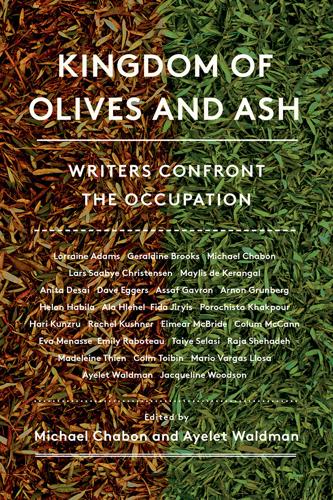
Kingdom of Olives and Ash: Writers Confront the Occupation
by
Michael Chabon
Published 29 May 2017
Fassouta, my village, for example, has 11,000 dunums (1 dunum equals 1,000 square meters) within the jurisdiction of its local council, yet only 650 dunums have been approved by the government for new building expansion since 1988. The result is overcrowding and having to leave and find homes elsewhere. But many Jewish communities forbid Palestinians from living or even working in them, and some Palestinians have had to resort to lawsuits to secure the right to buy an apartment if they happen to have Jewish neighbors. We are treated as pariahs, unwanted and unwelcome. In a recent example, a Jewish member of parliament advocated the separation of Arab and Jewish women in maternity wards of hospitals, and several medical institutions are reported to have taken heed.
…
Second, the Israeli state budget allocated for infrastructure and economic development in Arab towns and villages is a fraction of that allotted to Jewish ones. So are budgets for health, education, housing, and employment; the list goes on. There is a caveat that the state uses to propagate this practice: government budgets are allocated to each local authority based on the amount of tax revenue collected by that authority, including business and property taxes. With the number of employment initiatives and businesses in Arab municipalities being a bare minimum, the taxes collected are also small, compared with those collected in government-aided Jewish communities.

Evil Geniuses: The Unmaking of America: A Recent History
by
Kurt Andersen
Published 14 Sep 2020
Pornography is “a problem of pollution of the moral and aesthetic atmosphere precisely analogous to smoke pollution” and possibly an even greater danger to public health, so it was okay to outlaw smut. Bork declared elsewhere in the article that the quintessentially political act of burning an American flag shouldn’t count as free speech either, because the flag is, you know, “unique.” Likewise, he wrote that the Supreme Court decision that individuals’ rights to privacy included the right to buy contraceptives was “utterly specious” and “unprincipled.” Likewise, Bork ruled as a federal judge that the navy could fire a sailor for being gay because there was no explicit “constitutional right to engage in homosexual conduct”—although as a professor he’d also just argued for welcoming employers to Yale who discriminated against gays because Yale simply shouldn’t “ratify homosexuality.”
…
But then in the early 1980s, as cable and TV were about to become synonymous—a utility that almost everyone would pay for, like water and electricity—the big businesses that were taking over the industry saw an opportunity. They got Washington, in full deregulation mania, to radically deregulate their booming industry—specifically, to make it illegal for local authorities to regulate the fees the local cable monopolists could charge local citizens. The Senate passed the bill 87–9, the House on a voice vote, and Reagan signed it into law a week before his landslide reelection in 1984. Right away the cable operators did what monopolists do: in the first four years after deregulation took effect, the average cost of the most basic cable service rose 61 percent.
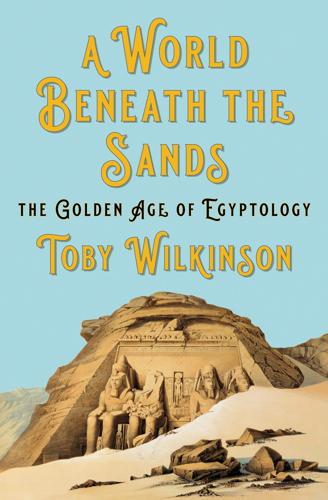
A World Beneath the Sands: The Golden Age of Egyptology
by
Toby Wilkinson
Published 19 Oct 2020
But before Grébaut resigned he saw to it that a raft of antiquities regulations was passed by royal decree. The new laws affirmed the state’s ownership of all antiquities, but allowed that a portion of the finds from an excavation could be given to the excavator to defray expenses, although the government reserved the right to buy back any object it wanted for the Museum. Petrie was furious – as much at Baring for permitting the regulations as at Grébaut for devising them – and even threatened to take French or German citizenship to spite the British government and secure more robust diplomatic support.70 It was never a very serious threat.
…
Still smarting from the London Convention, Muhammad Ali was casting around for a friendly European nation. The rising power of Prussia fitted the bill perfectly. As a result, Muhammad Ali’s firman, when it arrived, was unusually generous, giving Lepsius ‘unlimited permission to make all the excavations which I might think desirable, and with instructions to the local authorities to render me assistance’.18 Furthermore, the recent legislation prohibiting the export of antiquities was waived in Lepsius’s favour. So it was with confidence and a sense of possibility that the expedition left Alexandria, bound for Cairo and the start of an epic programme of work. Egypt’s capital had changed considerably since Champollion’s expedition fourteen years earlier.

The Deluge: The Great War, America and the Remaking of the Global Order, 1916-1931
by
Adam Tooze
Published 13 Nov 2014
The Chinese delegation had wanted a specific commitment to the integrity of the Chinese Republic, but Japan thought it better not to prejudge the question of the Chinese constitution.22 Nevertheless, this commitment went further than all previous guarantees in promising to uphold China’s political as well as its territorial integrity. In what they regarded as a major concession, Britain persuaded Japan to evacuate all its troops from the hotly contested Shandong Peninsula. Japan promised China the right to buy out the German railway lease over a 15-year period. Here, too, Tokyo’s retreat was in line with the strategic reorientation initiated by Hara and pushed forward by Takahashi. A year earlier, in the summer of 1920, Tokyo had once again faced a crisis in its China policy. Its favoured warlord Duan Qirui had been ousted as Prime Minister for the second time by the Zhili faction led by Generals Wu Pei Fu and Cao Kun.23 Amongst the Japanese army stationed in Manchuria, there were influential voices demanding that Japan’s Manchurian client Chang Tso-lin should use this opportunity to extend his power in the north-east and even as far as Mongolia.
…
In 1918 Austria and Germany confidently expected at least 1 million tons from their new ally. But by the end of April it had become clear that ‘exploiting’ the bread basket of the Ukraine would present more problems than these fantasies allowed. If they were to avoid the enormous costs of a full-scale occupation, Austria and Germany needed a cooperative local authority to collaborate with them. Having been driven out of Kiev, only to be restored courtesy of the German Army, the Rada needed a breathing space to re-establish itself. But the scale and urgency of Germany and Austria’s economic demands made this impossible.33 In Ukraine, as in the rest of revolutionary Russia, the only way to secure popular legitimacy was to cede possession of the land to the peasants.34 Over the summer of 1917 a nationwide land grab had redistributed the gentry’s estates.
…
The particulars, especially regarding electoral provisions, were further elaborated in Westminster committee and shepherded through Parliament by Sinha, who became the first Indian to be raised to the peerage, in 1919. Governmental authority in India was divided between a central executive, provincial governments and local authorities. Central and provincial governments were to be answerable to legislative councils constituted in part through nomination and in part through electorates of varying size. Significantly, by 1922, the British relinquished all official control over local government in India and the urban franchise was rapidly expanded.49 At the provincial level, the equivalent of medium-sized European states, the make-up of the electorate varied, with special representation being granted to landowners and urban business interests.
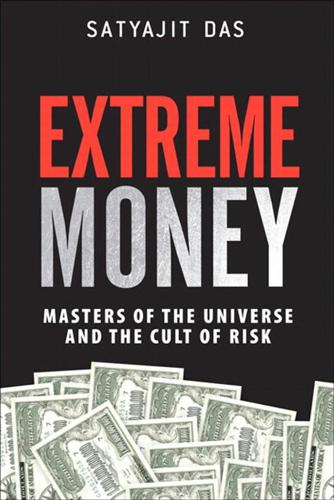
Extreme Money: Masters of the Universe and the Cult of Risk
by
Satyajit Das
Published 14 Oct 2011
In a typical accumulator contract, the investor commits to purchase, or accumulate, a fixed number of shares per day at a pre-agreed price (the accumulator price) for a fixed period, typically 3–12 months. The accumulator price is set typically 10–20 percent below the market price of the shares at the time you enter the contract. If the market price of the shares rises above a prespecified level (the knock-out price), the investor’s right to buy the shares knocks out, limiting upside gains. The knock-out price typically is set 5 percent above the market price of the shares at the time you enter the contract. If the market price remains below the knock-out price, the investor continues to accumulate the shares. If the market price falls below the accumulator price (typically a decline of more than 10–20 percent from the commencement of the contract), the investor must keep purchasing the shares, meaning unlimited downside risk.
…
Italian law only allows councils to restructure funding arrangements if it leaves them in a better position than before. The banks claimed that Milan was a financially sophisticated party and understood the transactions. In 2009, around 600 Italian town councils disclosed losses from derivative transactions entered into in the belief that they were hedges. Around 700 German local authorities were also found to have similar problems. In Austria the state-owned railway made a loss of €420 million on derivatives, suing a bank alleging that risks had not been disclosed. It is unclear whether Jefferson County, Harvard, and Milan had been fooled by bankers or were foolish in entering into transactions without understanding the risks.

A Pipeline Runs Through It: The Story of Oil From Ancient Times to the First World War
by
Keith Fisher
Published 3 Aug 2022
The other to reserve the concessions for exploitation by British money and in the interests of the Colony and of the Navy.’209 Over the summer of 1904 the Admiralty and the Colonial Office convened a Joint Committee, initially to decide on the terms for leasing Crown Lands in the West Indies, occasioned by early oil production on Trinidad and Barbados; but the Committee elaborated a colonial oil policy intended to be generally applicable across the empire.210 The Joint Committee took the view that competition from the ‘great syndicates’ would be detrimental to the ‘development of the oil industry in the West Indian colonies unless the support and the assistance of the Imperial Government is forthcoming’.211 It did not suggest direct state involvement, ‘unless urgent necessity should arise’, but private oil operators should be governed by the following principles: the enterprise should be British; the company must actively work its concession; refining should take place locally; the refinery should be geared towards the output of fuel oil to Admiralty specification; and the government should have the right to buy the oil at an acceptable price, to demand the expansion of naval fuel oil production and, if necessary, to take complete control of the concession.212 As the Oil Fuel Committee was compelled to consider also sources merely within British spheres of influence, in July 1904 Pretyman wrote to the Foreign Office, having been advised by Redwood that Persian territory being explored by D’Arcy’s First Exploitation Co. – for whom Redwood was also an adviser – held the prospect of being hugely prolific: it would be ‘most desirable that this concession should remain in British hands and especially from the point of view of supplies for the navy of the future’.213 In contrast to Burmah Oil, which was rapidly heading towards capturing nearly half of the large Indian kerosene market, the First Exploitation Co. had not even struck crude in commercial quantities.
…
He wrote, At … Tierra de Brea, or Piche, there is that abundance of stone pitch, that all the ships of the world may therewith be laden from thence, and we made trial of it in trimming our ships to be most excellent good, and melteth not with the sun as the pitch of Norway, and therefore for ships trading the south parts very profitable.168 Raleigh revisited the location in 1617, recording, This Terra de Bri is a piece of land of some 2 leagues long and a league broad, all of stone pitch or bitumen, which riseth out of the ground in little springs or fountains, and so running a little way, it hardeneth in the air and covereth all the plain … Here rode at anchor, and trimmed our boats …169 From the late 1500s Father Alvaro Alonso Barba had lived in Peru, and from 1624 he was based in Potosí (in present-day Bolivia), the economic capital of the huge Spanish silver-mining boom. The priest doubled as a metallurgist, and in 1637 he presented to the local authorities a report on the mining and chemical processing of the region’s minerals. His treatise, published by the Spanish Crown in 1640, included a chapter on Betunes, or mineral ‘pitches’, which included ‘asphalt’, ‘bitumen’ and ‘petroleum’. He reported that as the Spanish colonists had been occupied in the search for the wealth of Silver and Gold, but little attention has been paid to this and many other Curiosities.
…
The legal and political environments for big business in the US and in other countries were not, in practice, that different; in both, official policy was, in one form or another, friendly towards industrial combination, which tended to be organized with the close involvement of a country’s major banks.330 A more significant factor behind the initial emergence of Standard Oil’s foreign competitors was, as Asche put it, ‘the stimulation afforded by the support of their respective Governments’. As oil regions outside the United States began to be exploited, the local authorities typically promoted their fledgling domestic oil industries and manoeuvred to protect them from being taken over by established foreign companies, most obviously Standard. From the 1880s the colonial government of the Dutch East Indies had facilitated oil exploration by its nationals by providing military and other practical support, which the Royal Dutch Co. continued to receive after its incorporation by royal charter in 1890.
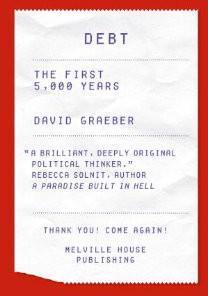
Debt: The First 5,000 Years
by
David Graeber
Published 1 Jan 2010
Economically, the apparatus is pure dead weight; all the guns, surveillance cameras, and propaganda engines are extraordinarily expensive and really produce nothing, and no doubt it’s yet another element dragging the entire capitalist system down—along with producing the illusion of an endless capitalist future that laid the groundwork for the endless bubbles to begin with. Finance capital became the buying and selling of chunks of that future, and economic freedom, for most of us, was reduced to the right to buy a small piece of one’s own permanent subordination. In other words, there seems to have been a profound contradiction between the political imperative of establishing capitalism as the only possible way to manage anything, and capitalism’s own unacknowledged need to limit its future horizons lest speculation, predictably, go haywire.
…
The creation of thousands of Hindu temples alone must have involved hundreds of thousands, even millions, of interest-bearing loans—since, while Brahmins were themselves forbidden to lend money at interest, temples were not. We can already see, in the earliest of the new law-codes, the Laws of Manu, the way that local authorities were struggling to reconcile old customs like debt peonage and chattel slavery with the desire to establish an overarching hierarchical system in which everyone knew their place. The Laws of Manu carefully classify slaves into seven types depending on how they were reduced to slavery (war, debt, self-sale …) and explain the conditions under which each might be emancipated—but then go on to say that Sudras can never really be emancipated, since, after all, they were created to serve the other castes.14 Similarly, where earlier codes had established a 15-percent annual rate of interest, with exceptions for commercial loans,15 the new codes organized interest by caste: stating that one could charge a maximum of 2 percent a month for a Brahmin, 3 percent for a Ksatriya (warrior), 4 percent for a Vaisya (merchant), and 5 percent for a Sudra—which is the difference between 24 percent annually on the one extreme and a hefty 60 percent on the other.16 The laws also identify five different ways interest can be paid, of which the most significant for our concerns is “bodily interest”: physical labor in the creditor’s house or fields, to be rendered until such time as the principal is cleared.

The Power Makers
by
Maury Klein
Published 26 May 2008
He also poured money into advertising in electrical journals to promote the virtues of the Thomson-Houston system. Like Edison, Coffin accepted the securities of fledgling central station companies as part payment for the equipment they bought; unlike Edison, he refused stock and took only bonds. These bonds he put into a series of trusts and offered Thomson-Houston stockholders the right to buy stock in the trusts. When these trusts were finally dissolved, they returned two dollars for every dollar invested.23 By 1886 all Thomson-Houston equipment was being sold by its own salesmen under the company’s own name. Coffin used the funds from the sale of trust stocks to enlarge the Lynn factory and to buy smaller rival firms, some of which he first intimidated by suing them for infringing Thomson’s patented regulator.
…
Although he won widespread praise for his wartime work, Insull was obliged to neglect his companies during those years. By 1919 he found some of them struggling because of strains imposed by the war.26 During the war a political movement gained momentum in Illinois to strip the newly created State Public Utility Commission of its regulatory powers and return them to local authorities in the guise of “home rule.” As wartime costs spiraled, utilities found themselves squeezed and pleaded for rate increases that were long delayed or not granted. By January 1919 no fewer than seventy-one transportation companies had gone into receivership, with many others not far behind. The political imbroglio over rates and service affected Insull’s companies in different ways.
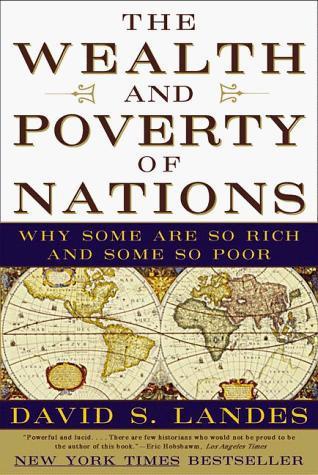
The Wealth and Poverty of Nations: Why Some Are So Rich and Some So Poor
by
David S. Landes
Published 14 Sep 1999
In vain: when those squatter farmers gathered for an auction sale, rifles in hand, it took a foolhardy agent to flout their interests. So Congress passed in 1830 a law that just about granted indemnity to squatters, which only encouraged the practice; and then in 1841 a general “pre-emption” law made squatting legal and gave the occupant the right to buy his holding at the minimum price.16 A big exception was made to encourage railway construction. New lines were granted land along the right-of-way, and these in turn sought generally to sell them to independent farmers. These were preferred, not because they were more lovable, but because they generated more freight than ranchers.
…
On the other side of the peninsula, after planting themselves at Madras, the English moved north into the Bay of Bengal and the valley of the Hugli River. There, beginning in 1690, they built their own commercial city on the territory of a tiny village called Calcutta. The key was the purchase in 1698 of a kind of “feudal” privilege (zamindari rights of tax collection). These rights, though flouted at first by local authorities resentful of European intrusion, were increasingly honored as Indian merchants and officials came to depend on English trade, assistance, and goodwill.2 In all of this, the name of the game was buying interested friendship and collaboration. Begin with the big merchants and the courtiers of the Great Moghul.

Egypt
by
Matthew Firestone
Published 13 Oct 2010
There are several queues to brave before entering, which in peak season can start to form an hour before opening time. At busy periods, the fivefold admission procedure is as painfully slow as it sounds: queue near the gate to pass through a metal detector and have your bags X-rayed queue at the booth to your right to buy a ticket queue at the cloakroom on the left to leave bags, cameras and videos queue at the automatic ticket barriers to enter the building queue inside for a second metal detector and have your bags searched again. Note that the Royal Mummy Room (adult/student E£100/50, tickets from museum upper fl, beside Room 50; 9am-6.20pm) closes before the rest of the museum.
…
Women should note that at everywhere but the beaches owned by Western hotels, modesty prevails and covering up when swimming is recommend – wear a baggy T-shirt and shorts over your swimsuit. Mamoura Beach (Map), about 1km east of Montazah, is one of the better city beaches, with a few small waves rolling in. Local authorities are trying to keep this suburb exclusive by charging everyone who enters the area E£3.25, with a further fee of E£8 to get onto the sand, but it’s still jammed during high season. There’s a much less crowded private beach with nice frond-type umbrellas, at E£41 per person or E£80 for a family.
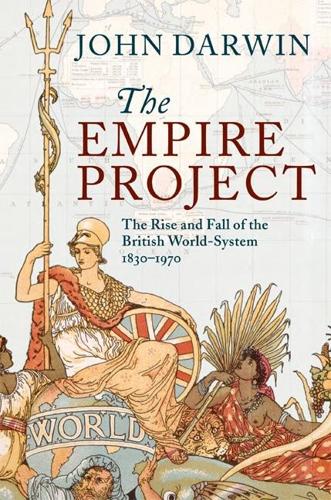
The Empire Project: The Rise and Fall of the British World-System, 1830–1970
by
John Darwin
Published 23 Sep 2009
Agency houses dealt with imports and exports but also acted as bankers to Europeans working in India and managed plantations and processing plants (in jute or indigo) for their European owners. Agency houses spread from India into Burma and other parts of Southeast Asia in the first half of the century. When direct British trade with China (and the right to buy tea) ceased to be an East India Company monopoly after 1833, British houses (with Jardine Matheson in the van) were quickly set up there.45 This furious commercial activity had created by mid-century a worldwide network of international business centred on Liverpool, Glasgow and, above all, London.
…
Gutzlaff had gone first to the Dutch East Indies where he made contact with Chinese traders whose junks still carried much of the commerce of Southeast Asia. In 1831, he made the hazardous journey up the China coast (then forbidden to European travellers) as far north as Tientsin, the port for Peking, and ingratiated himself with the local authorities by his medical skills. By the time he returned to Macao (to which European traders were required to withdraw at the end of the trading season in Canton), he had acquired a wider knowledge of contemporary China and Chinese than any other Westerner, and a brimming faith in the scope for conversion.
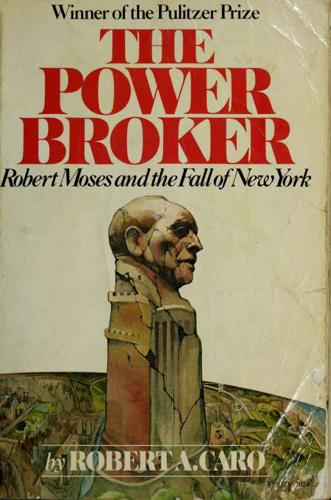
The power broker : Robert Moses and the fall of New York
by
Caro, Robert A
Published 14 Apr 1975
So under the "Joint Program," the Port Authority agreed to pay for the construction of the bridge— under a contract which said that although the Port Authority would pay for it, the Authority would have nothing else to say about it. The Triborough Authority would lease the great span from the Port Authority, operate it, maintain it and control it absolutely—and would have the right to buy it as soon as it had accumulated enough cash to do so. Moses would, in other words, be building the bridge with his erstwhile rival's money—which would leave him with the money to build another bridge, the Throgs Neck. To get the Narrows Bridge built, moreover, the Port Authority had to give up another bridge that it had been anxious to build; it had to allocate for the Narrows span the money it had been planning to spend on the 125th Street span, and formally agree to "defer" that span indefinitely.
…
Commission shall have power to improve, maintain and use the lands of the municipalities adjoining the parks and parkways of the Commission, with the consent of the local authorities having jurisdiction thereof." The paragraph appeared innocent enough. Since the commission was operating in Nassau and Suffolk counties, what legislator would stop to consider that some lands on Long Island might be owned by New York City and that, once the act was passed, the Long Island State Park Commission would not need the consent of Long Island officials to use that land because "the local authorities having jurisdiction thereof" would not be Long Island officials but New York City officials?